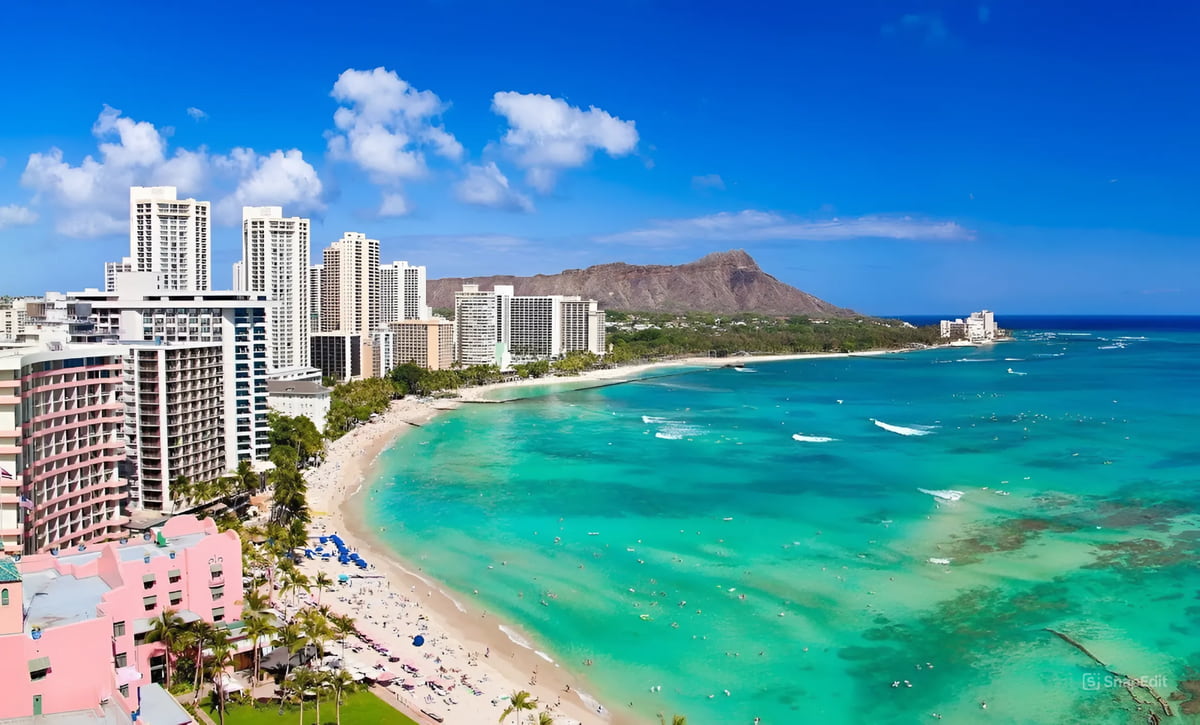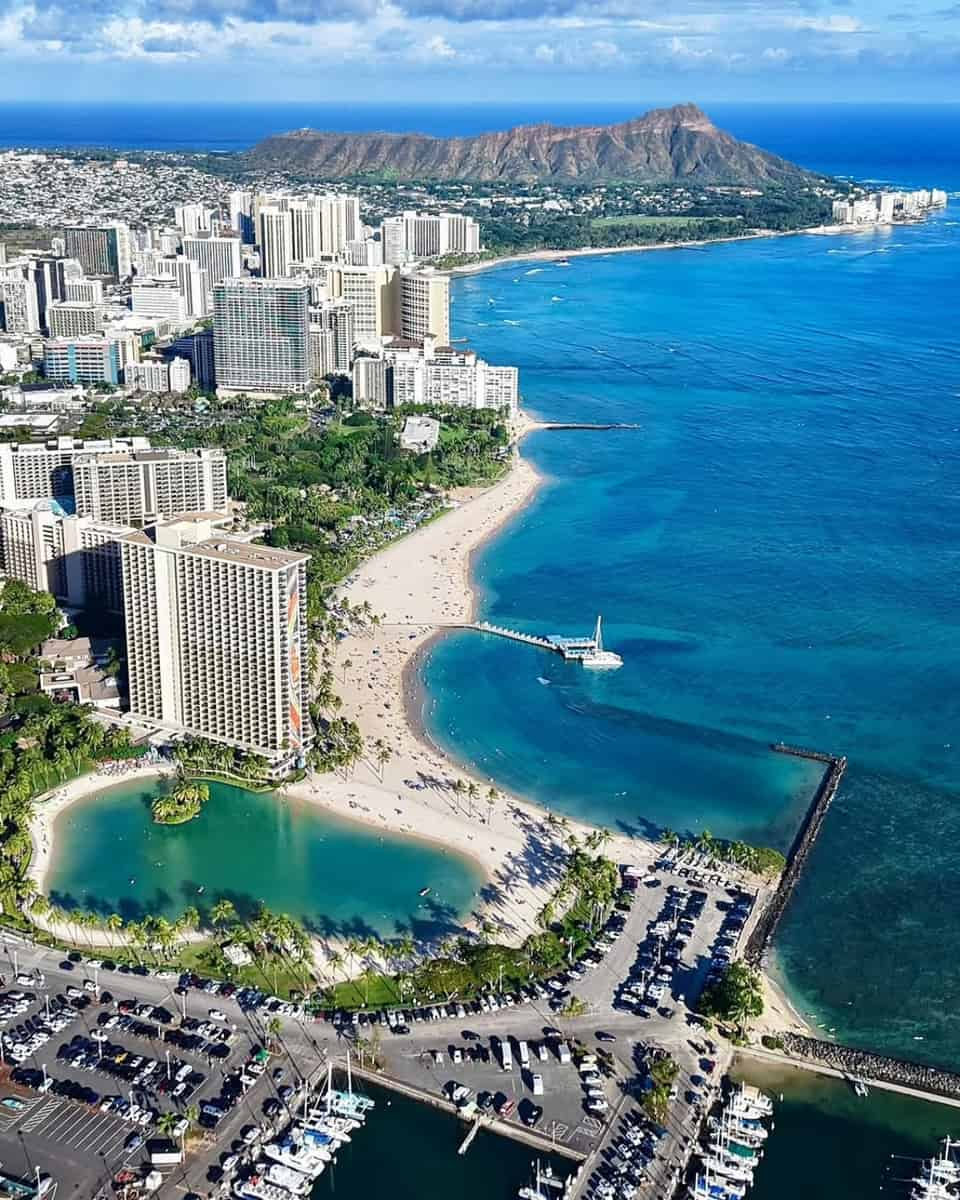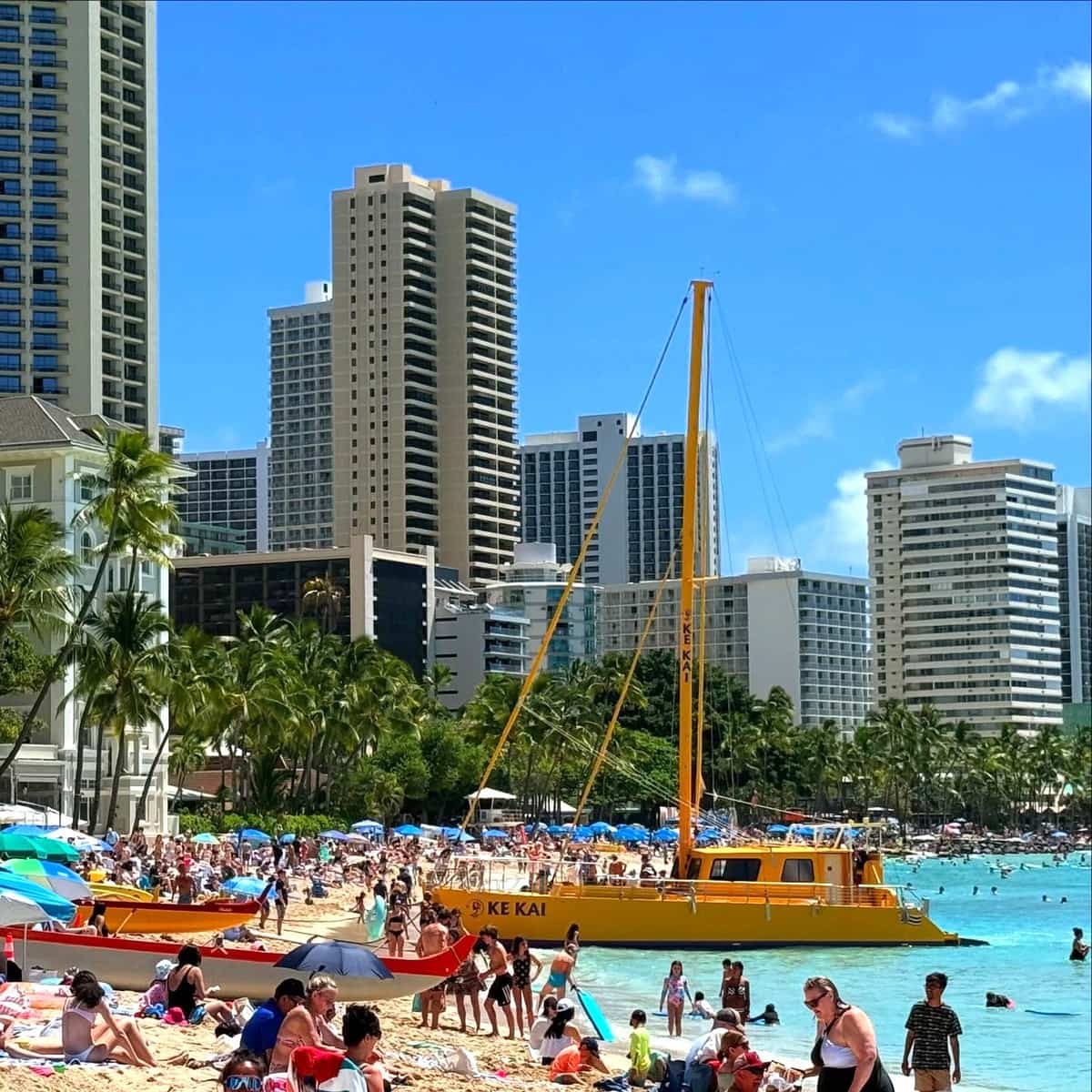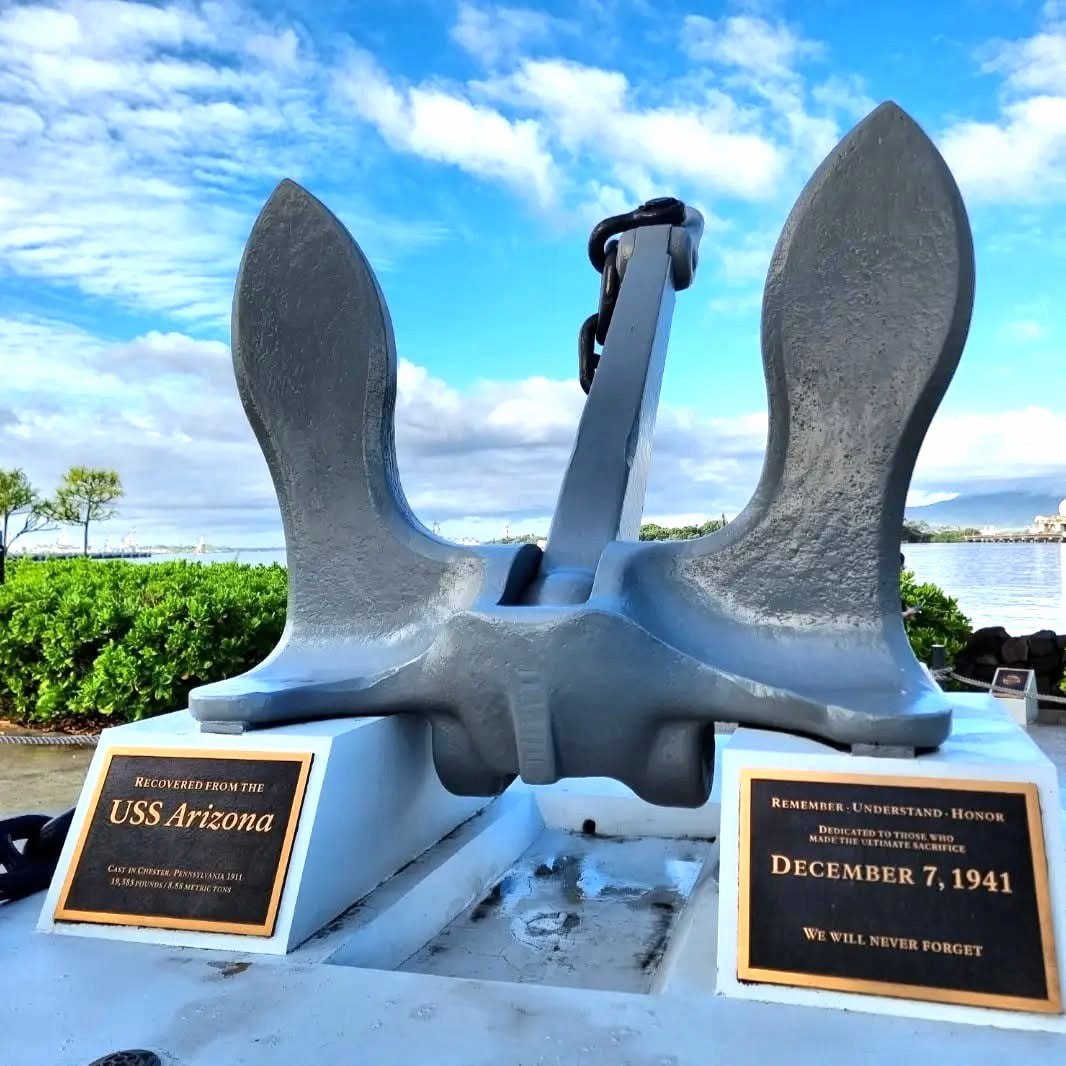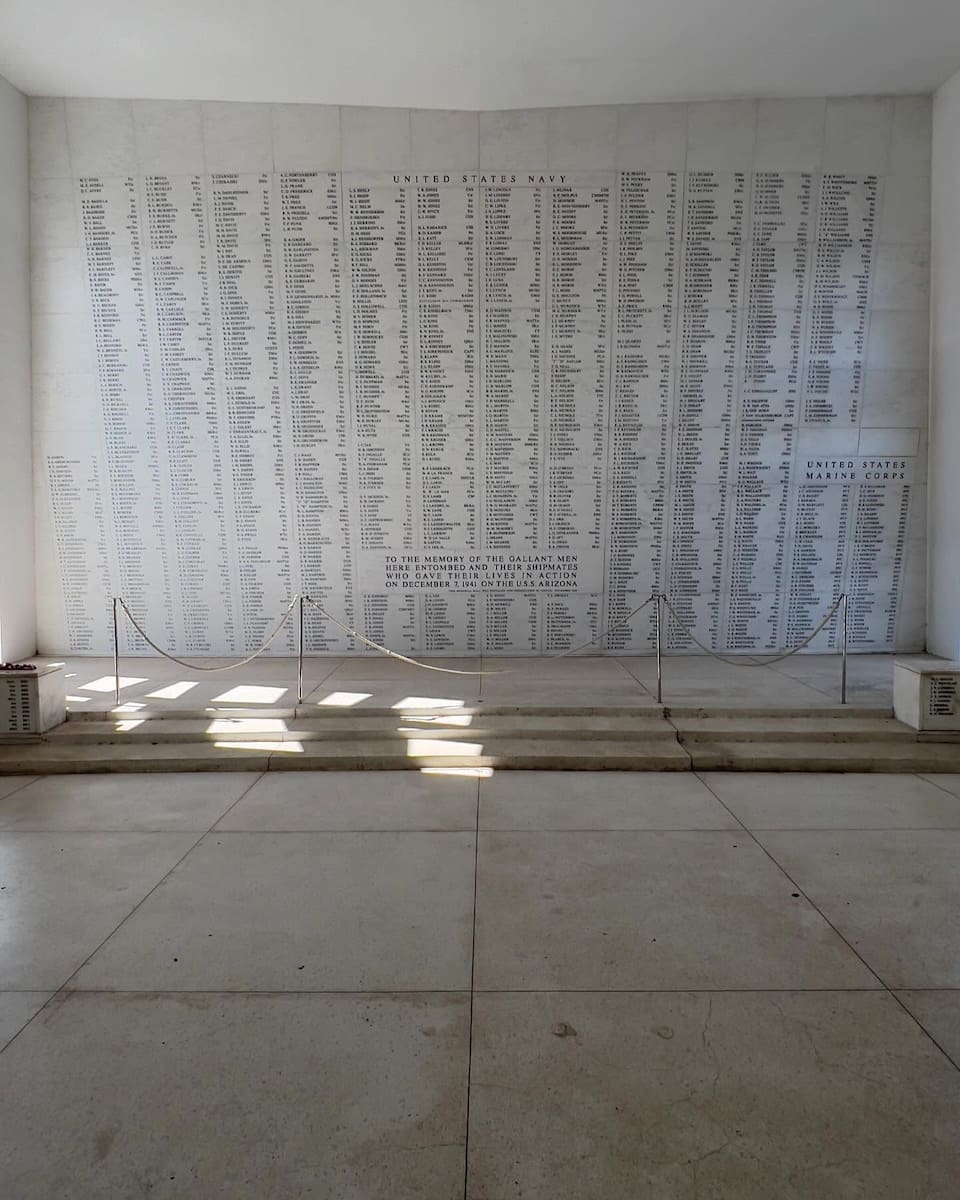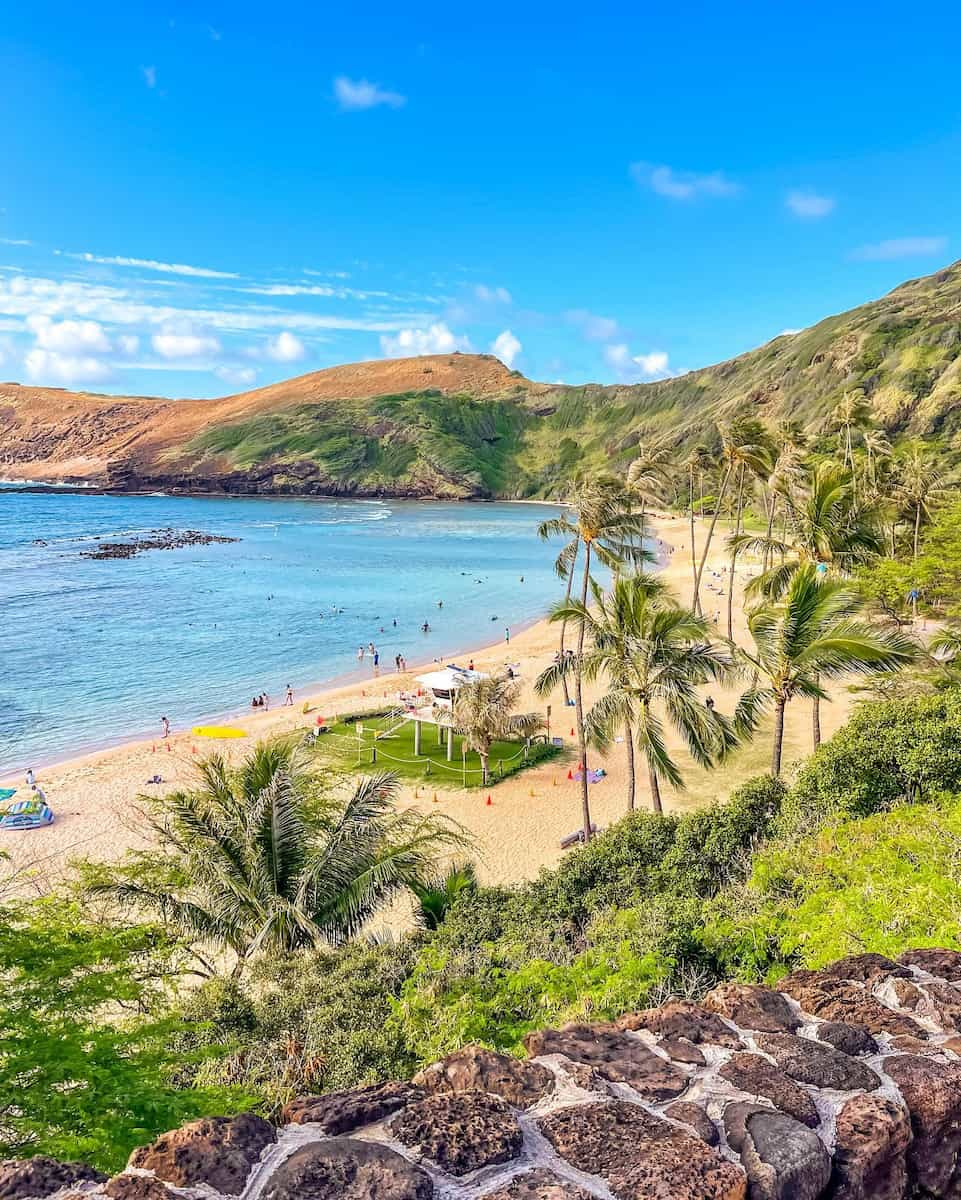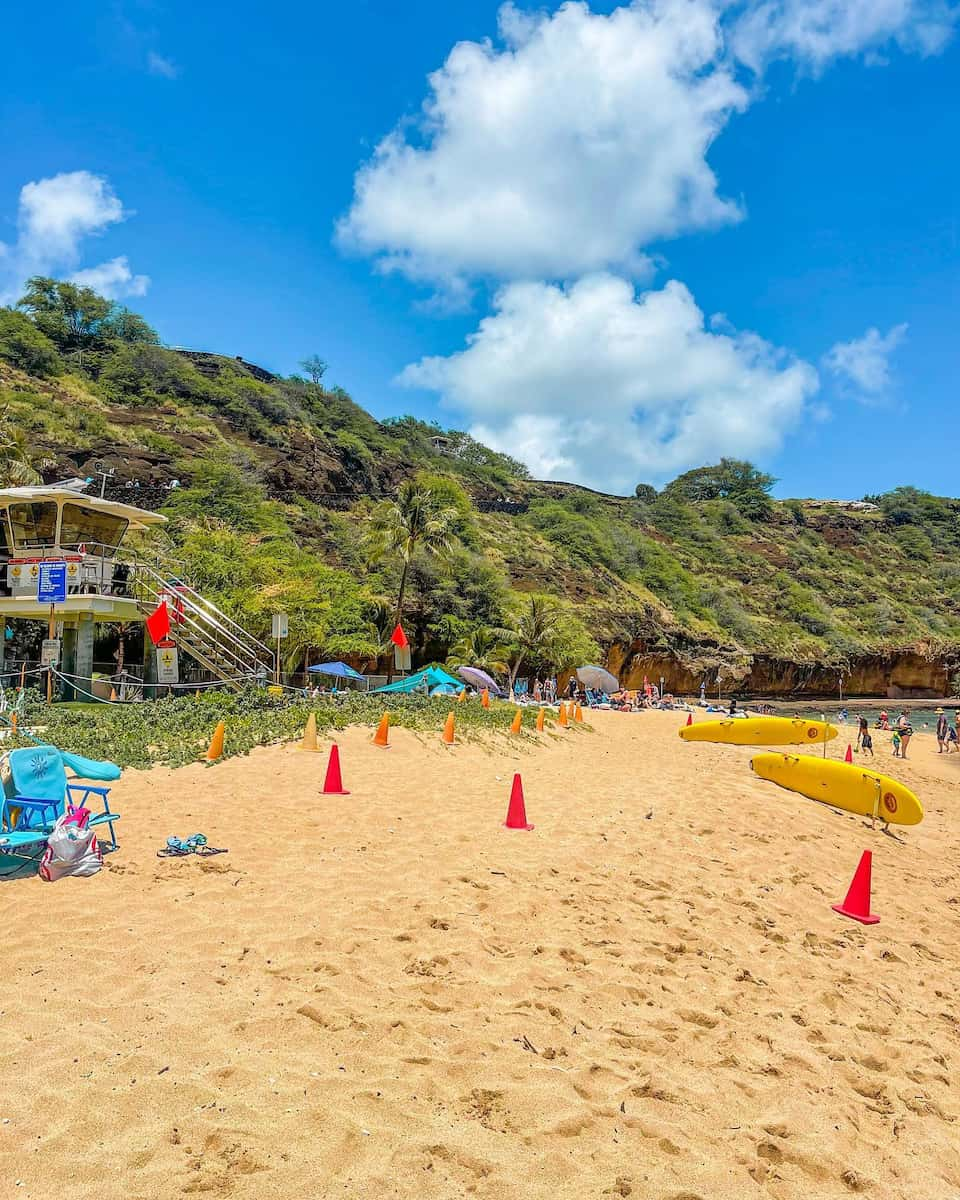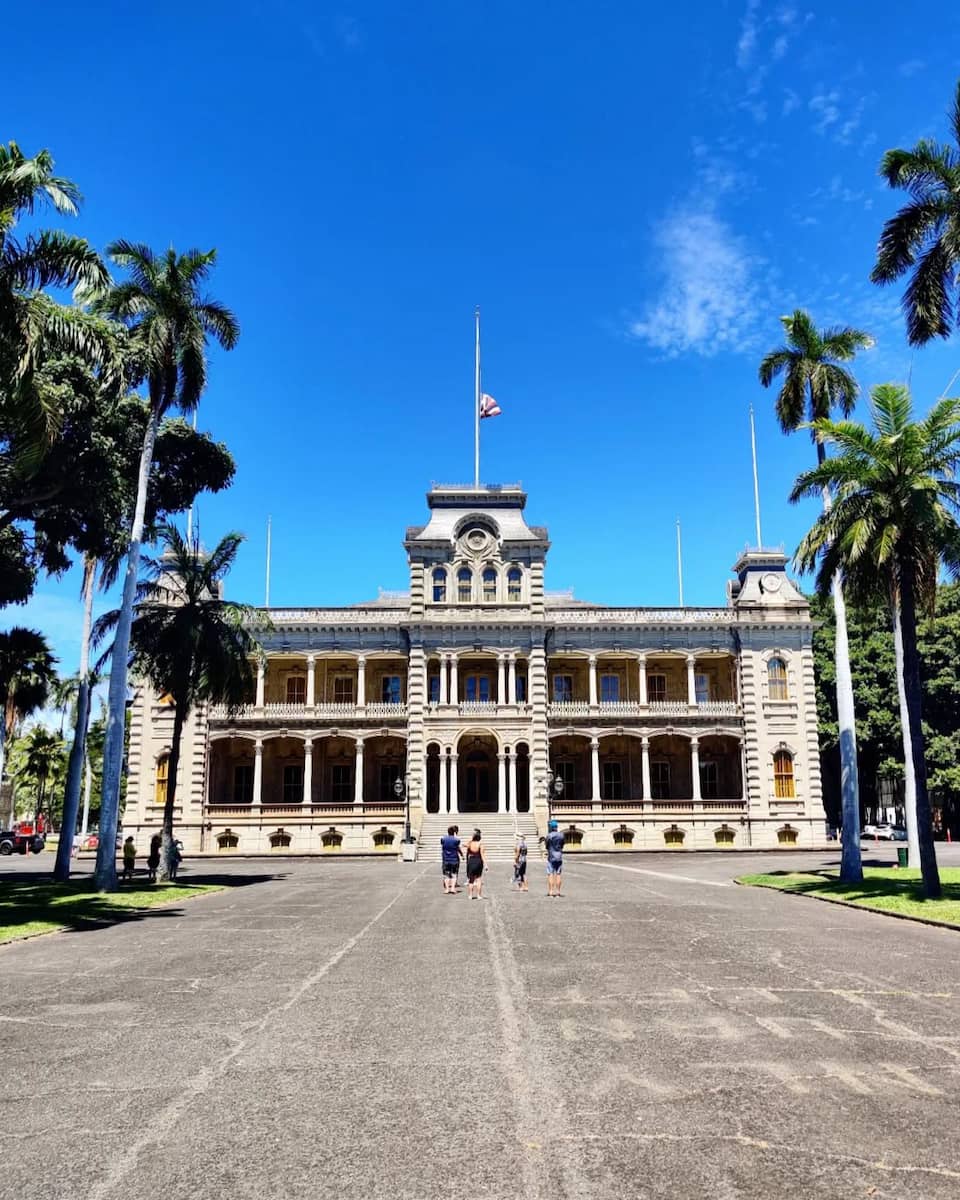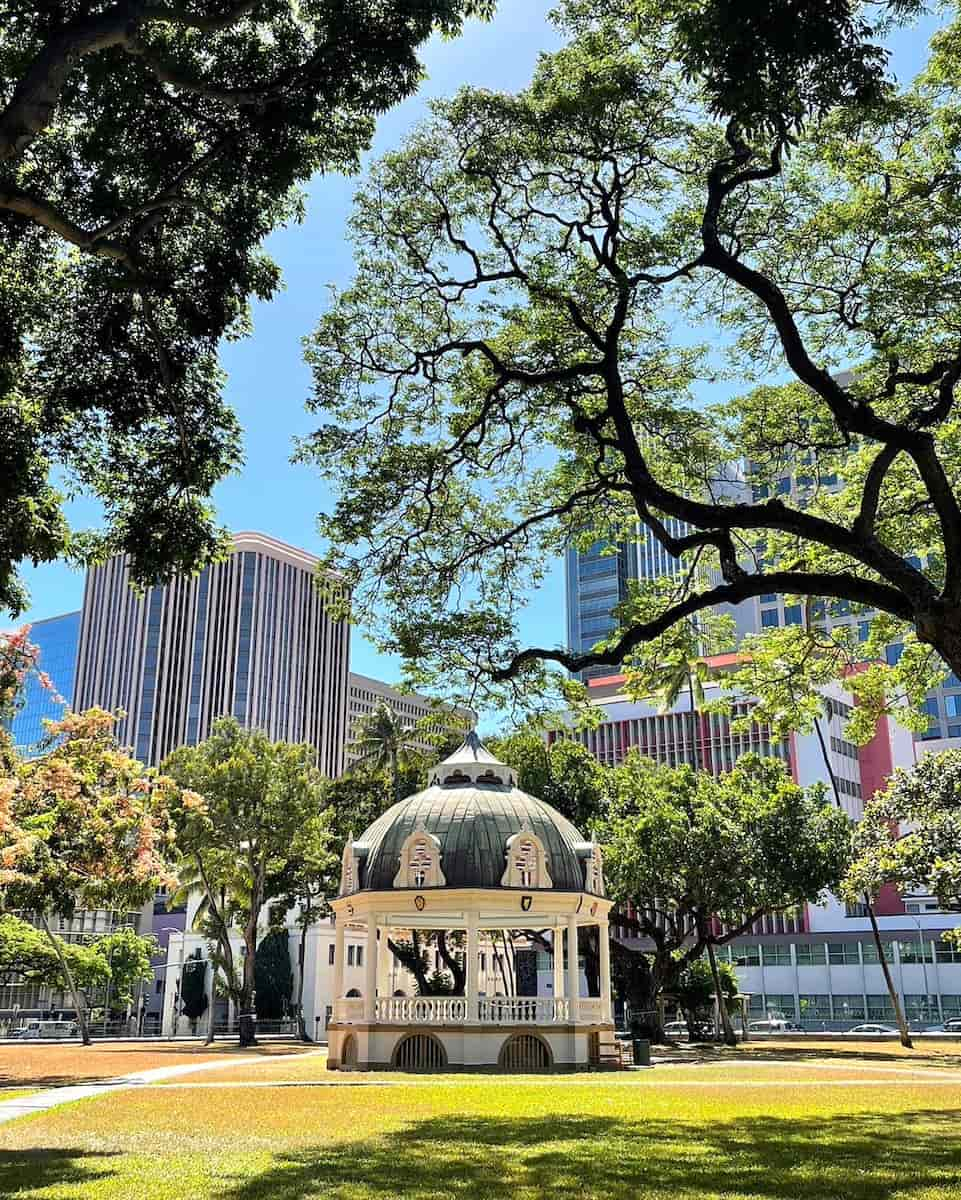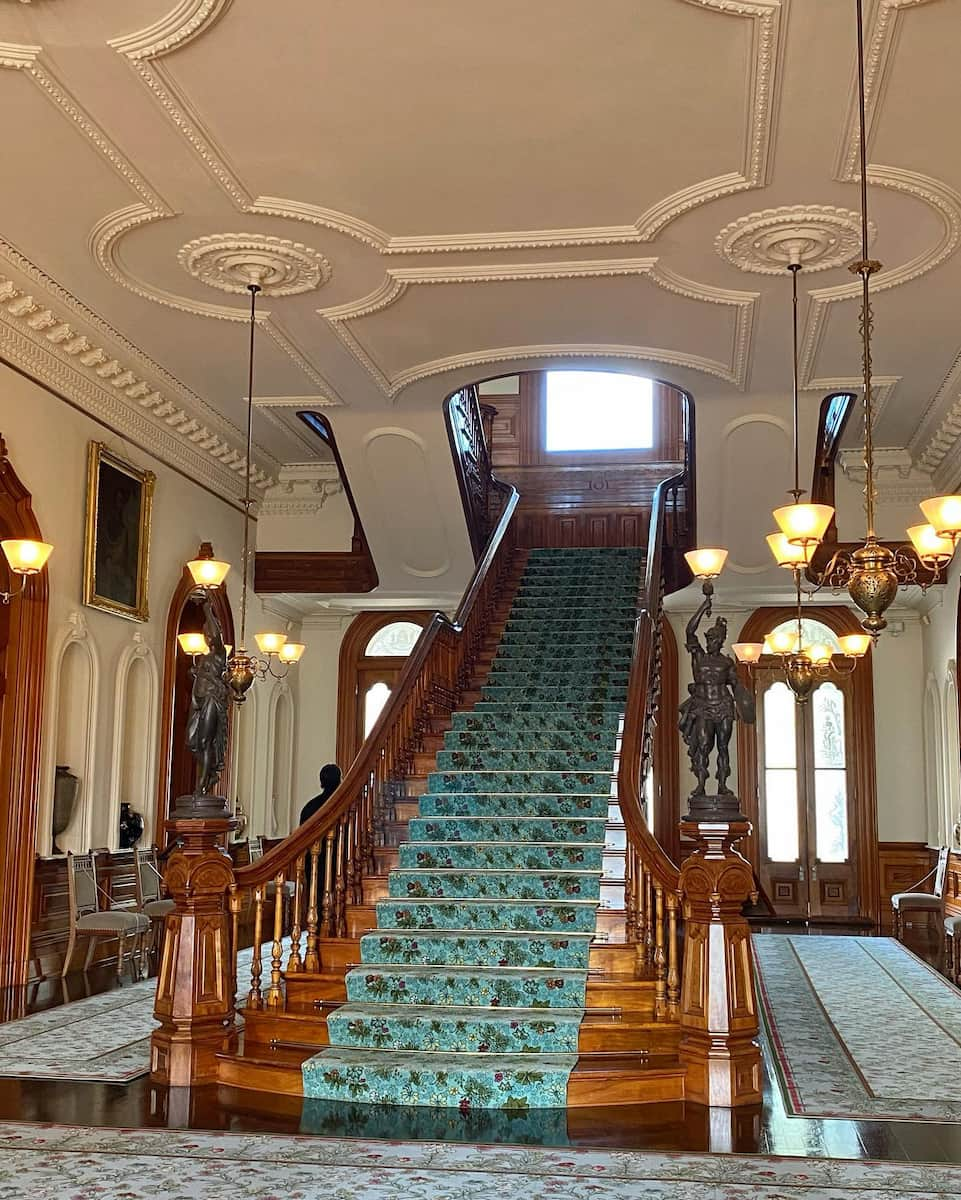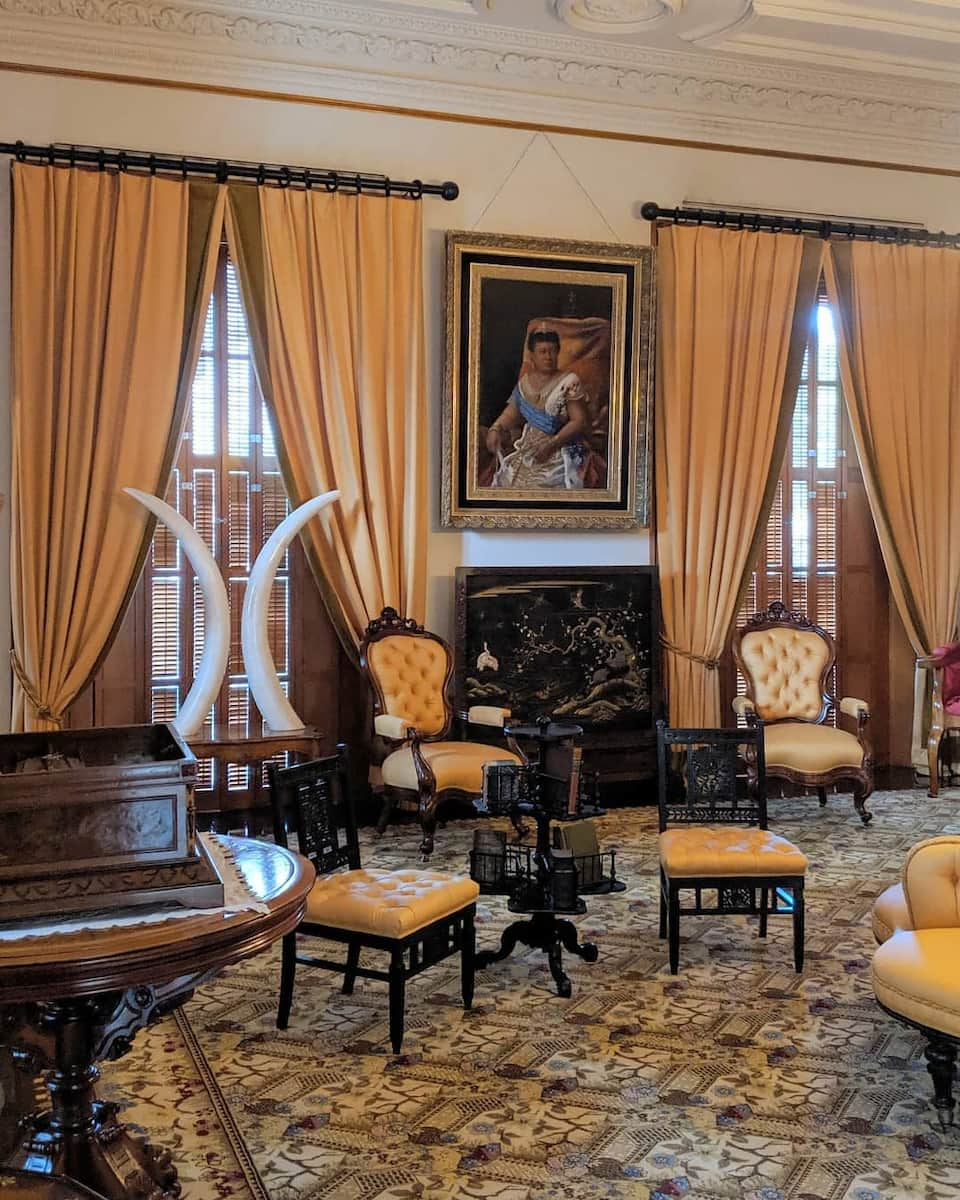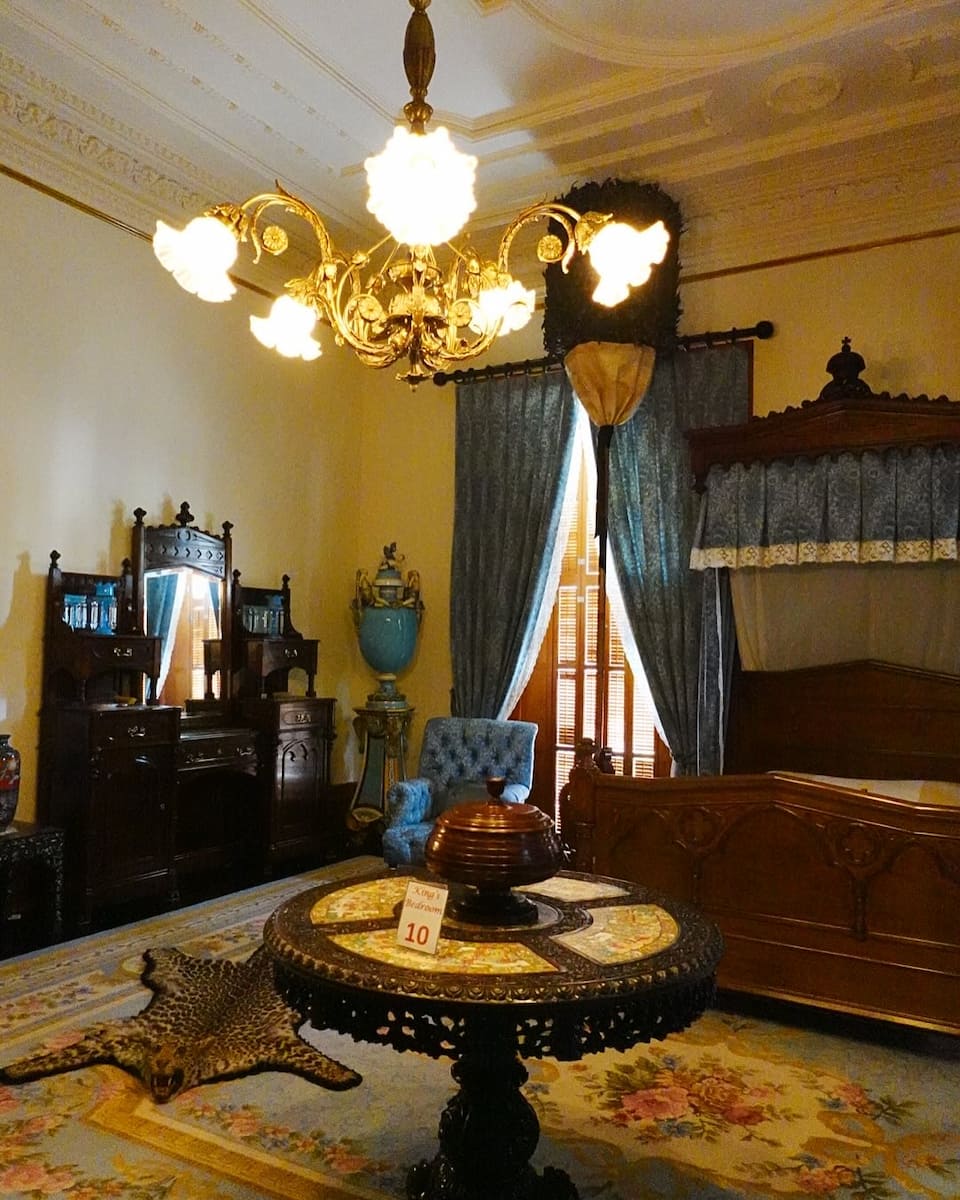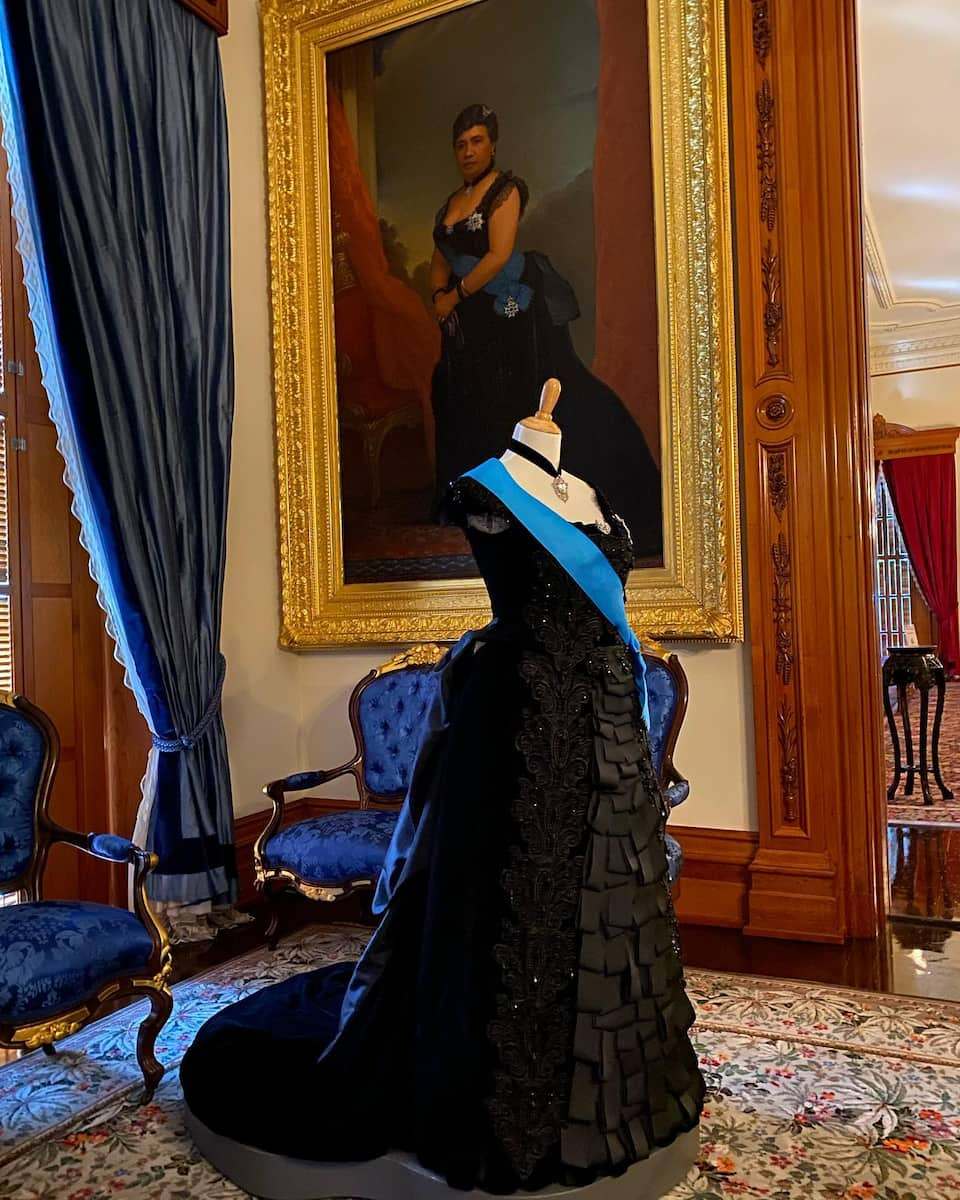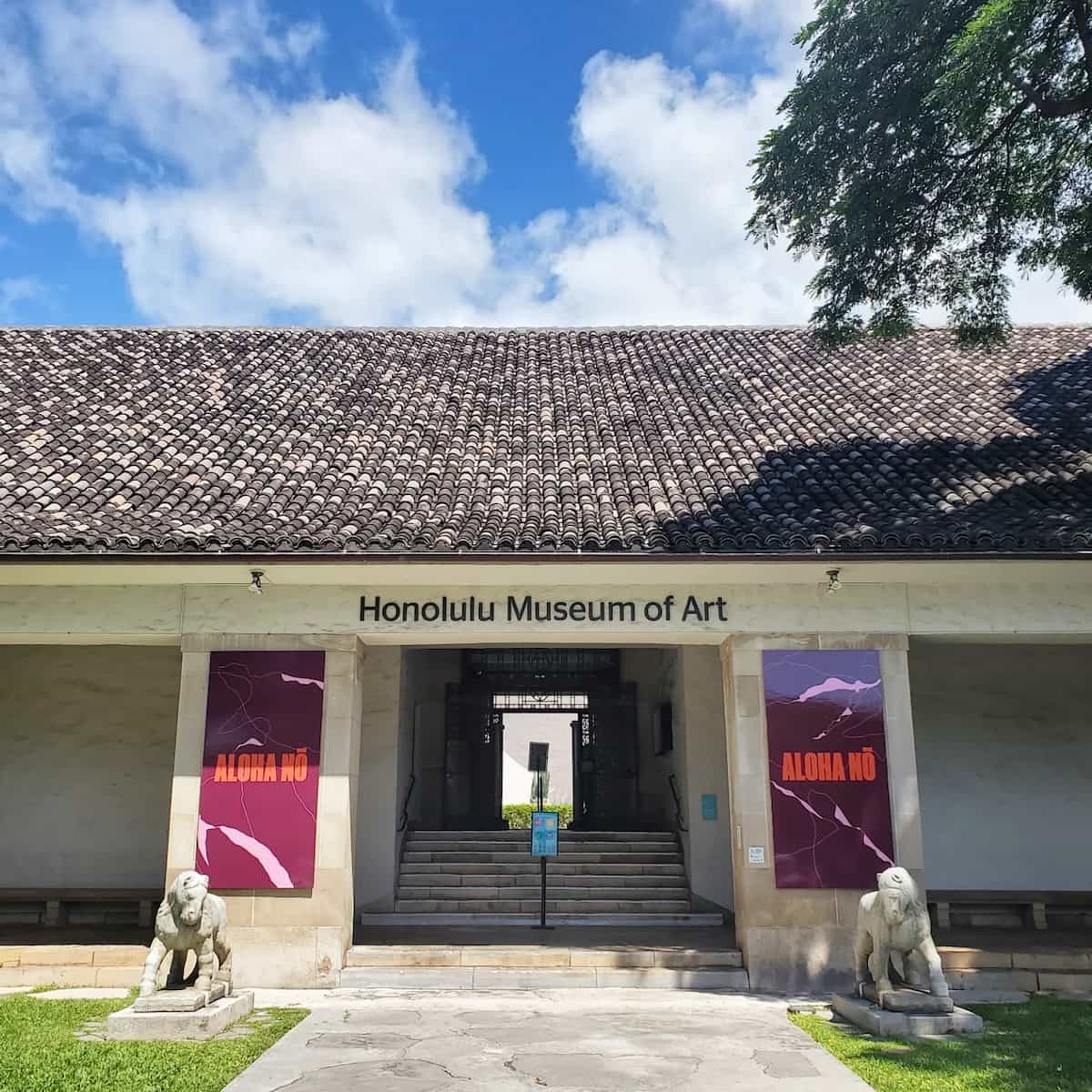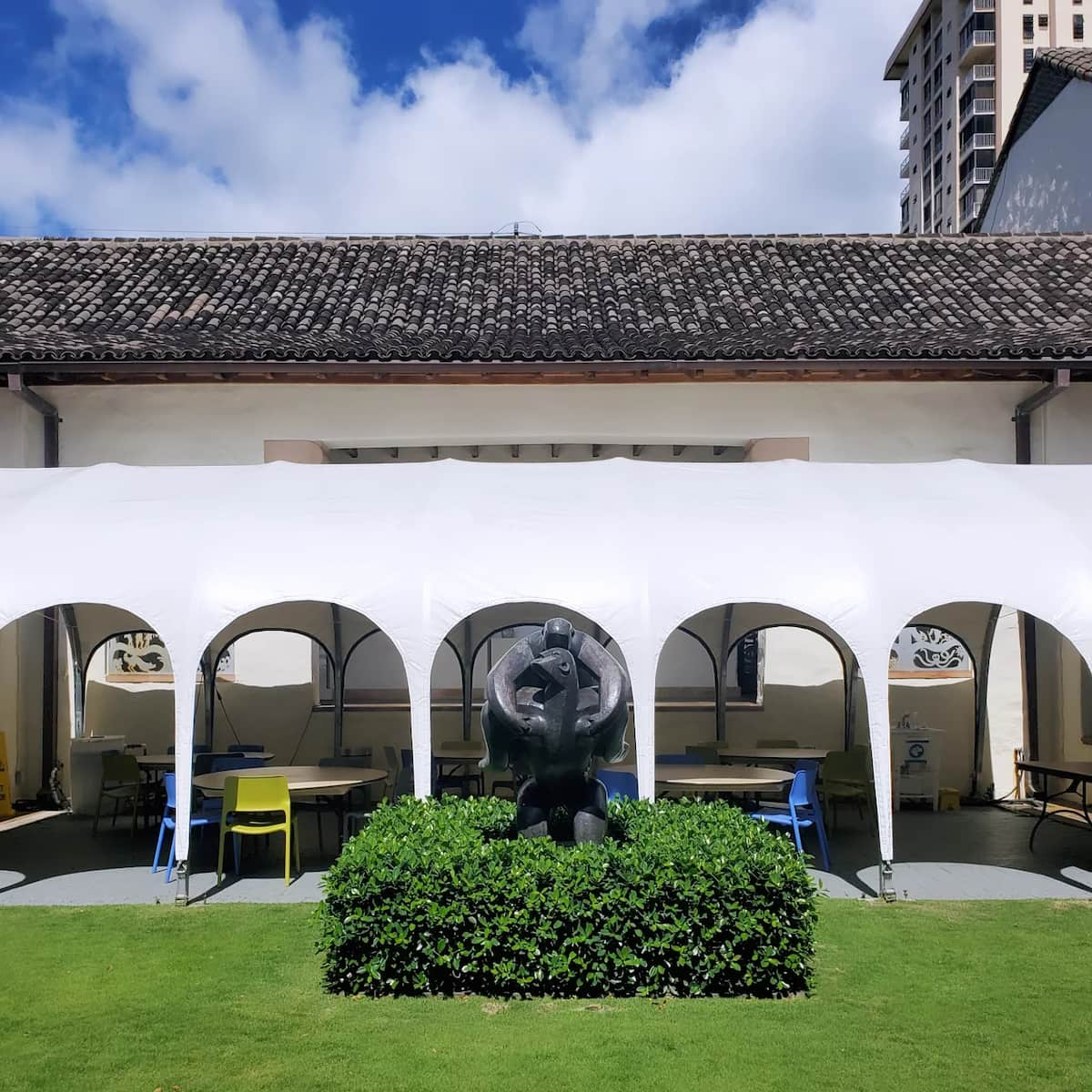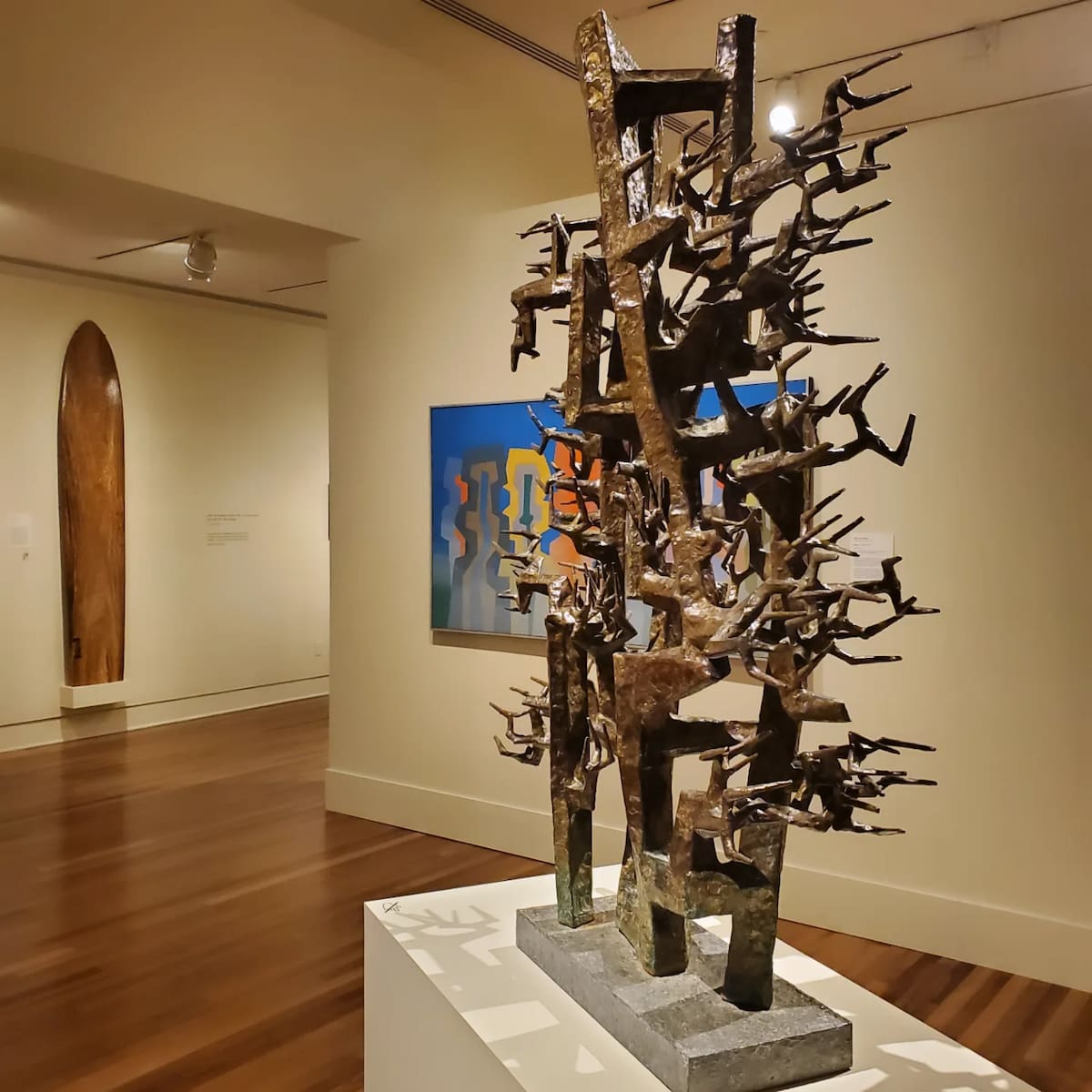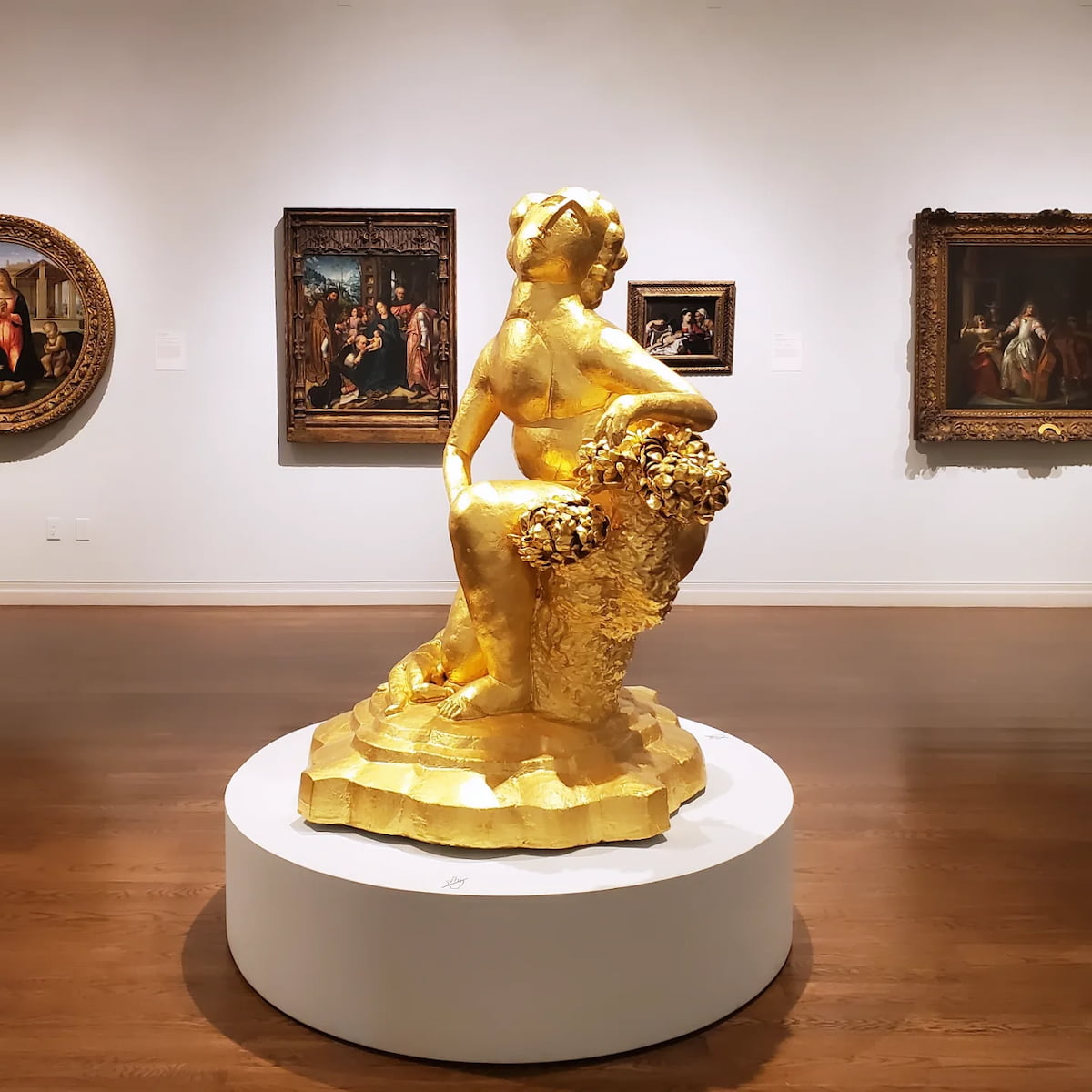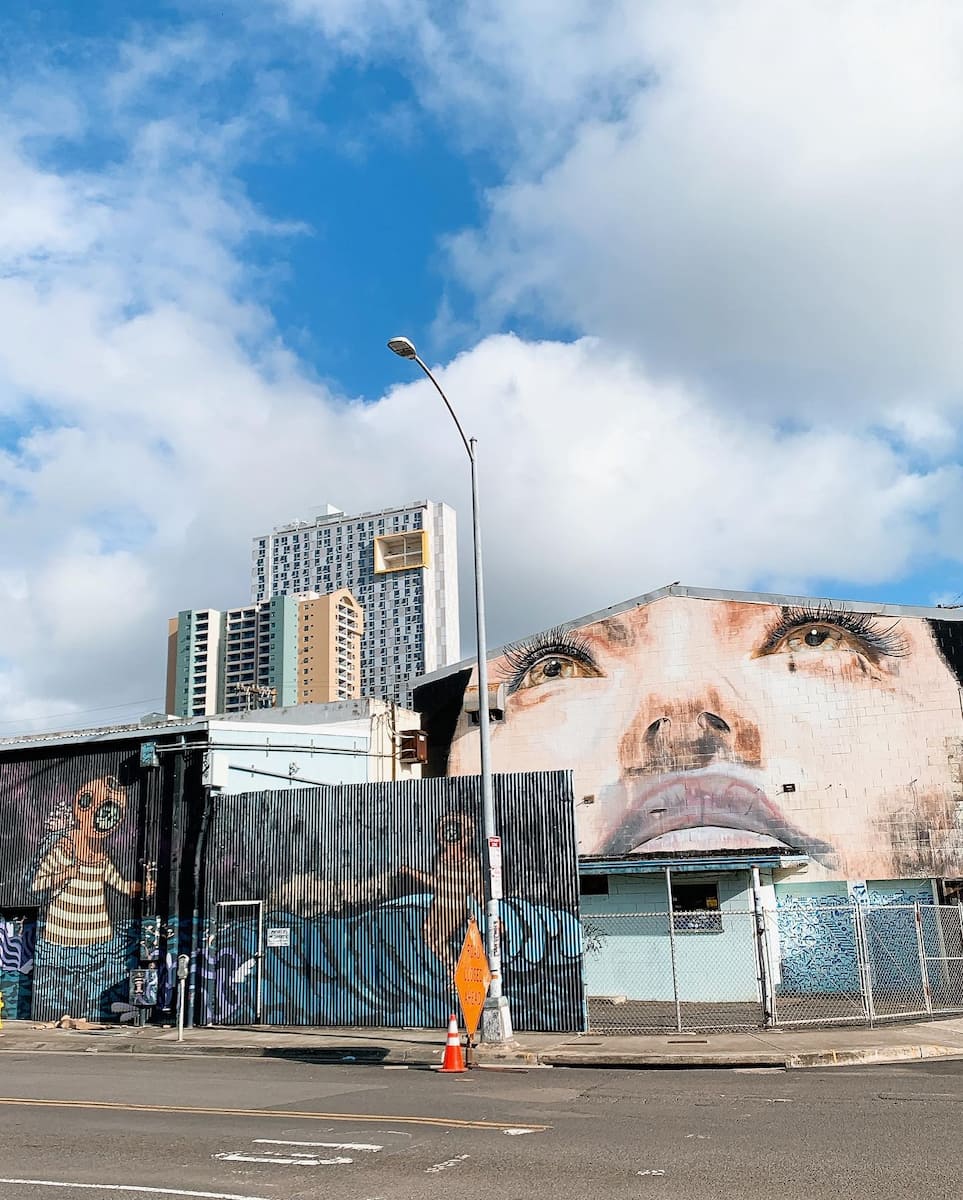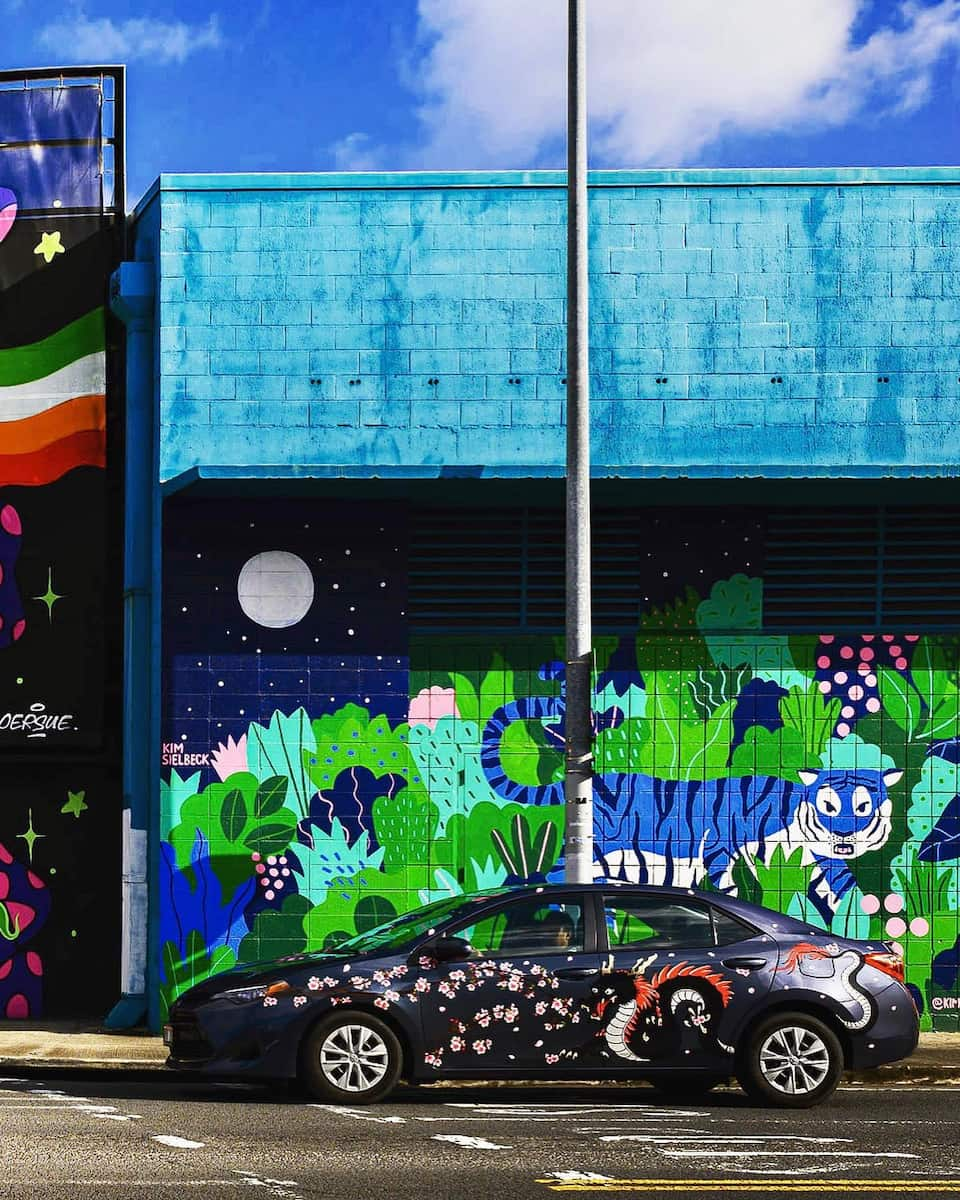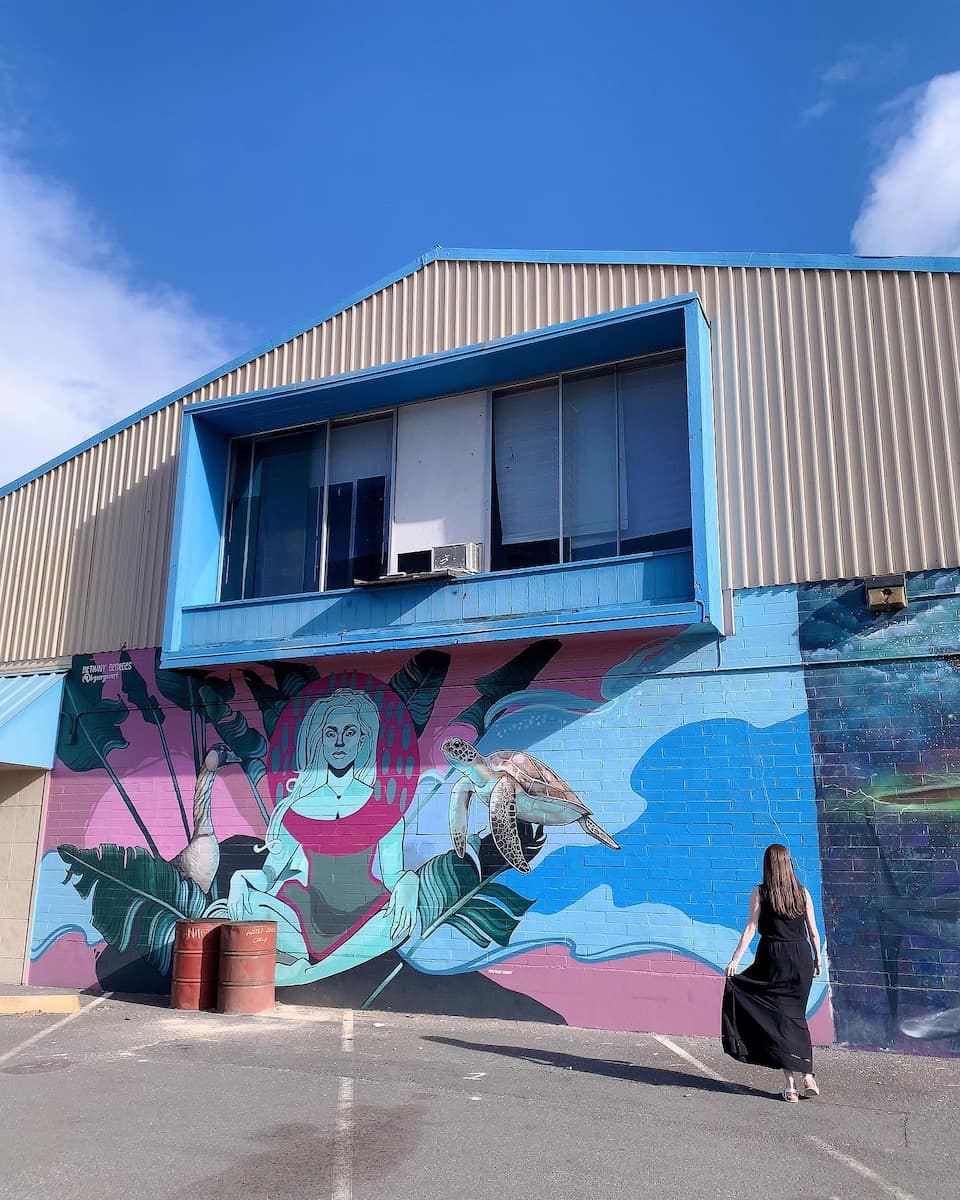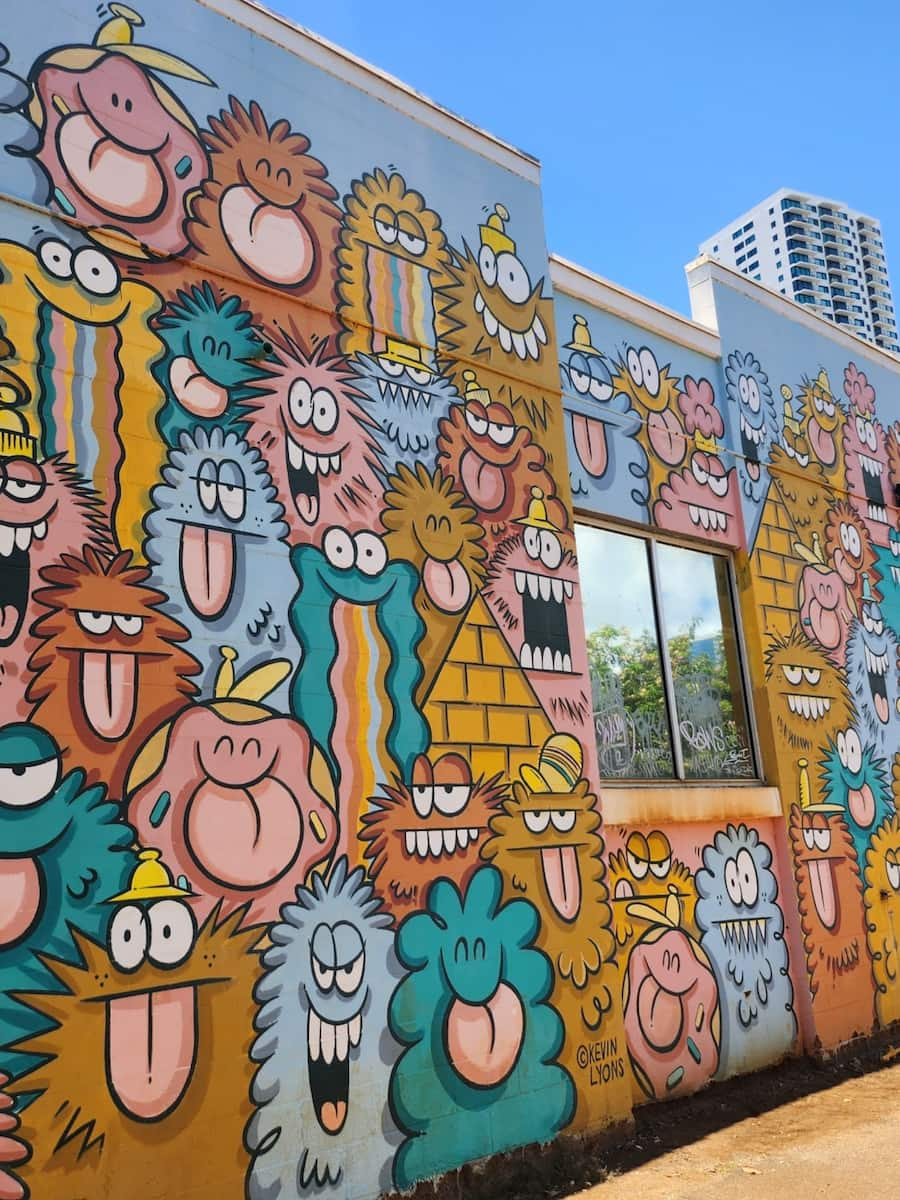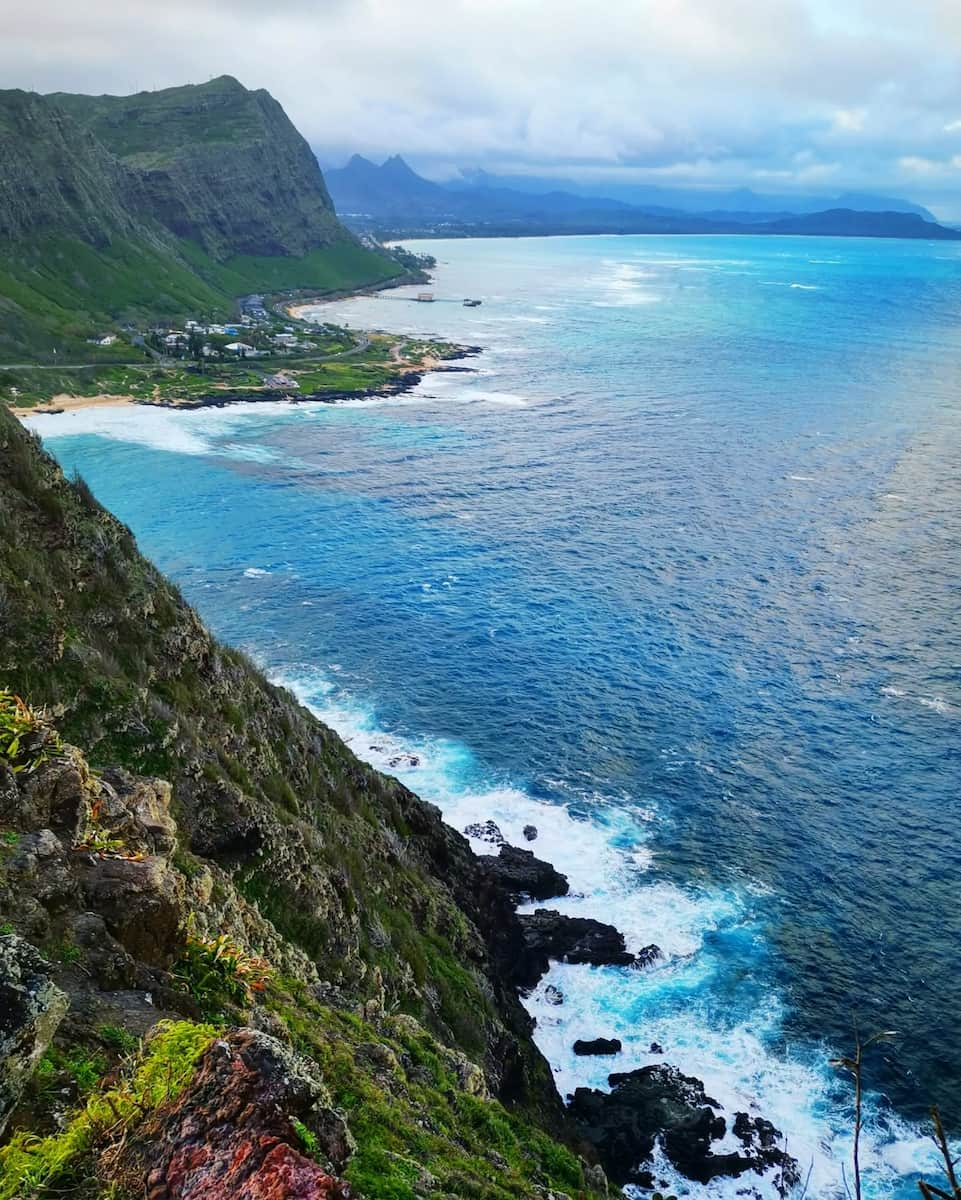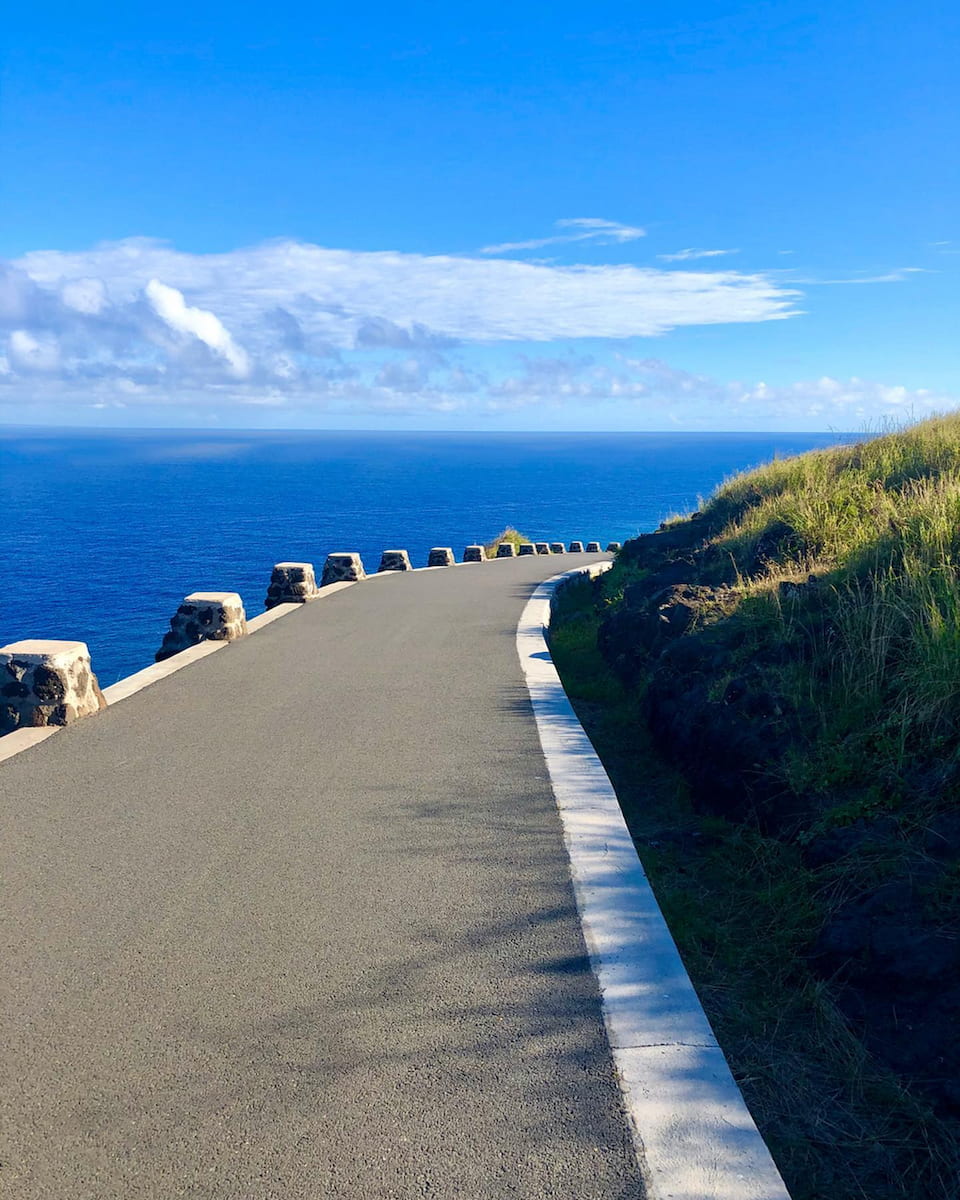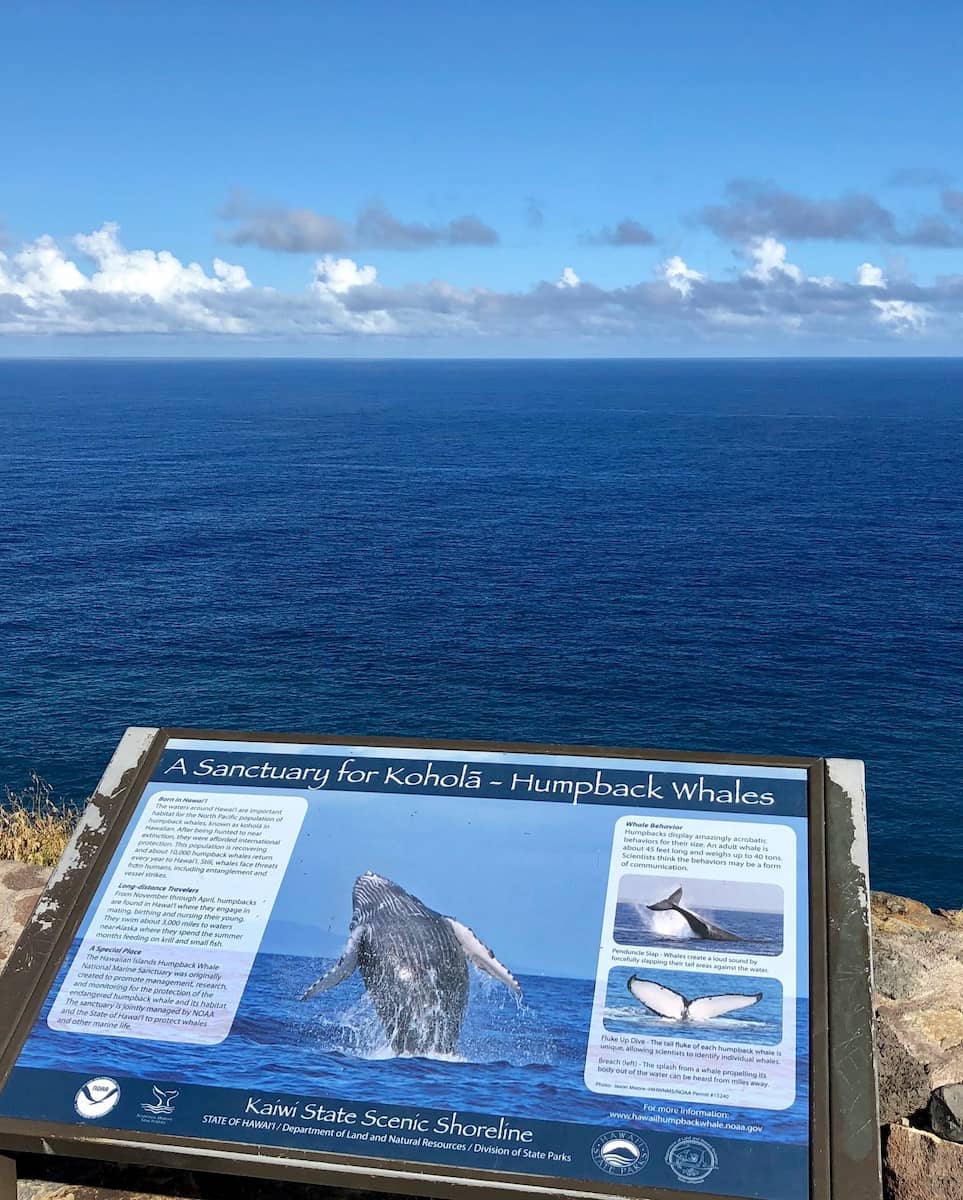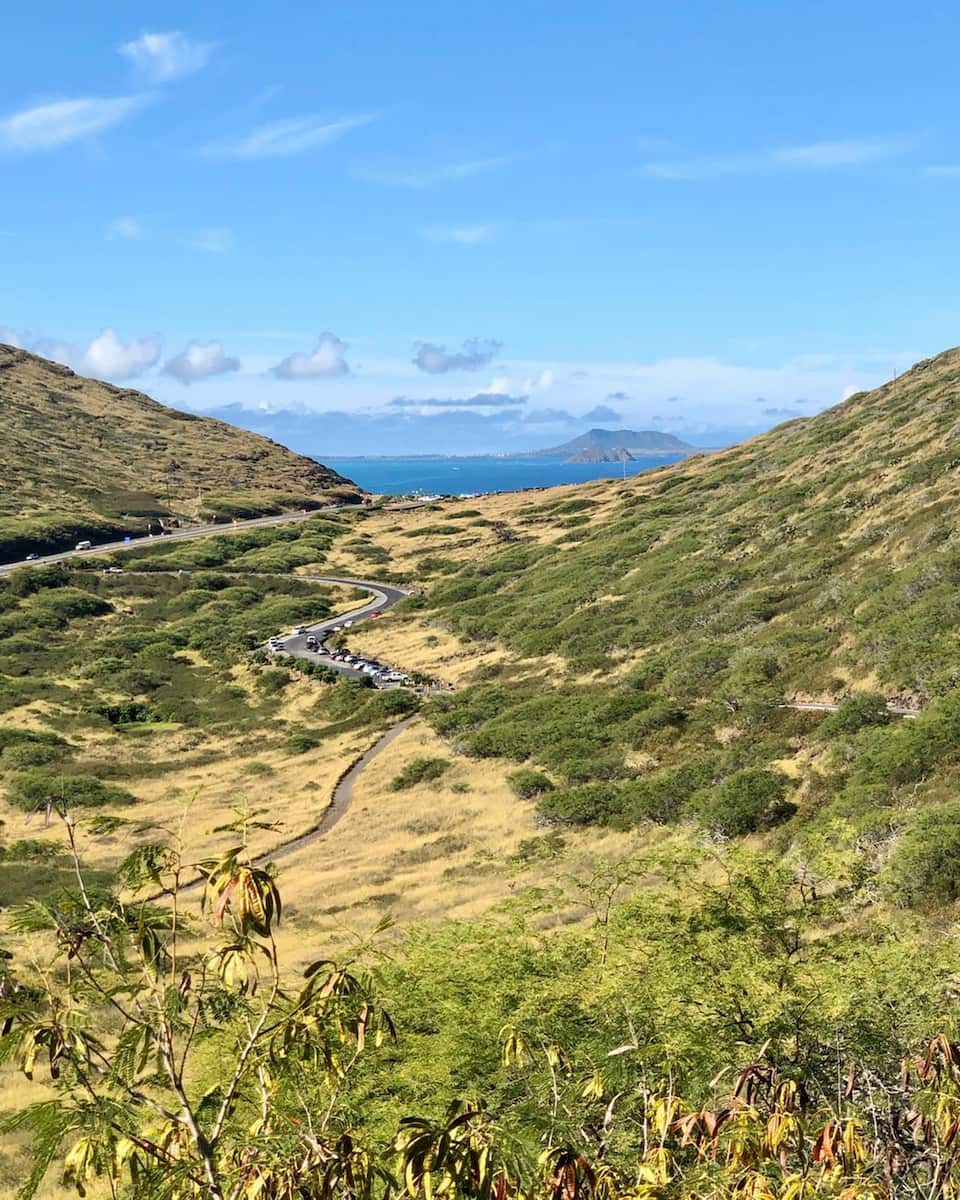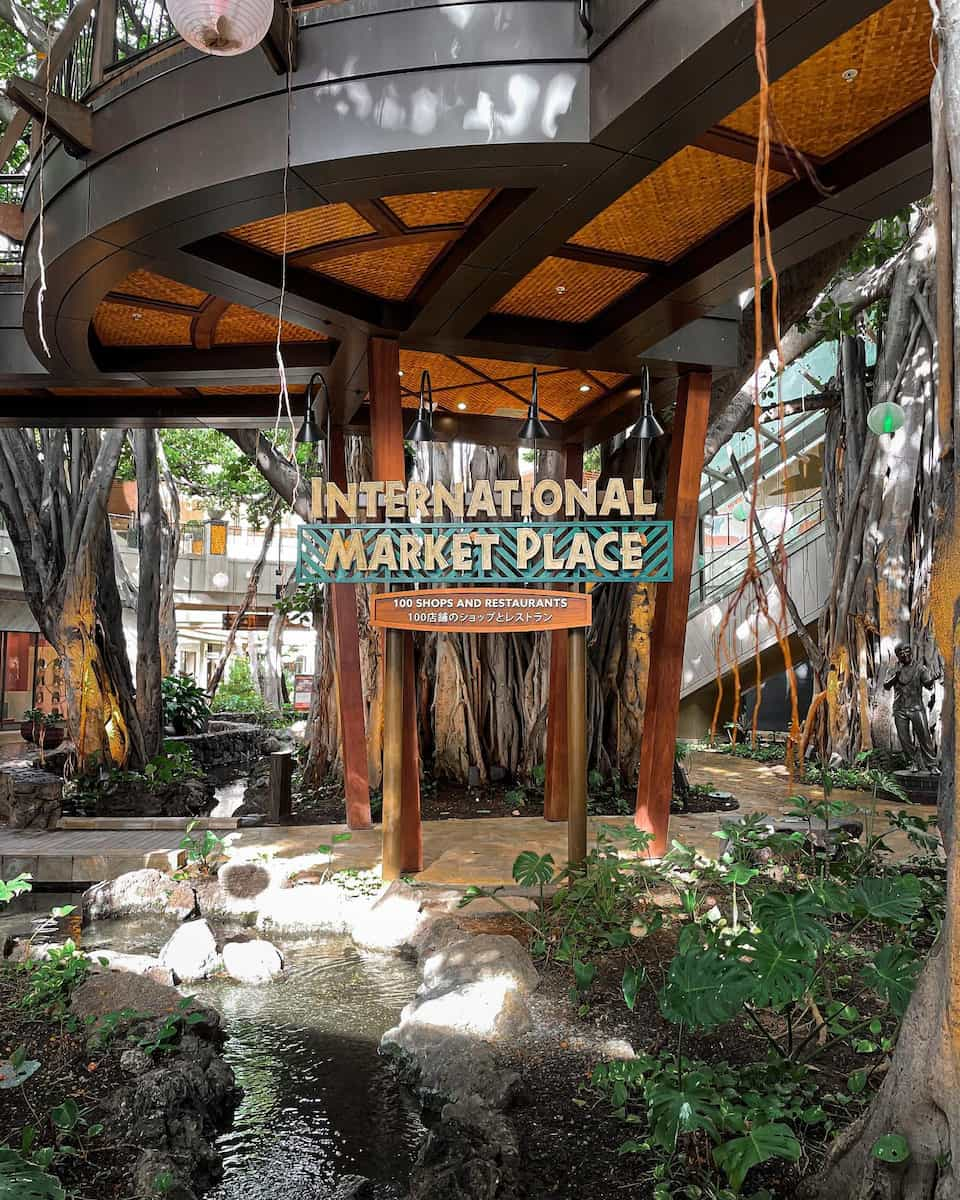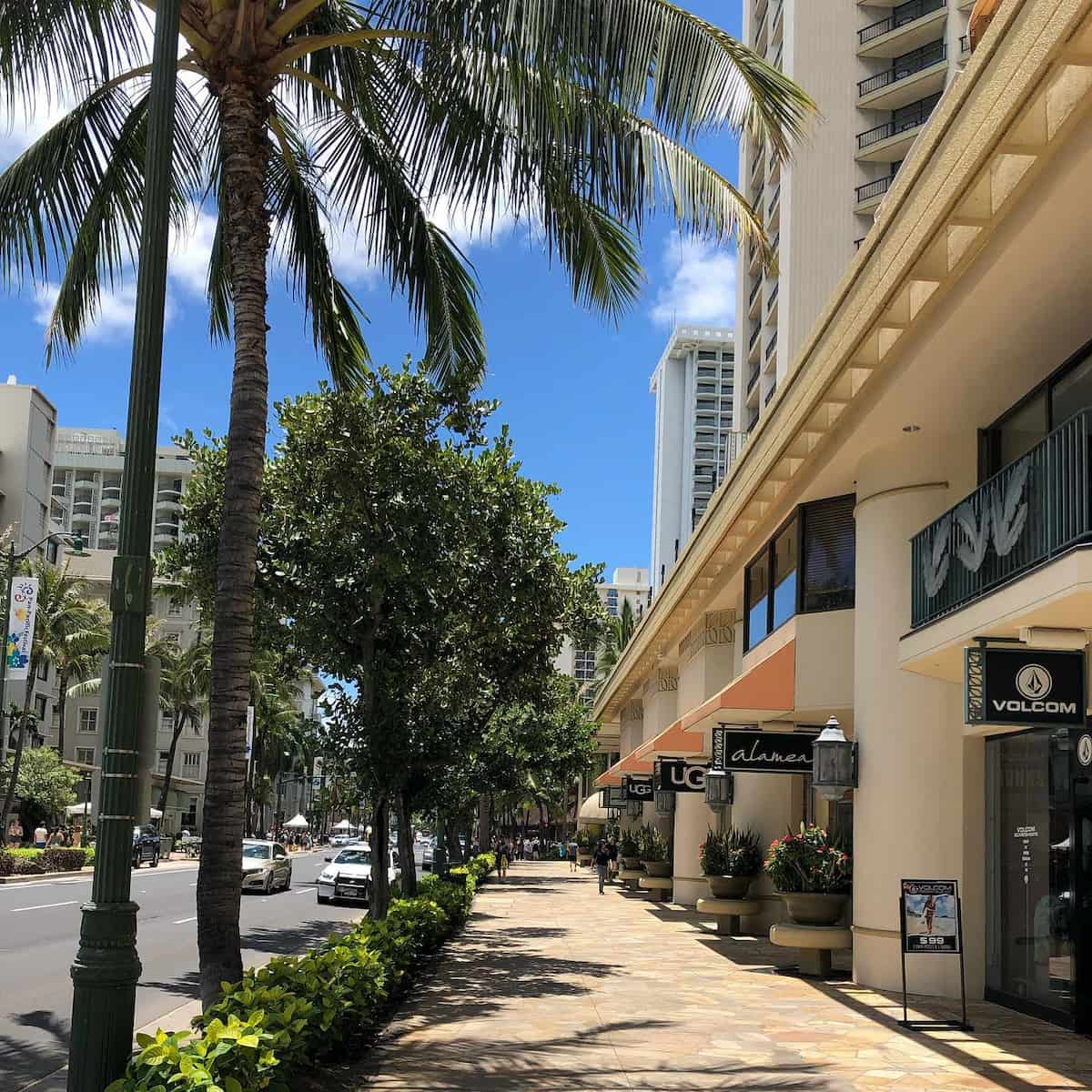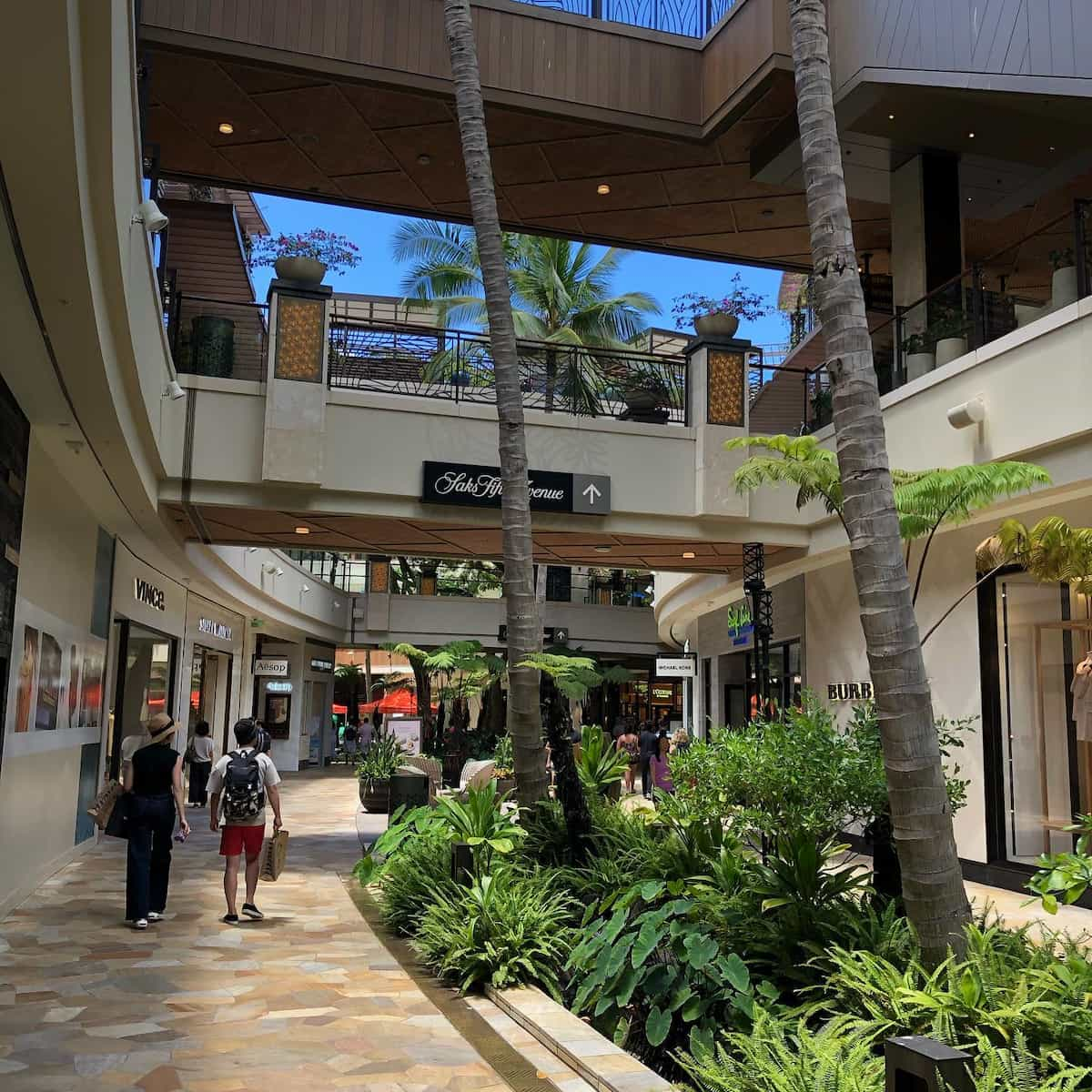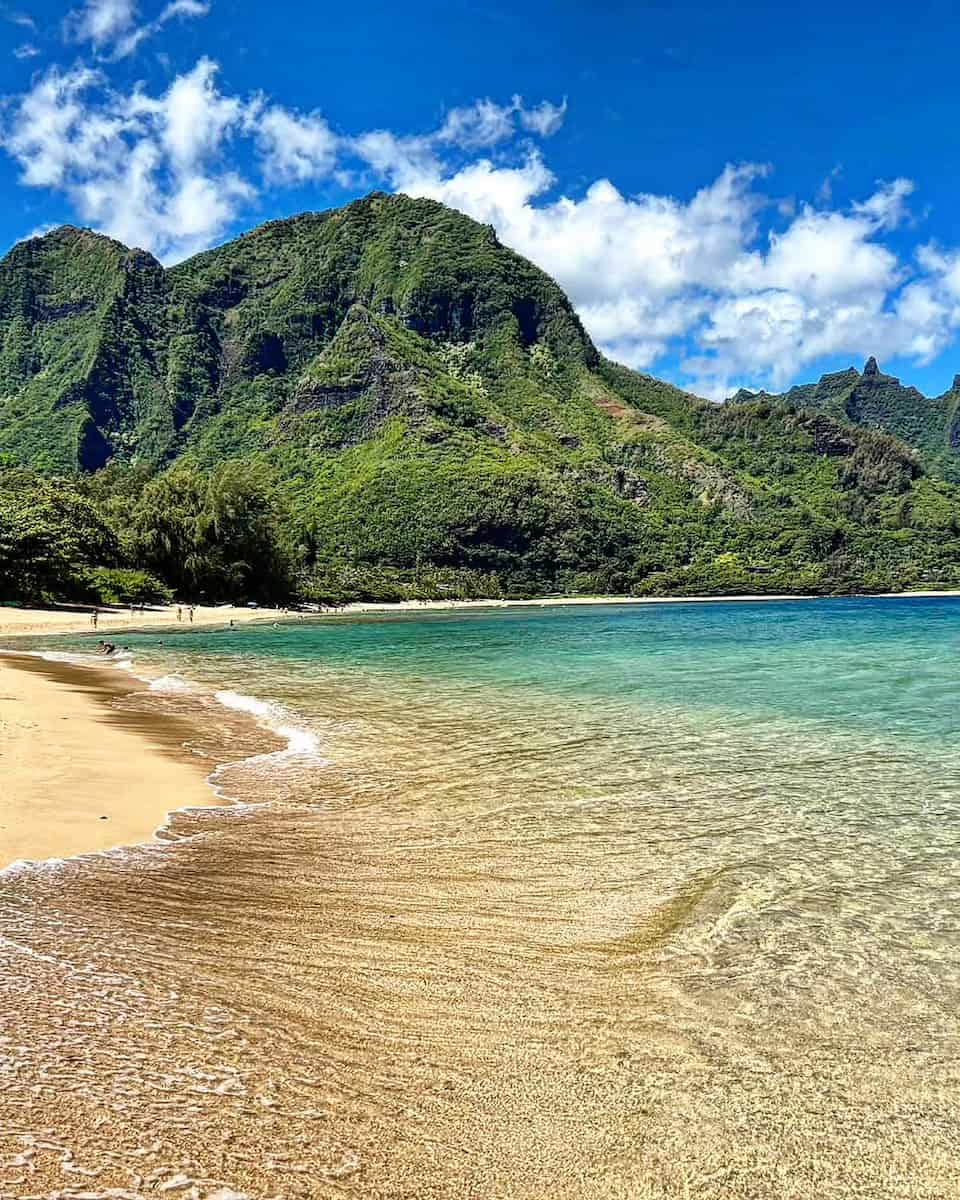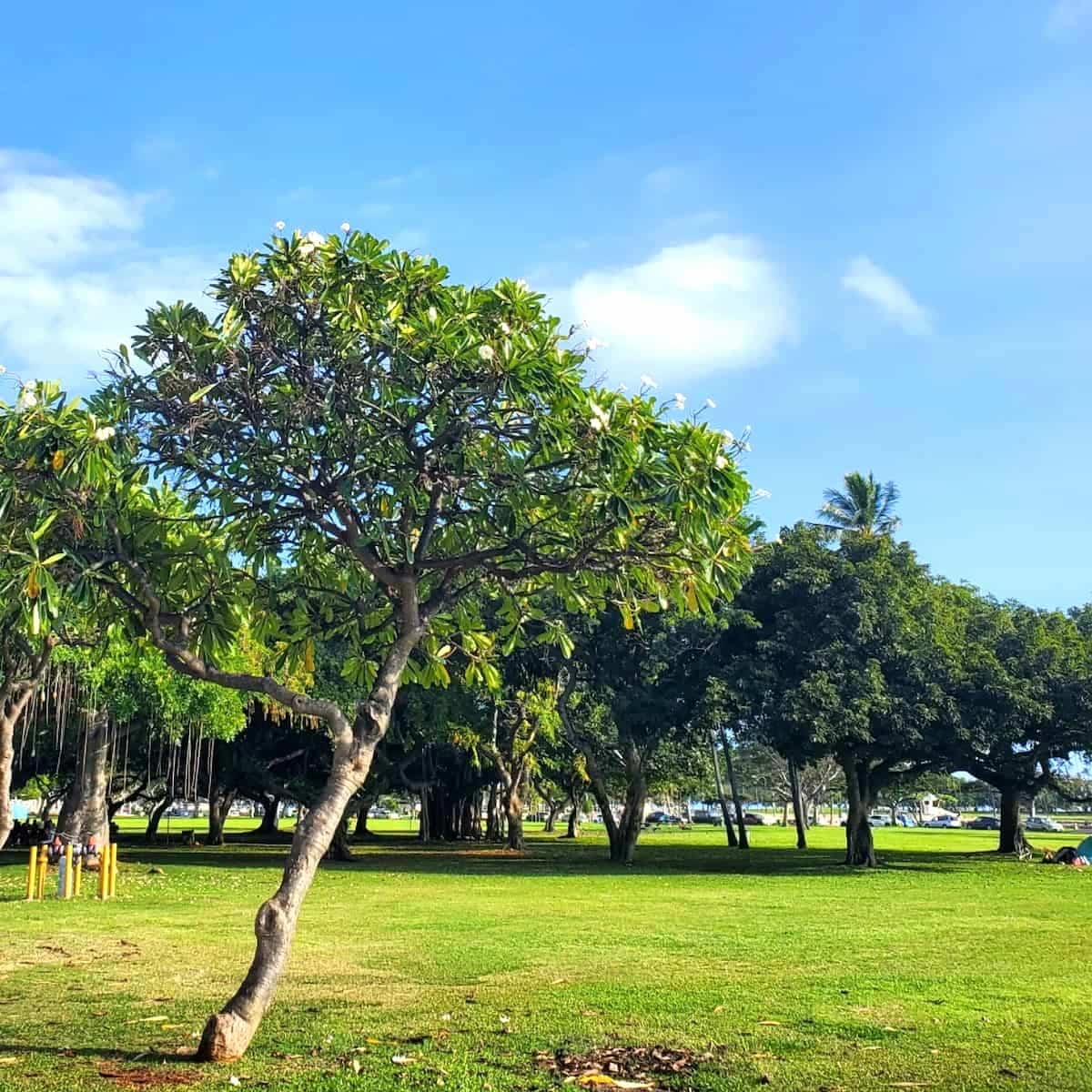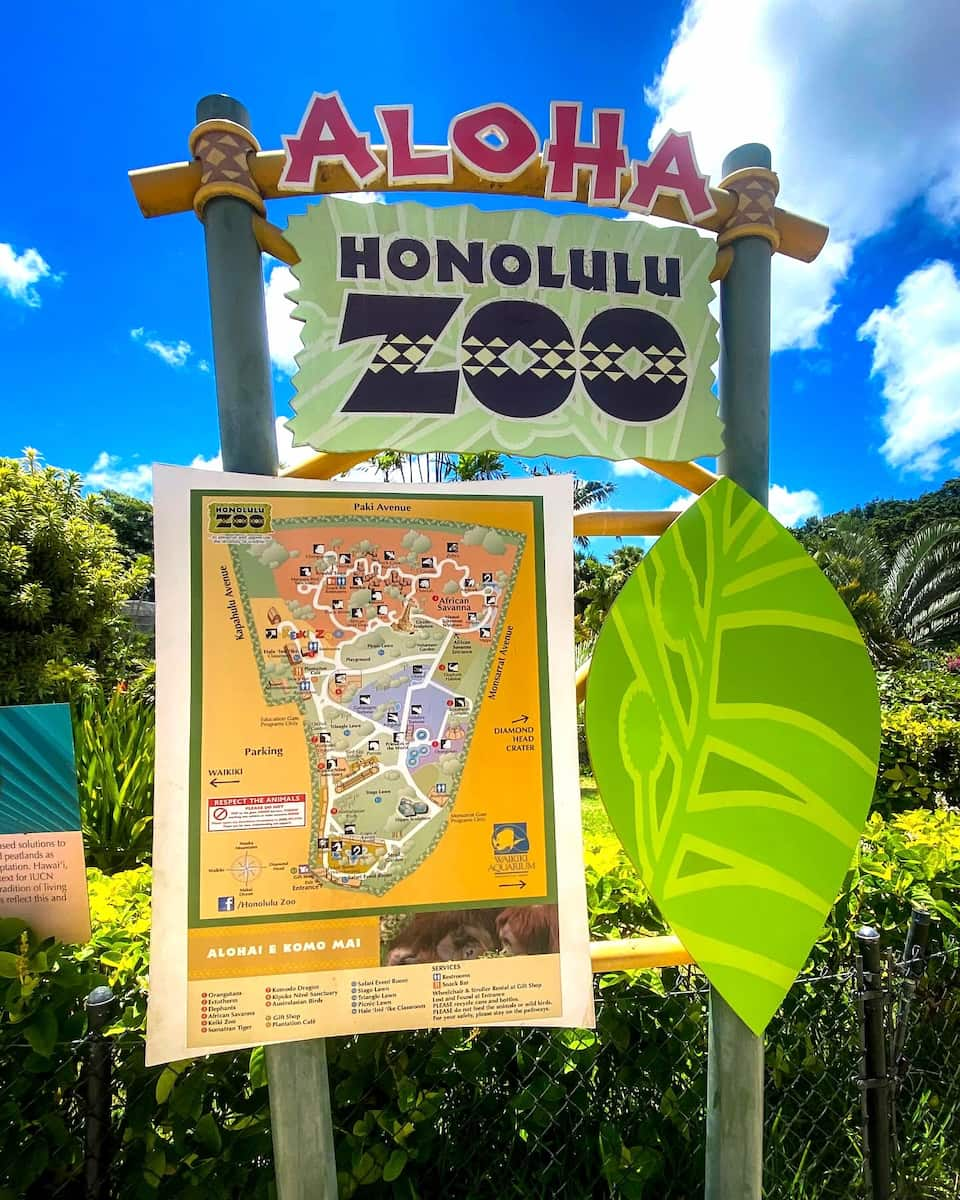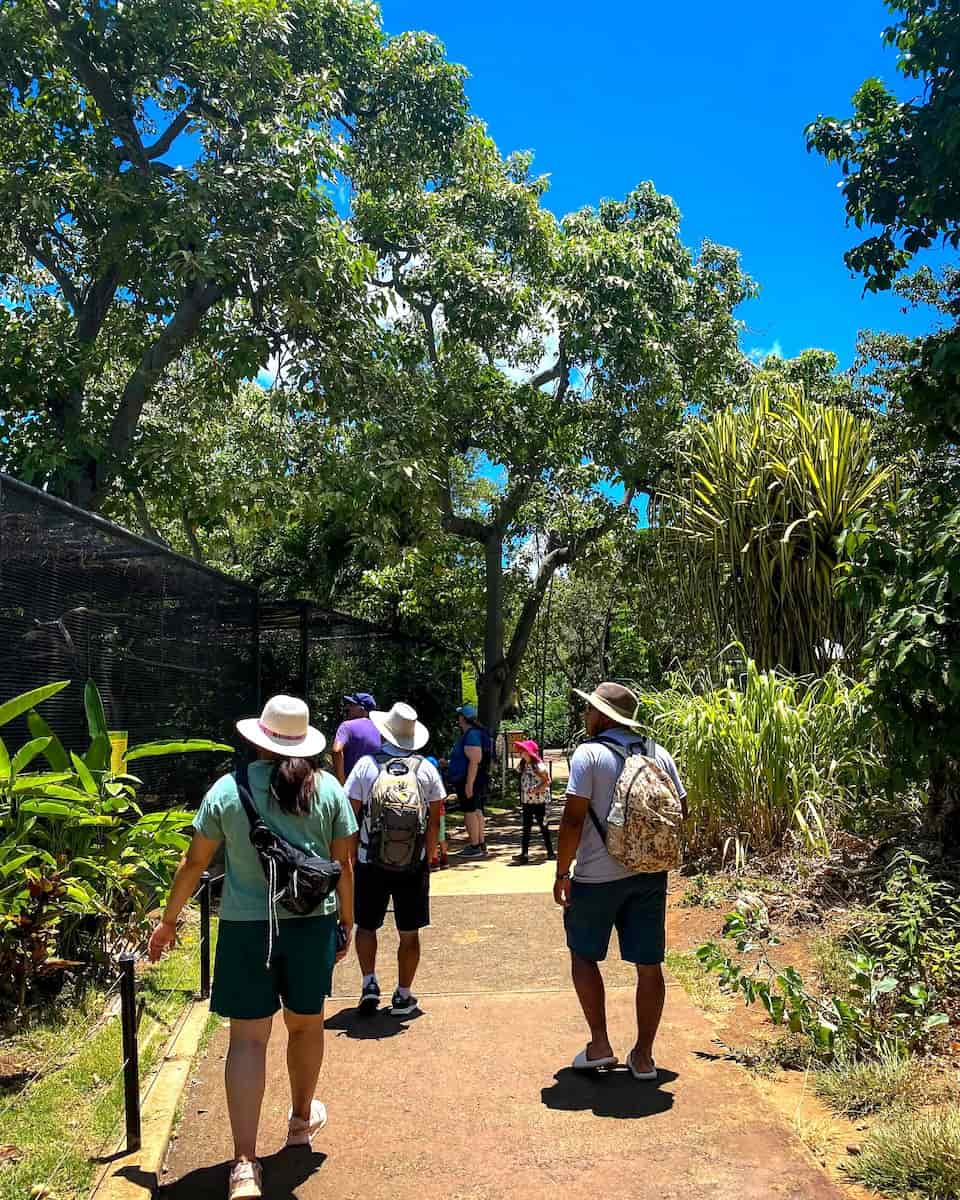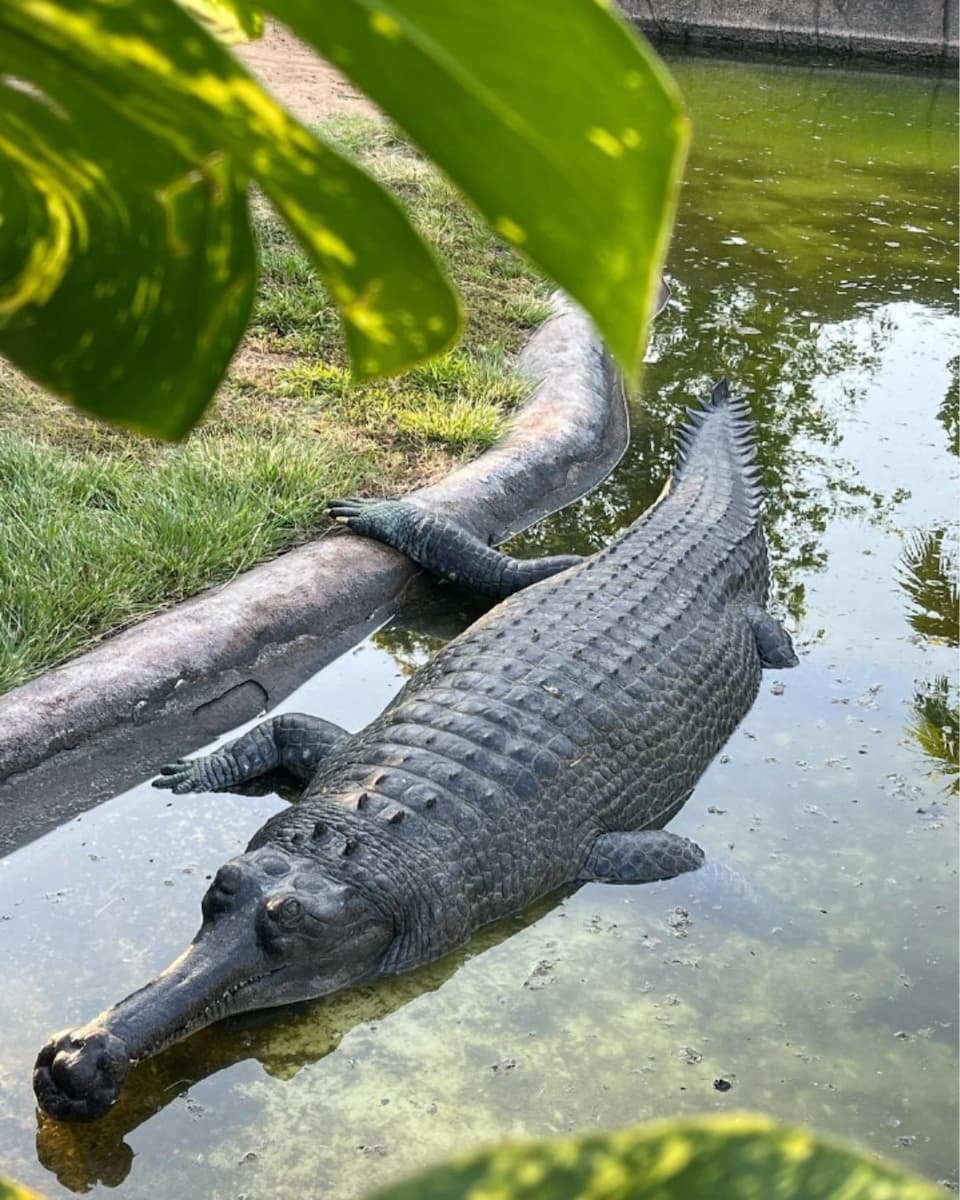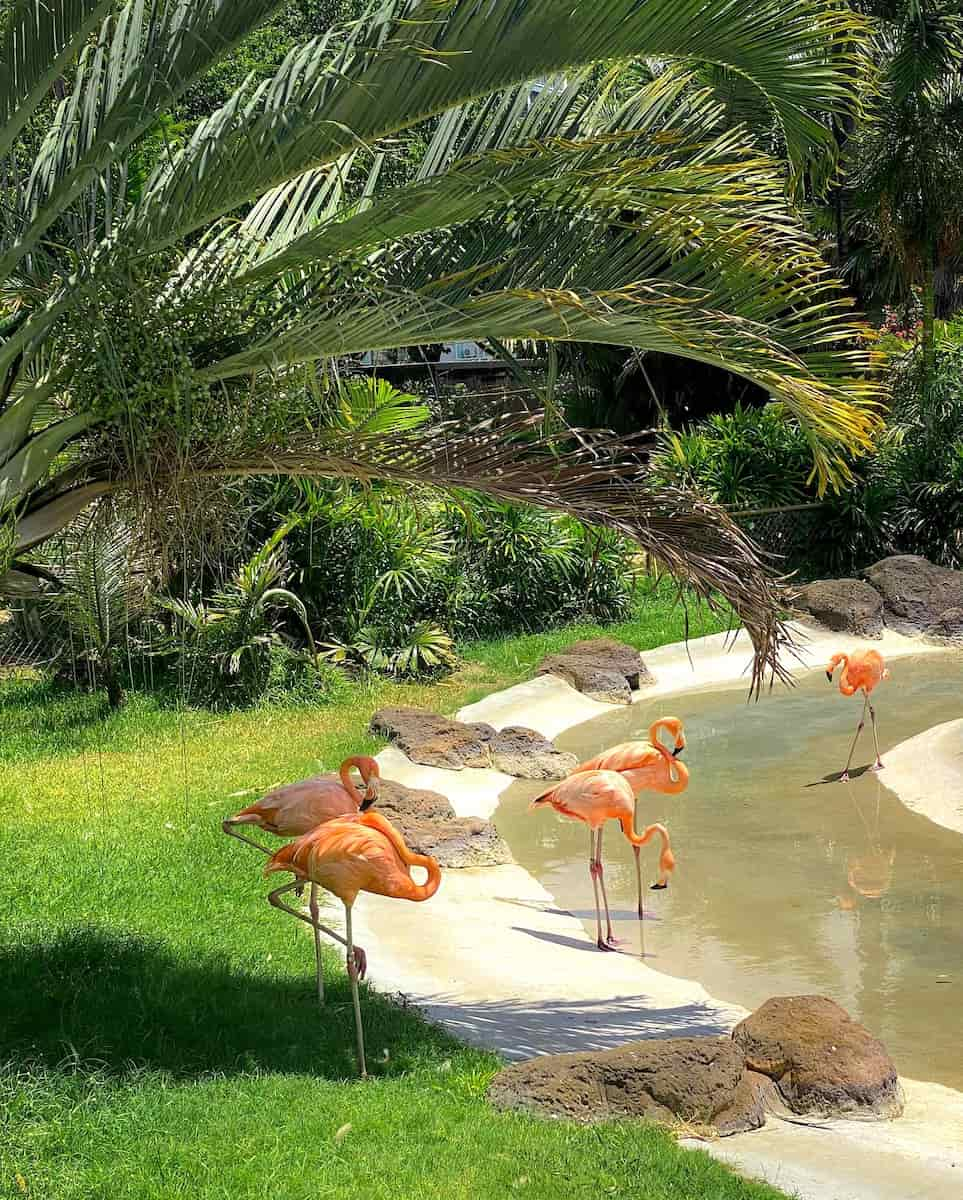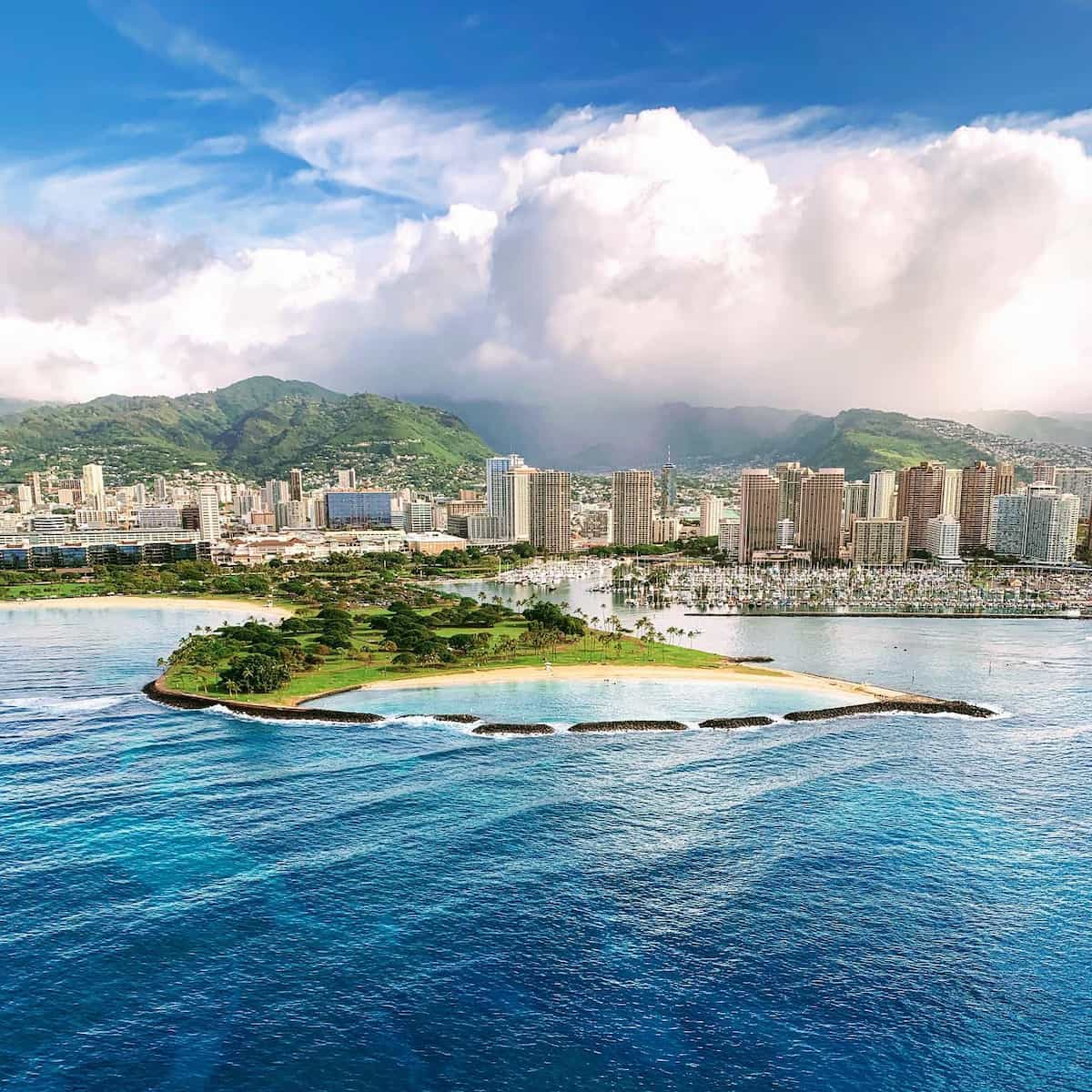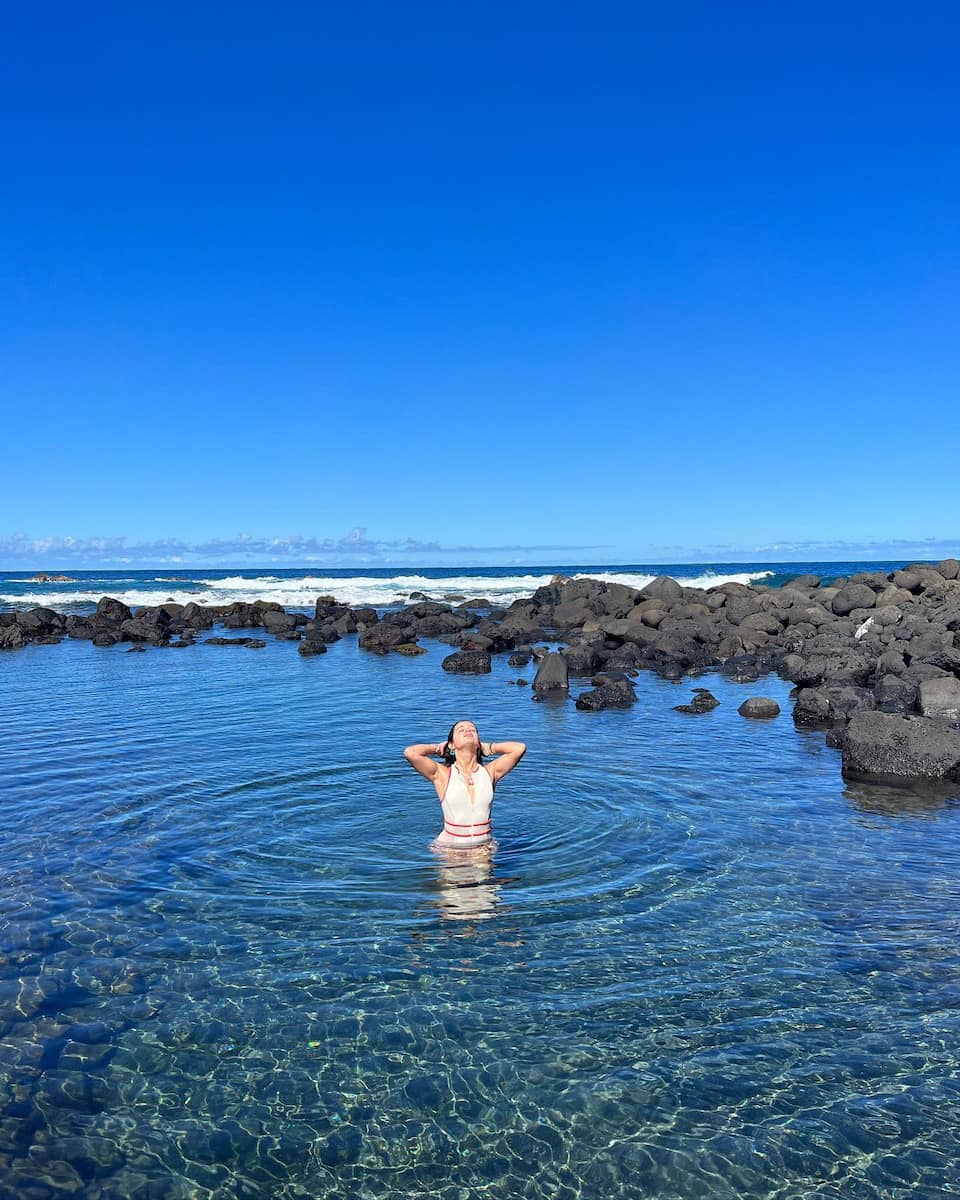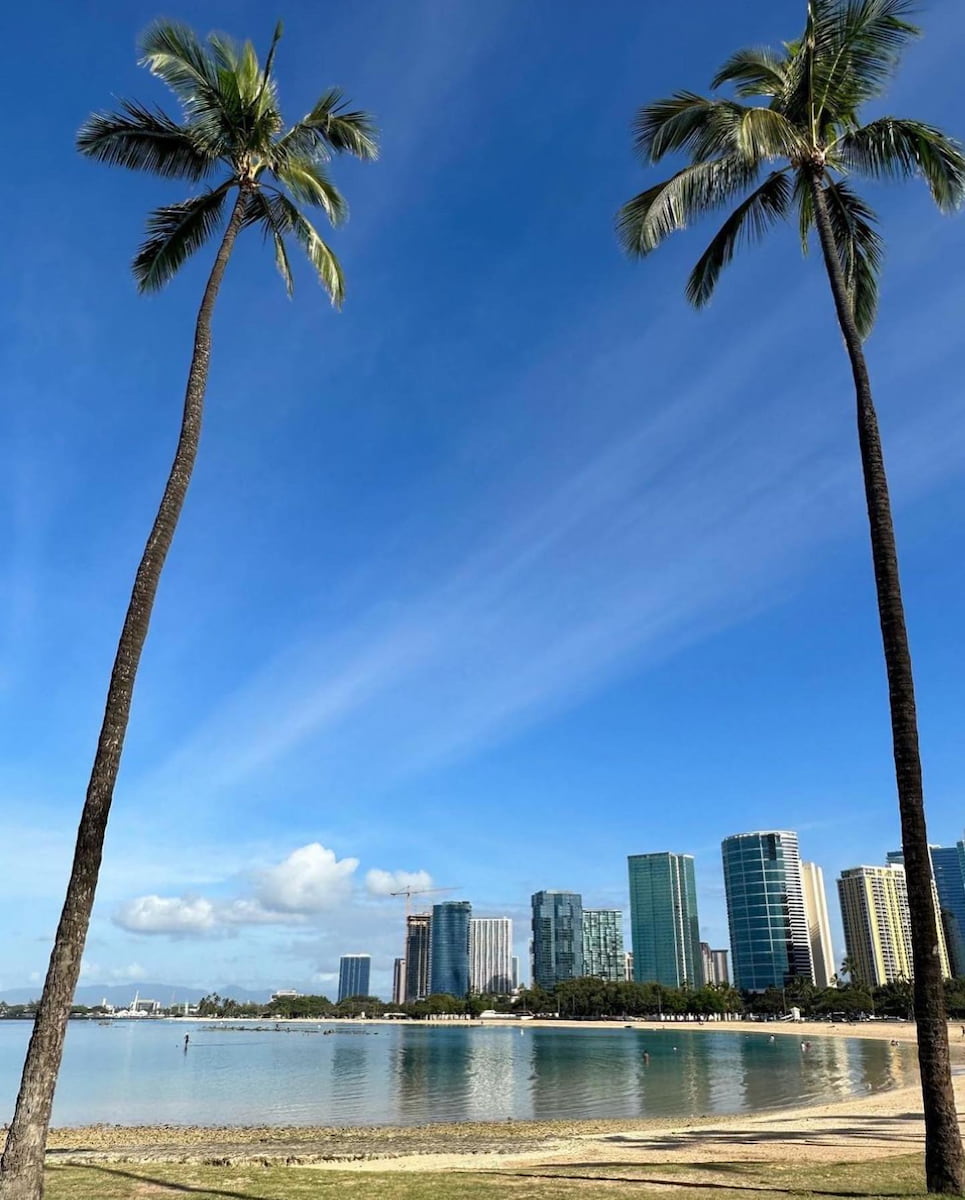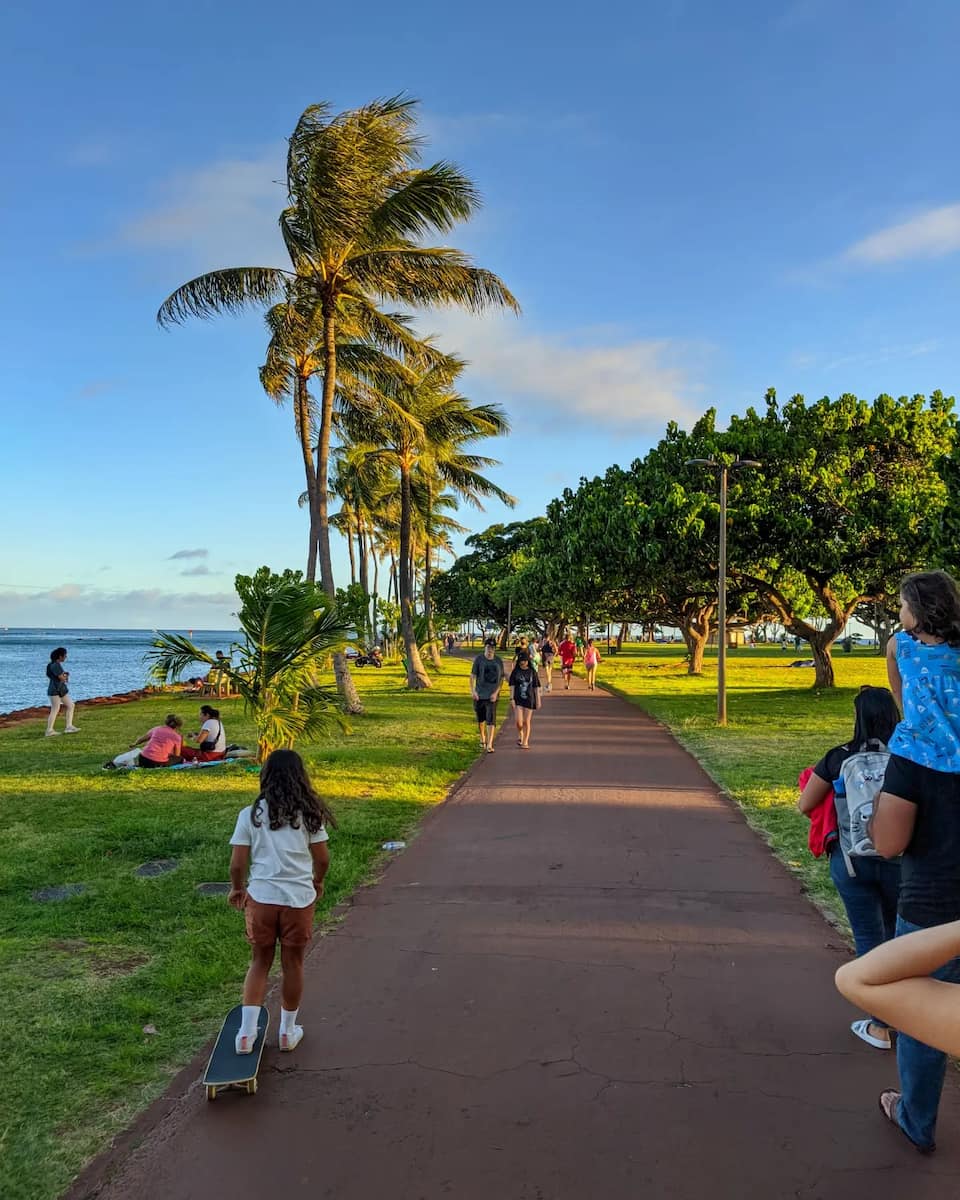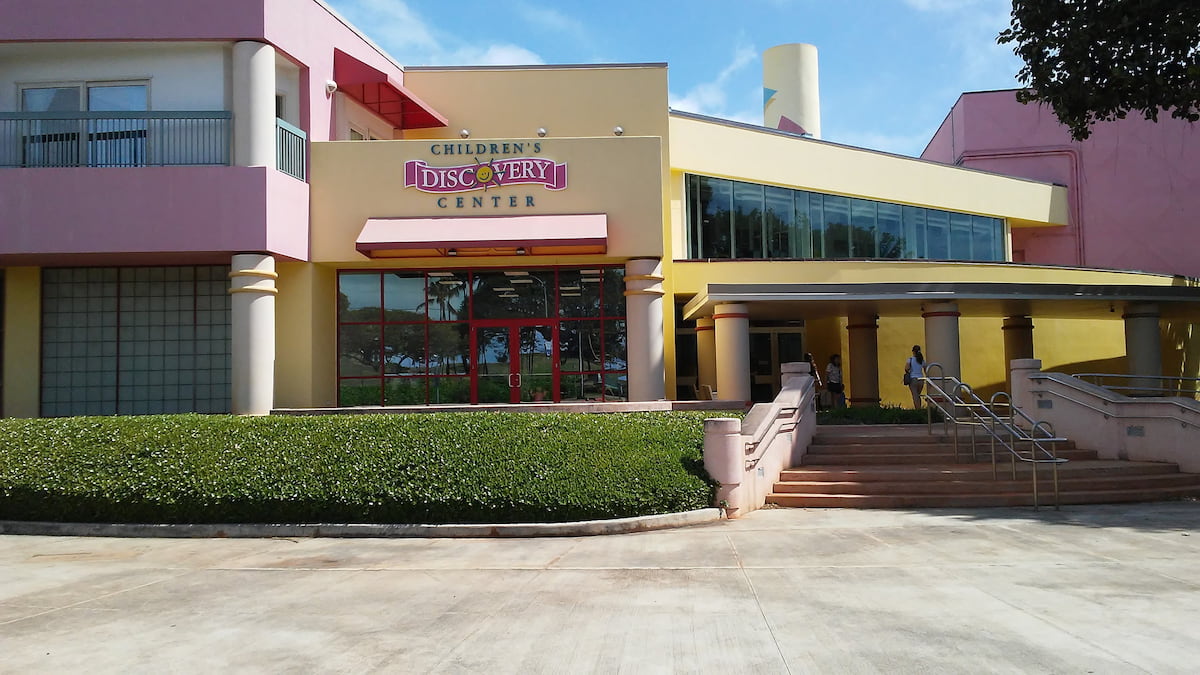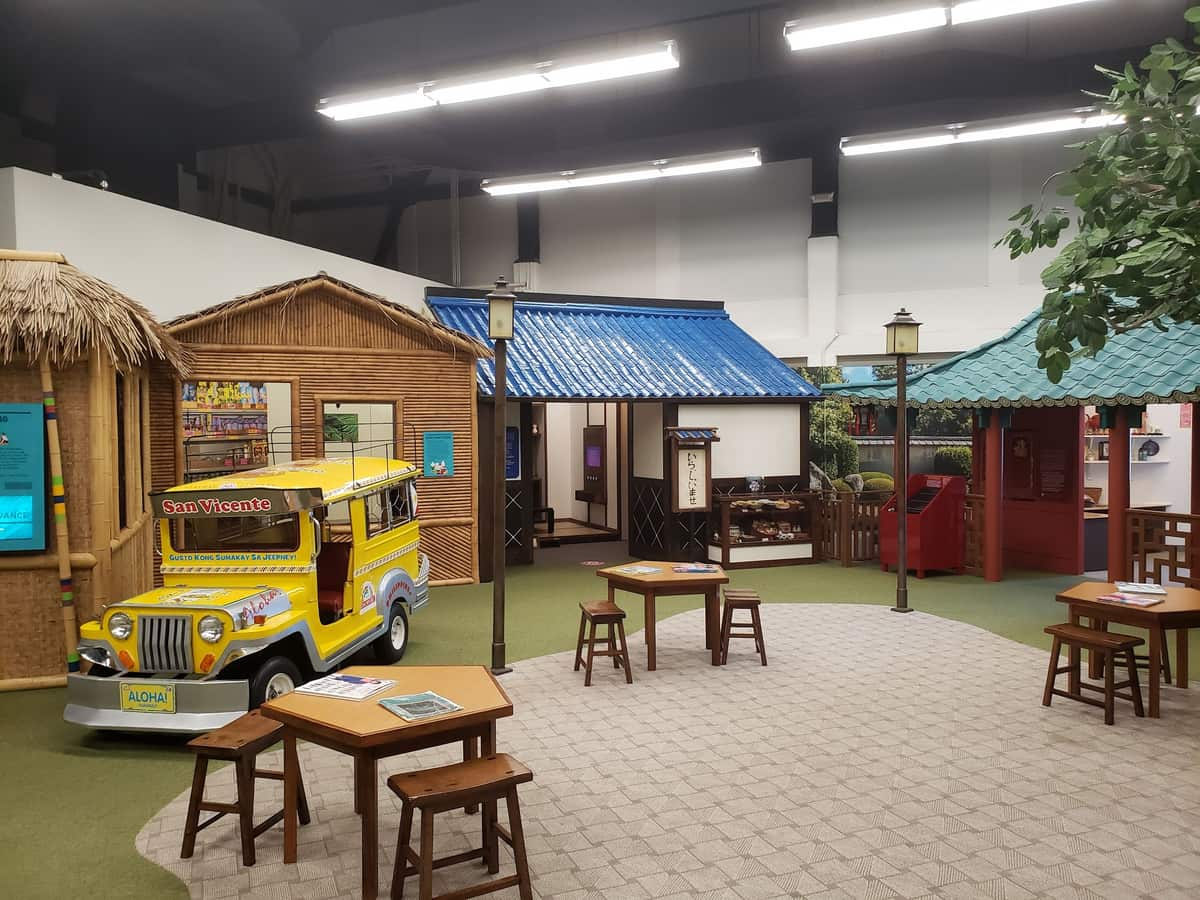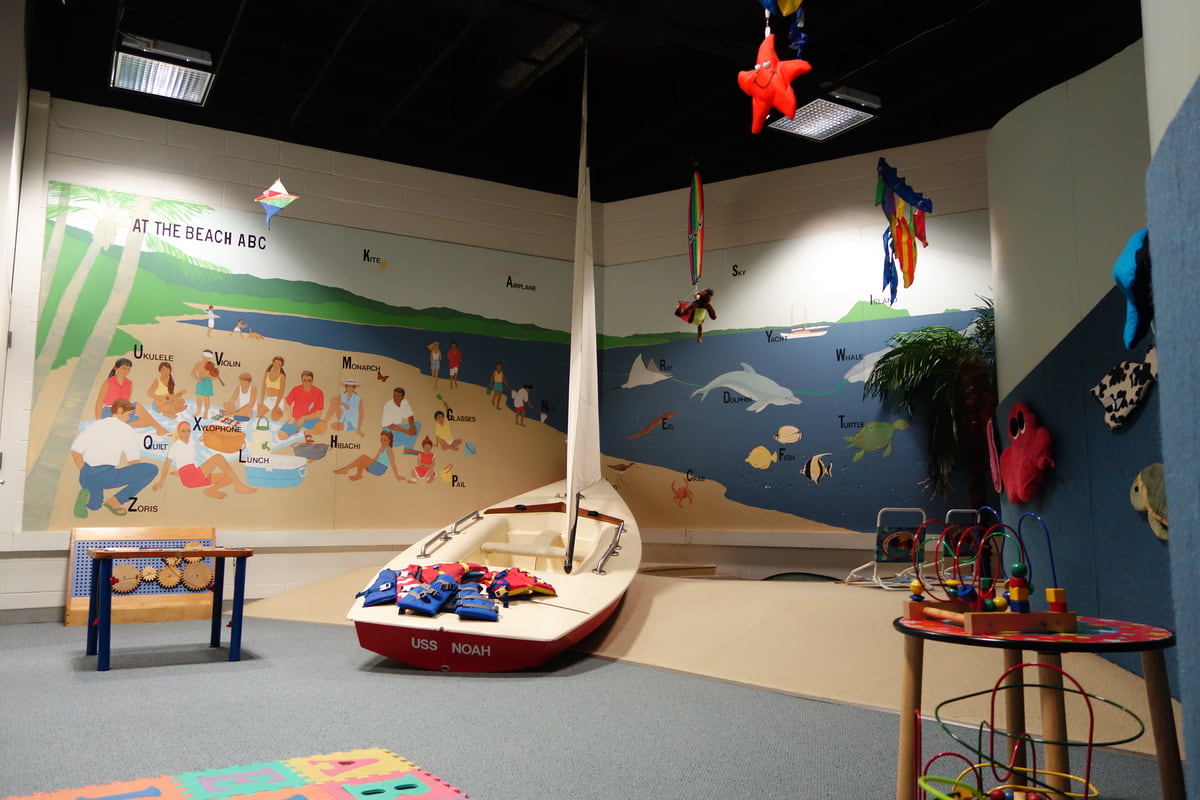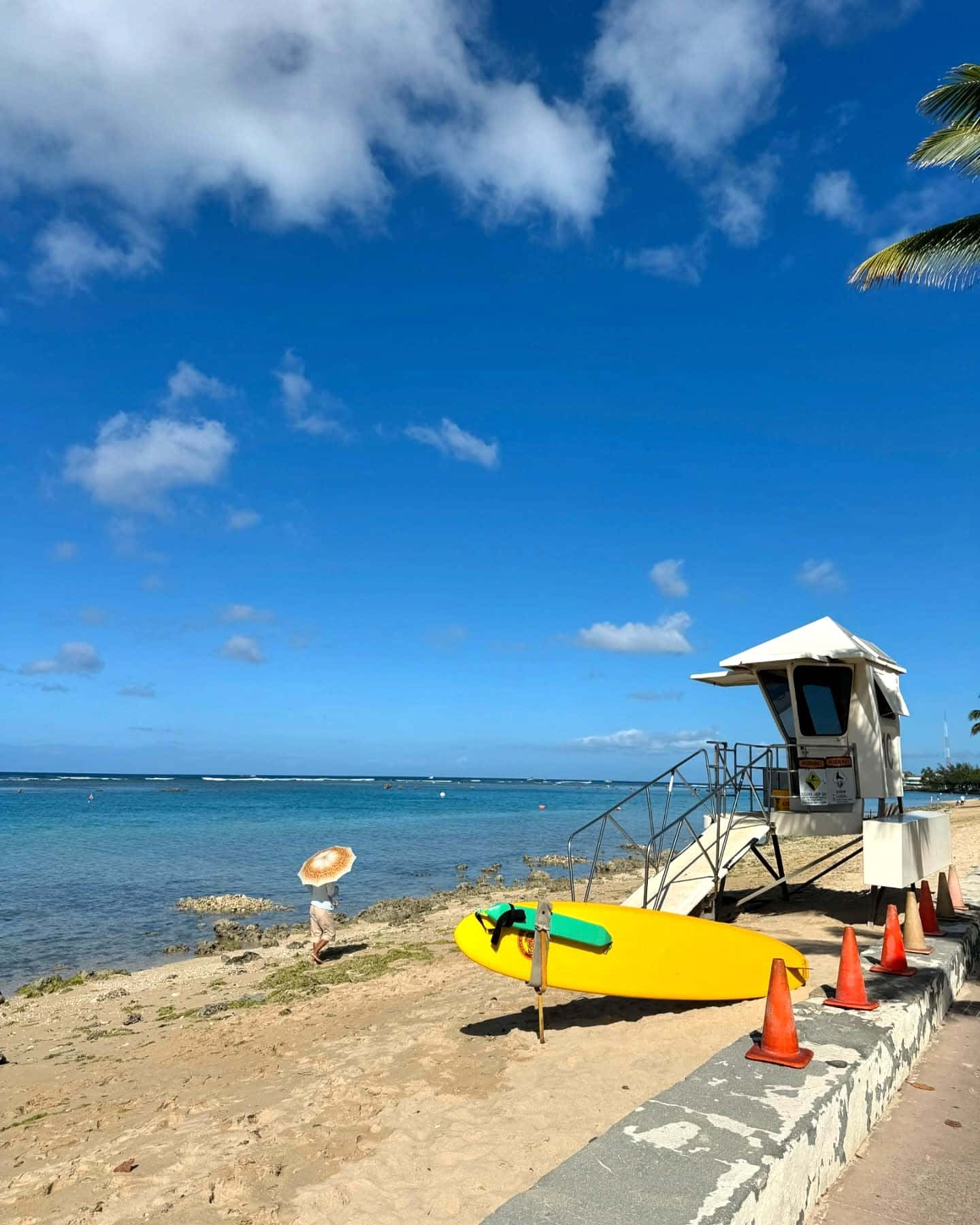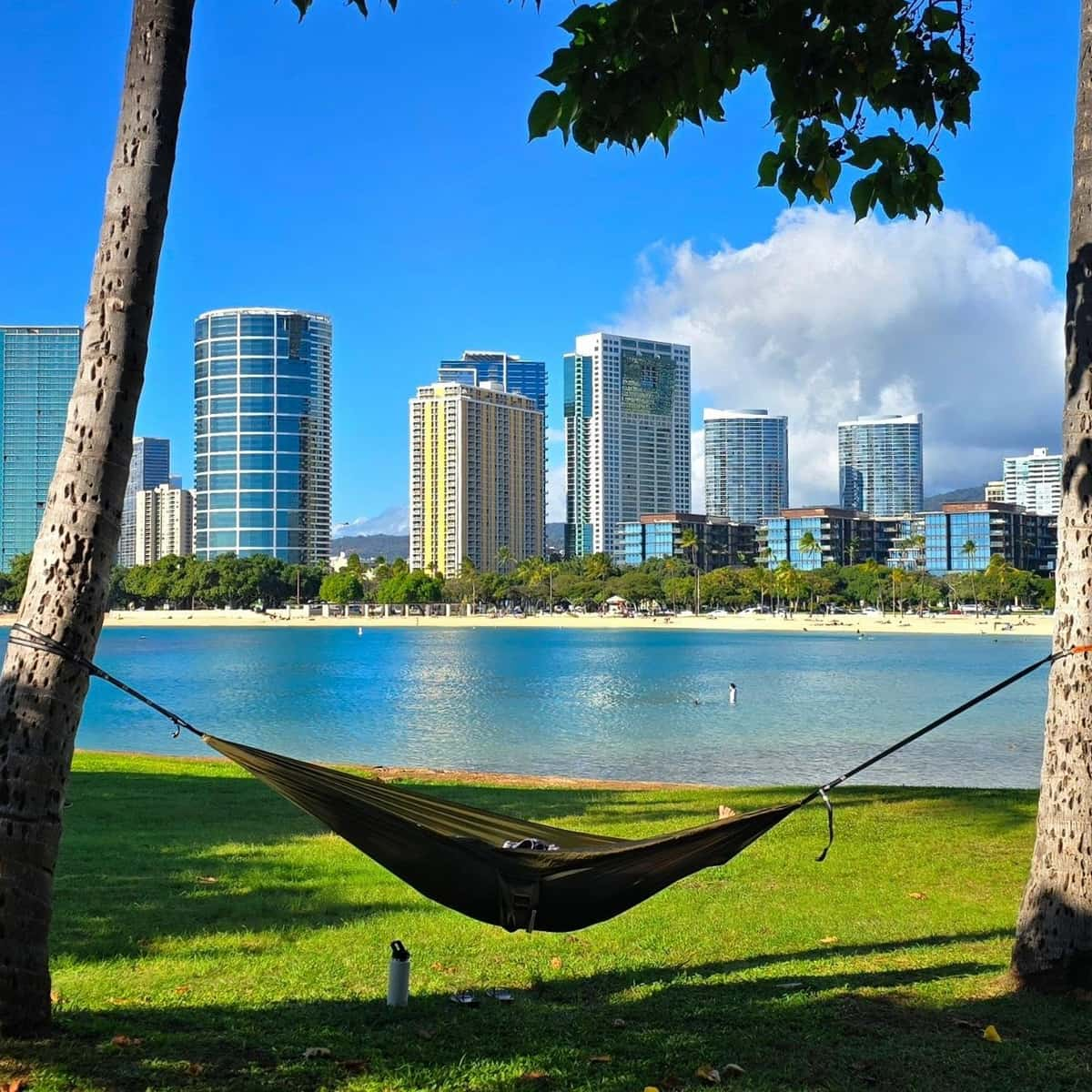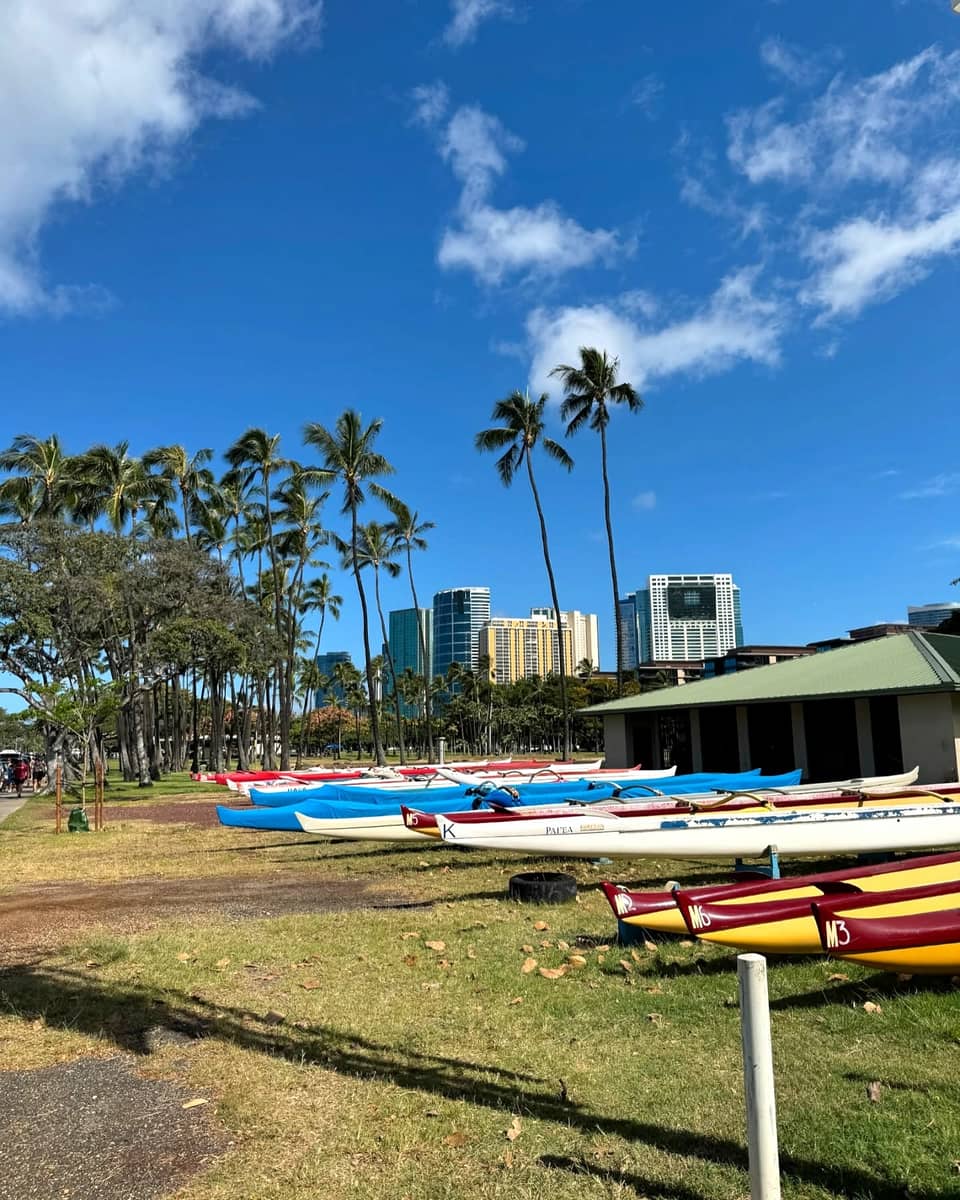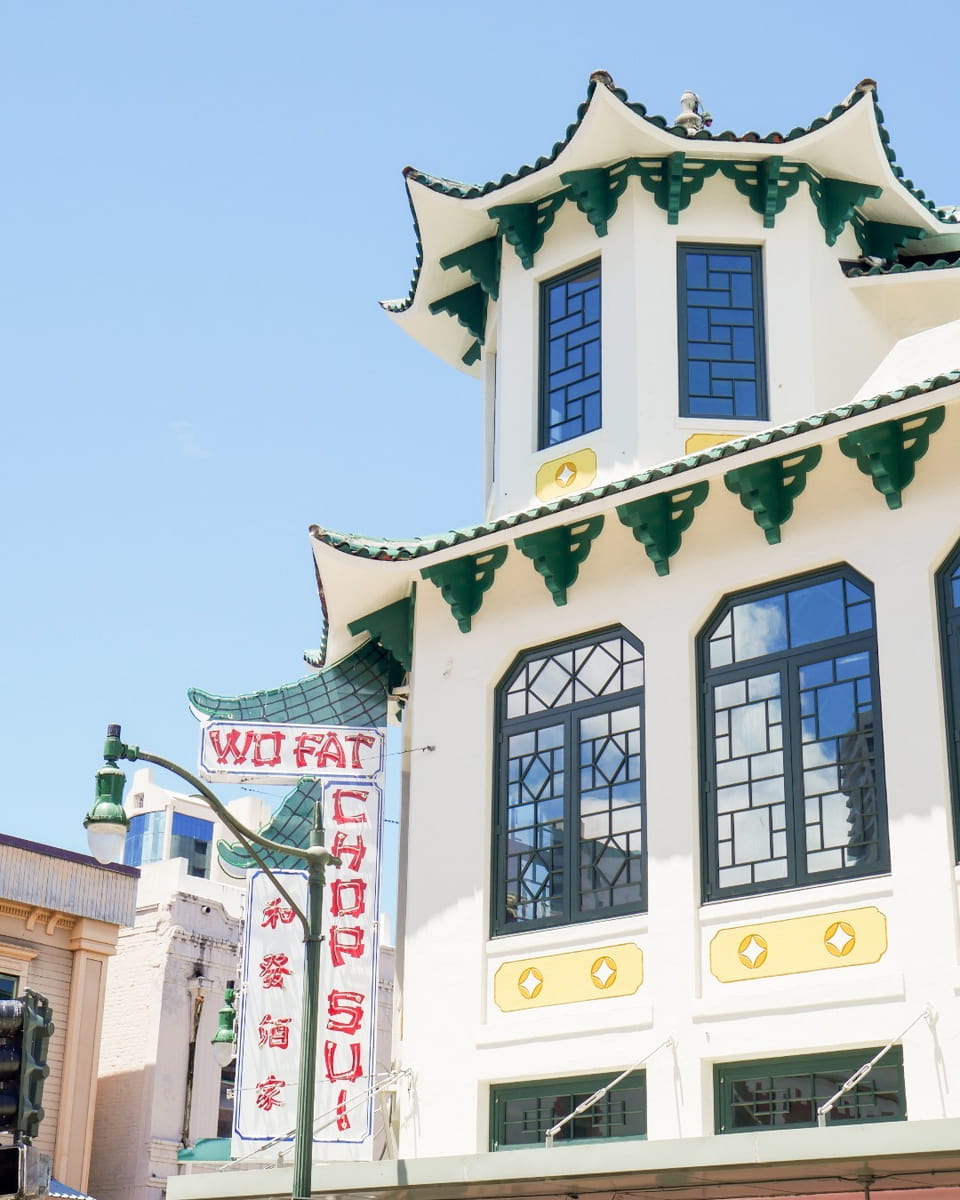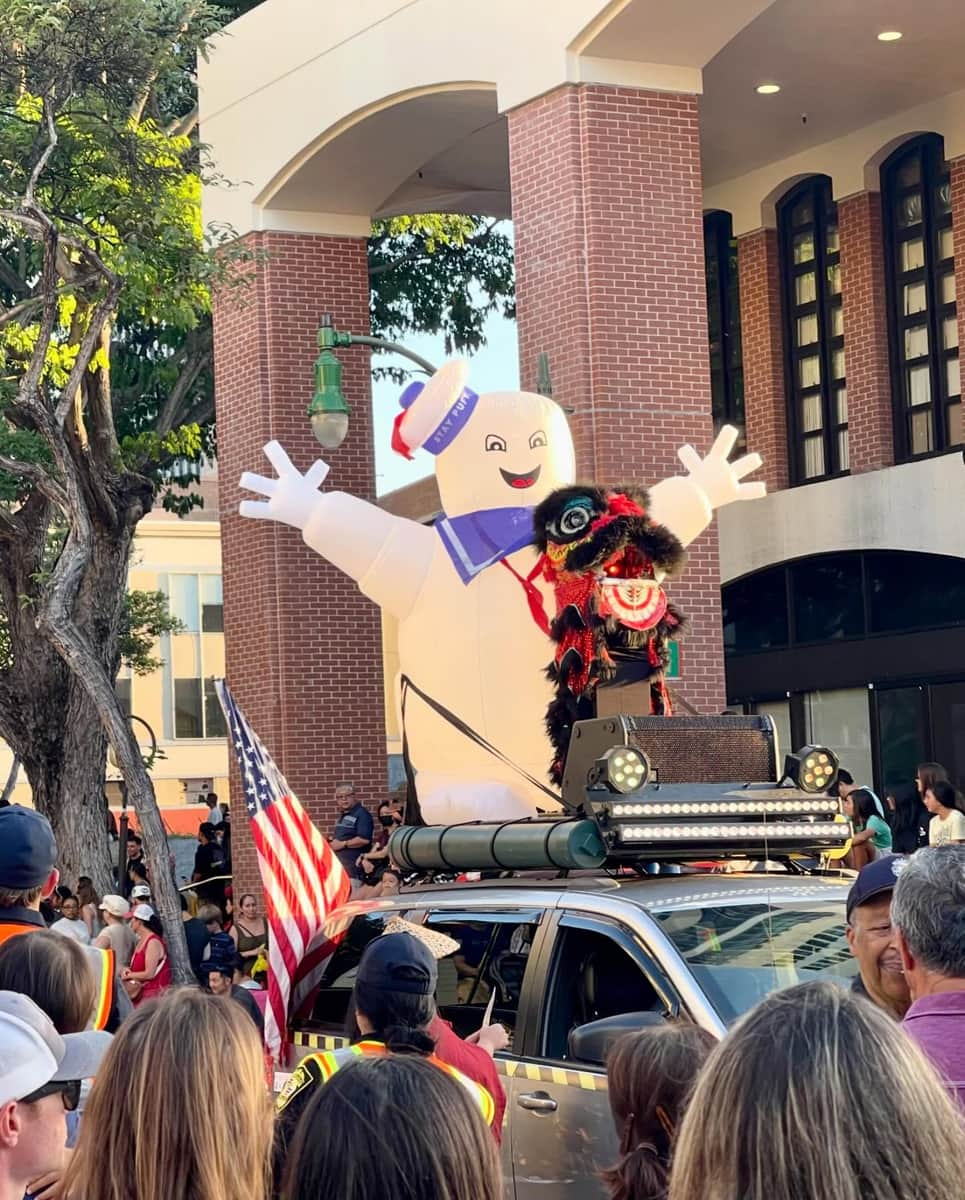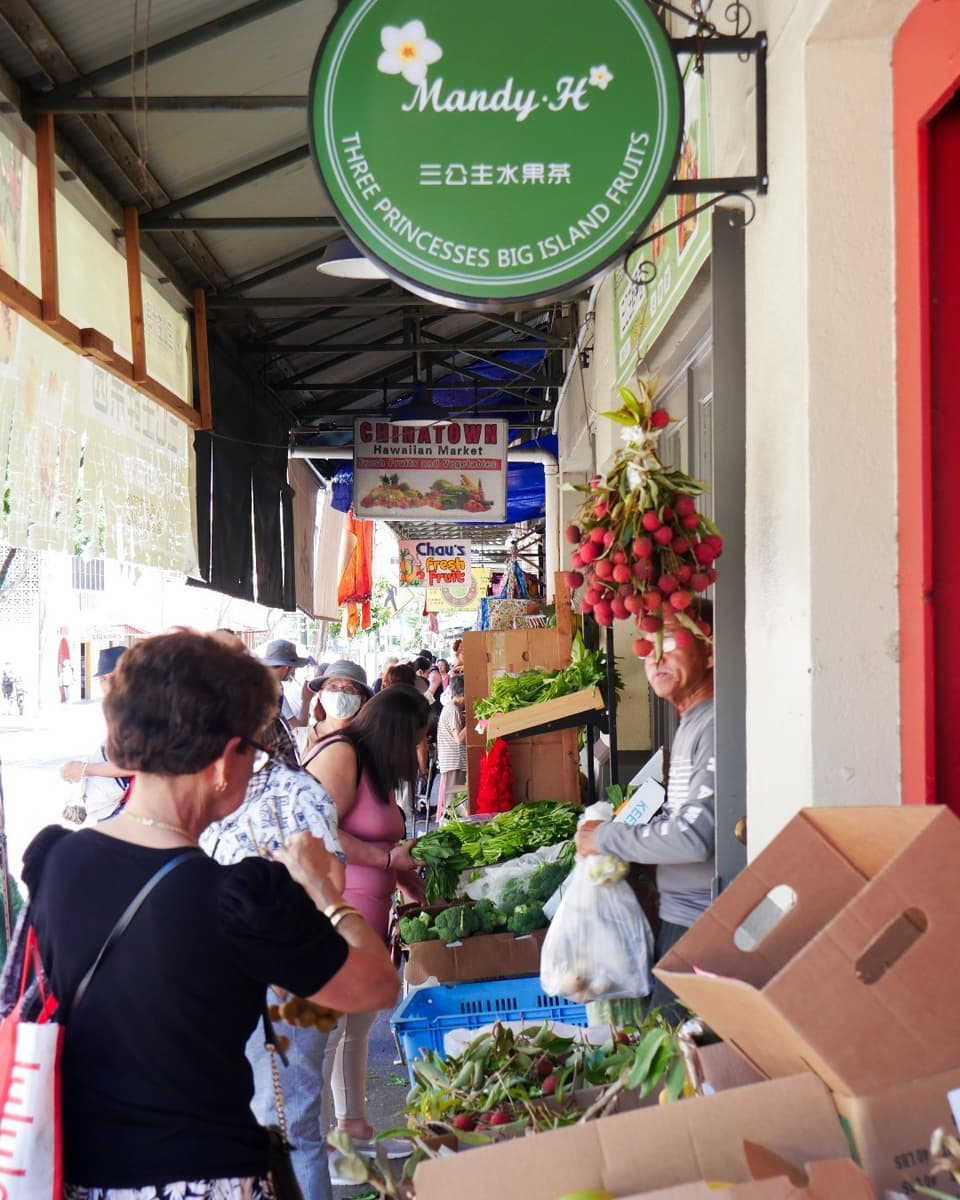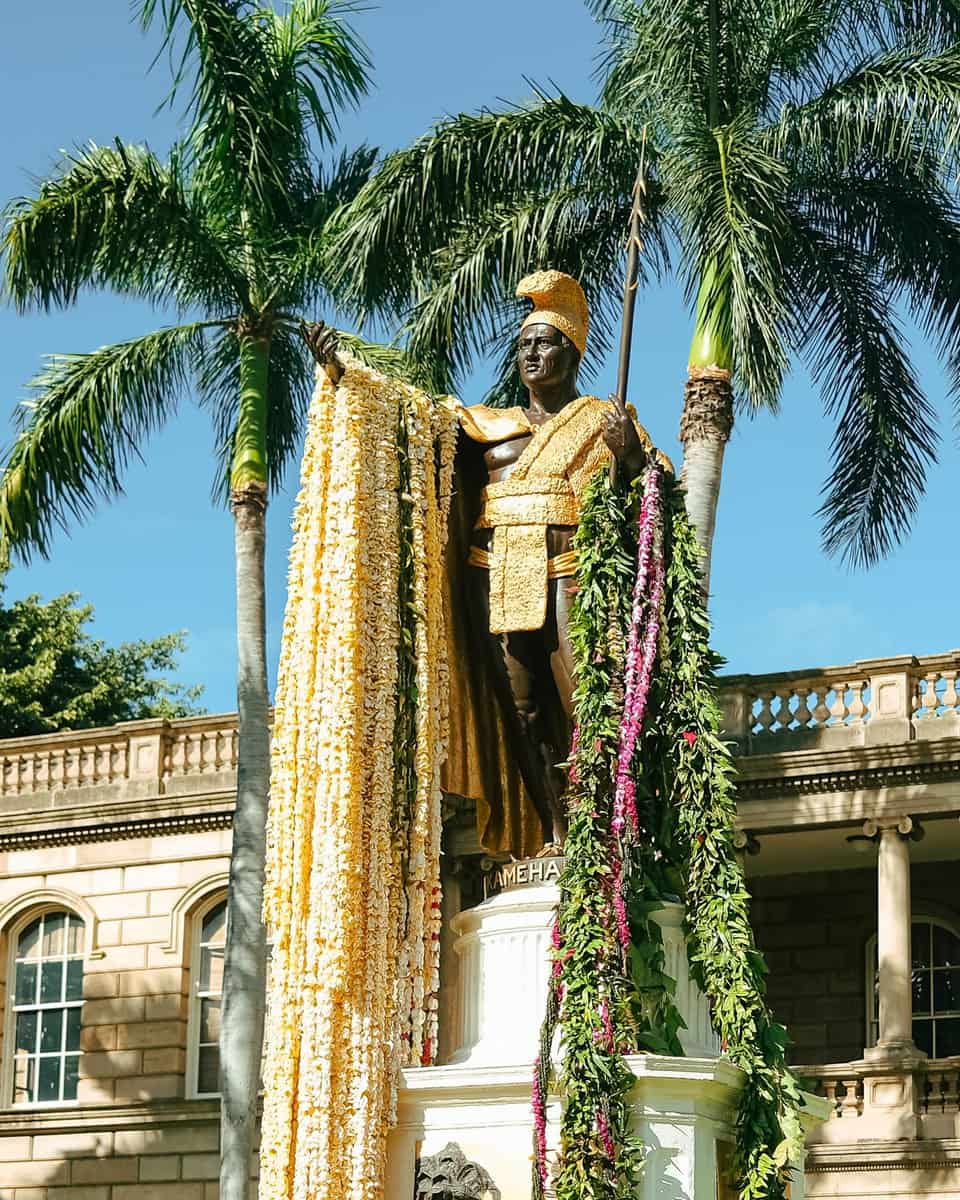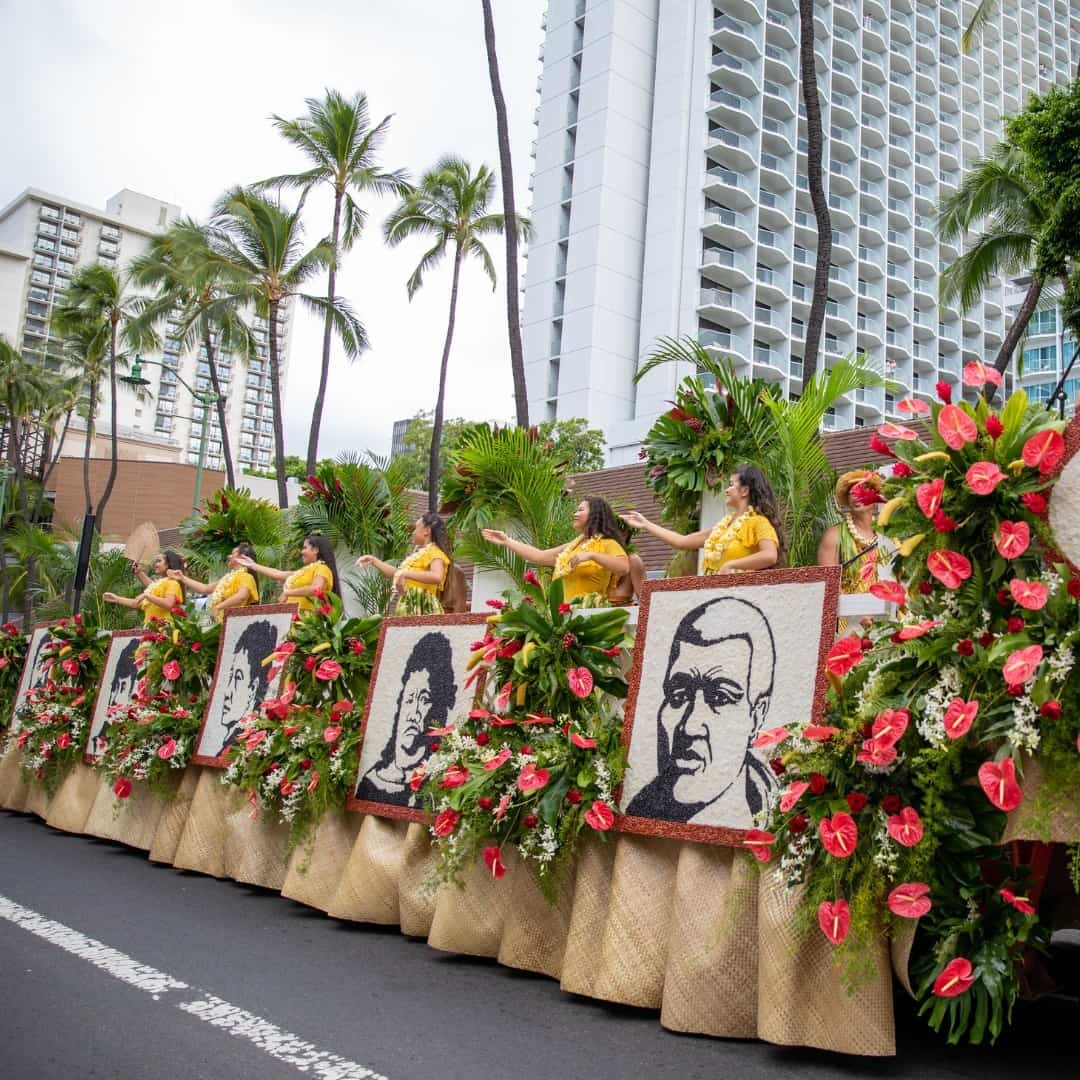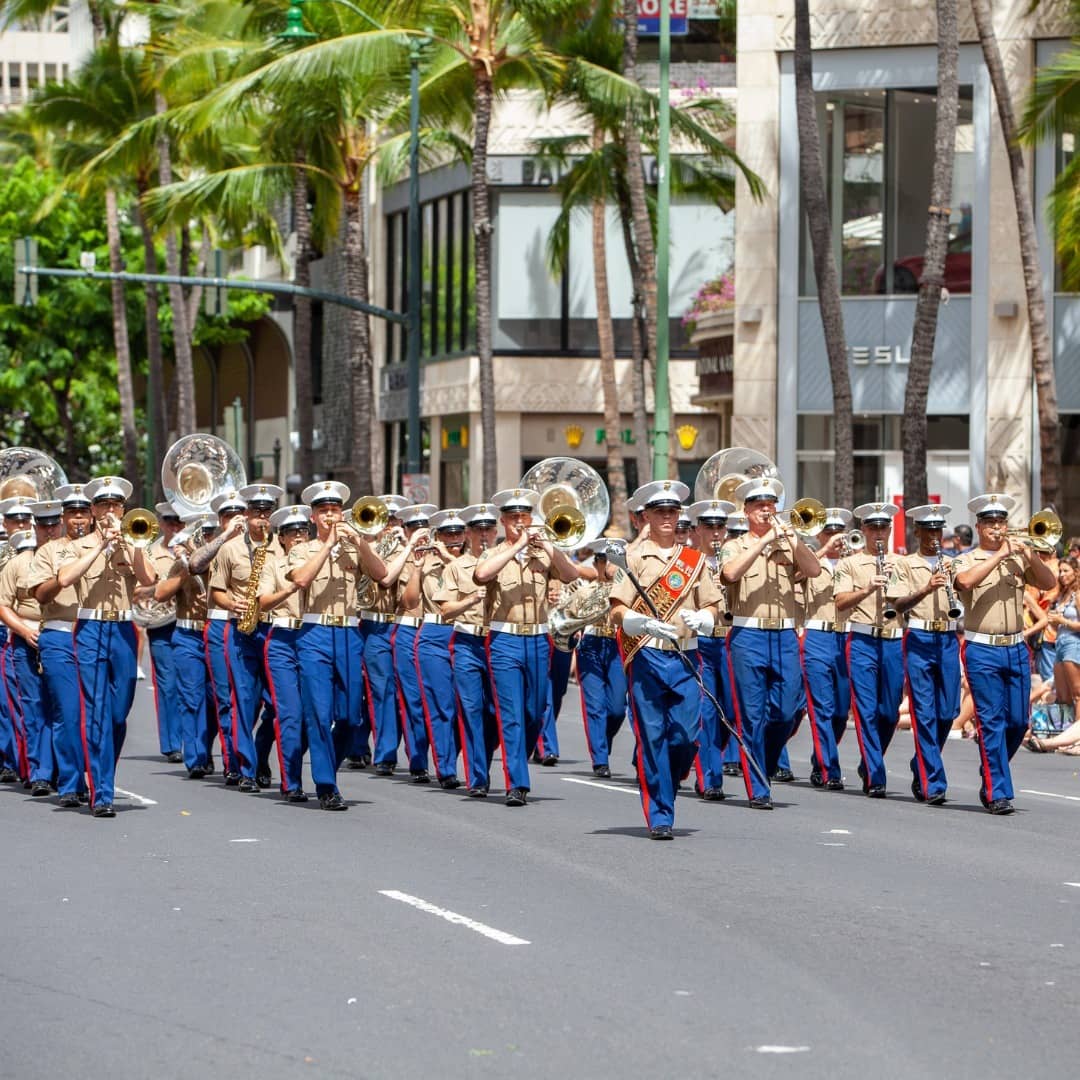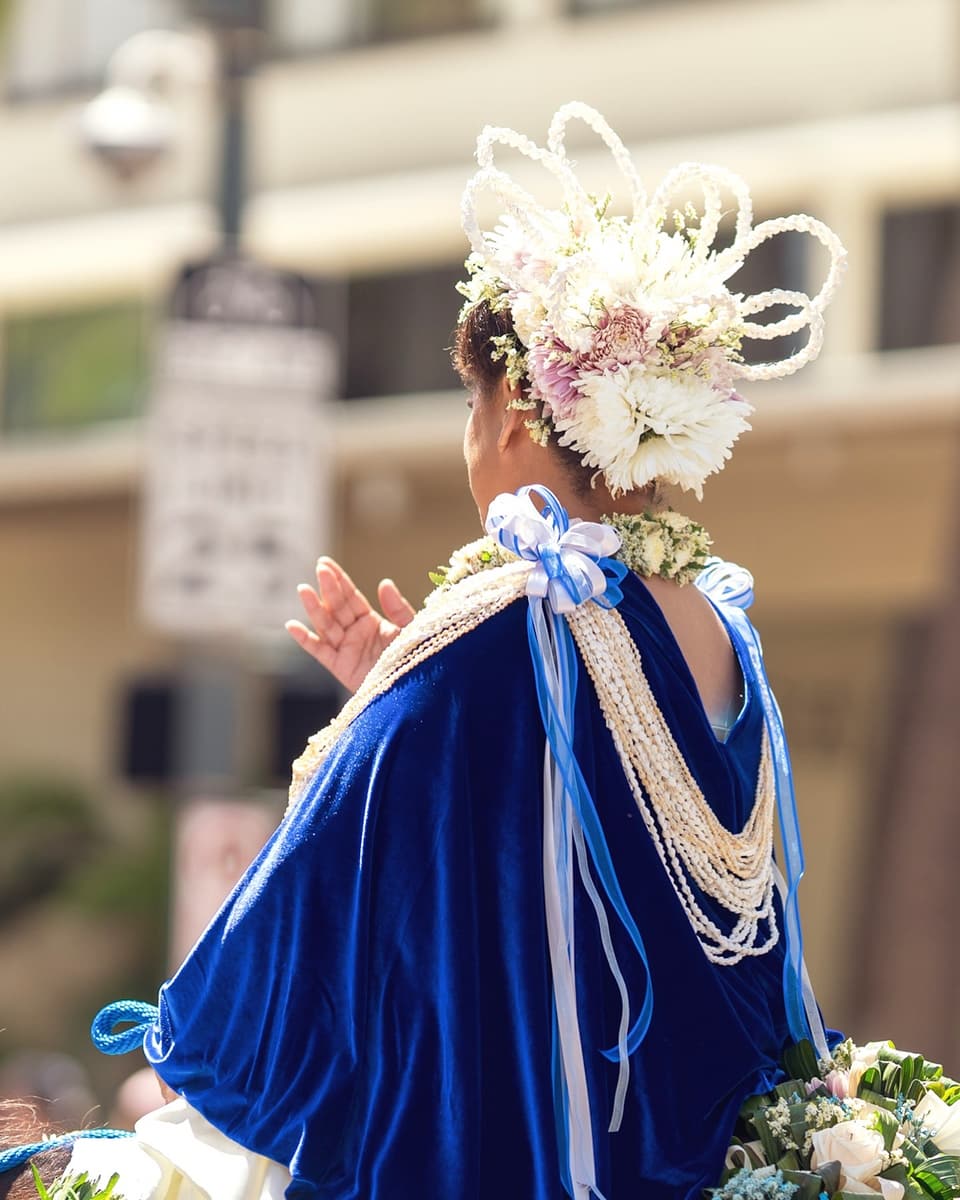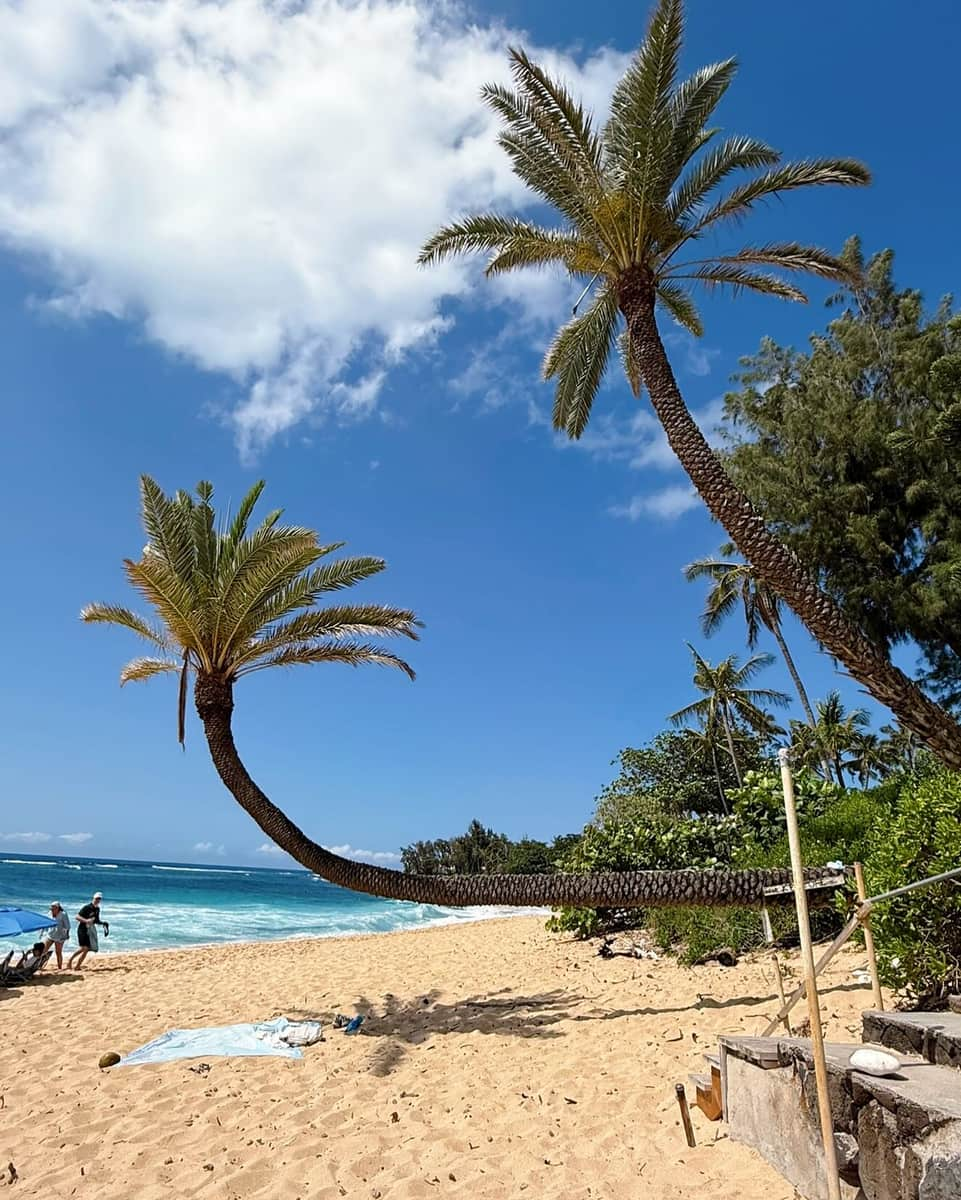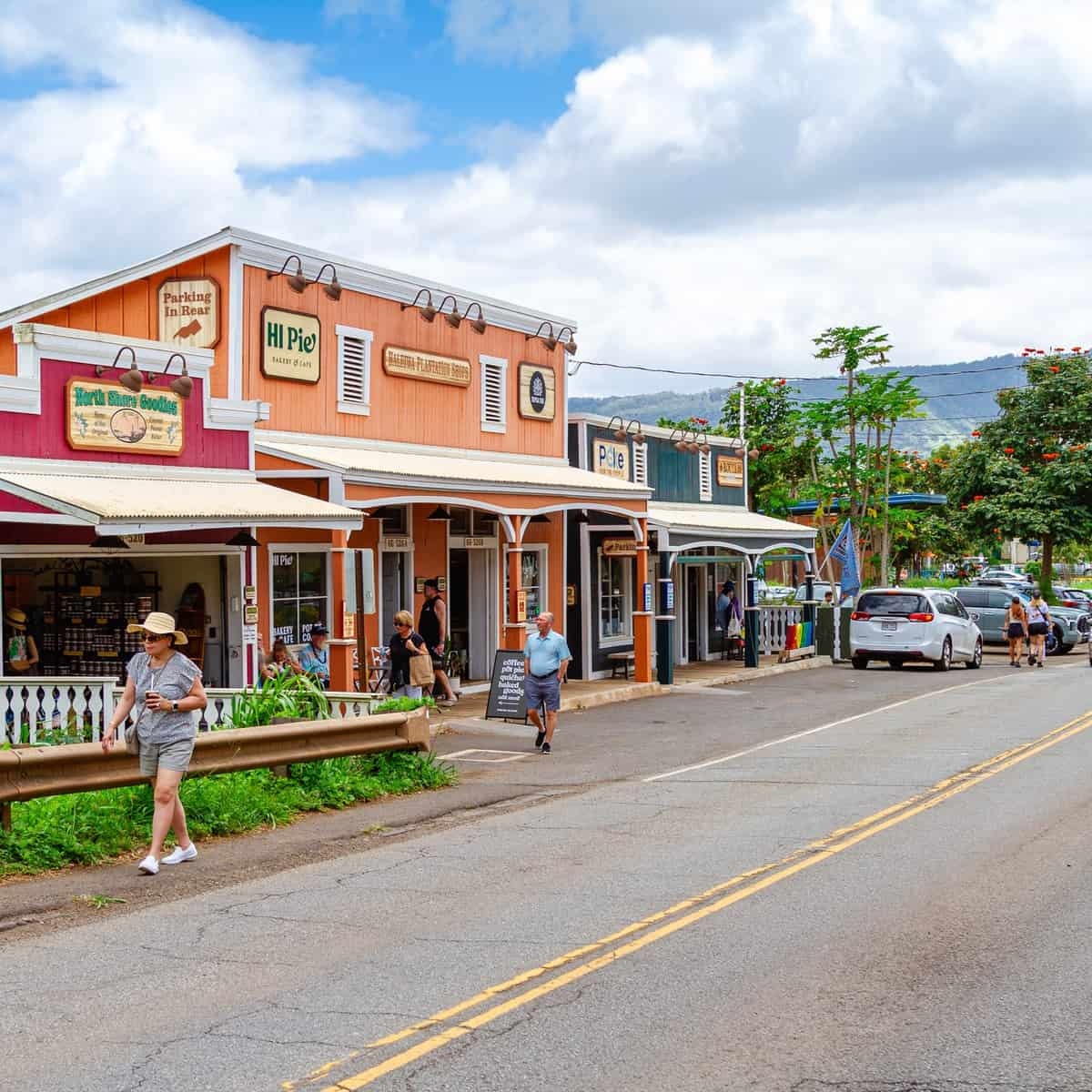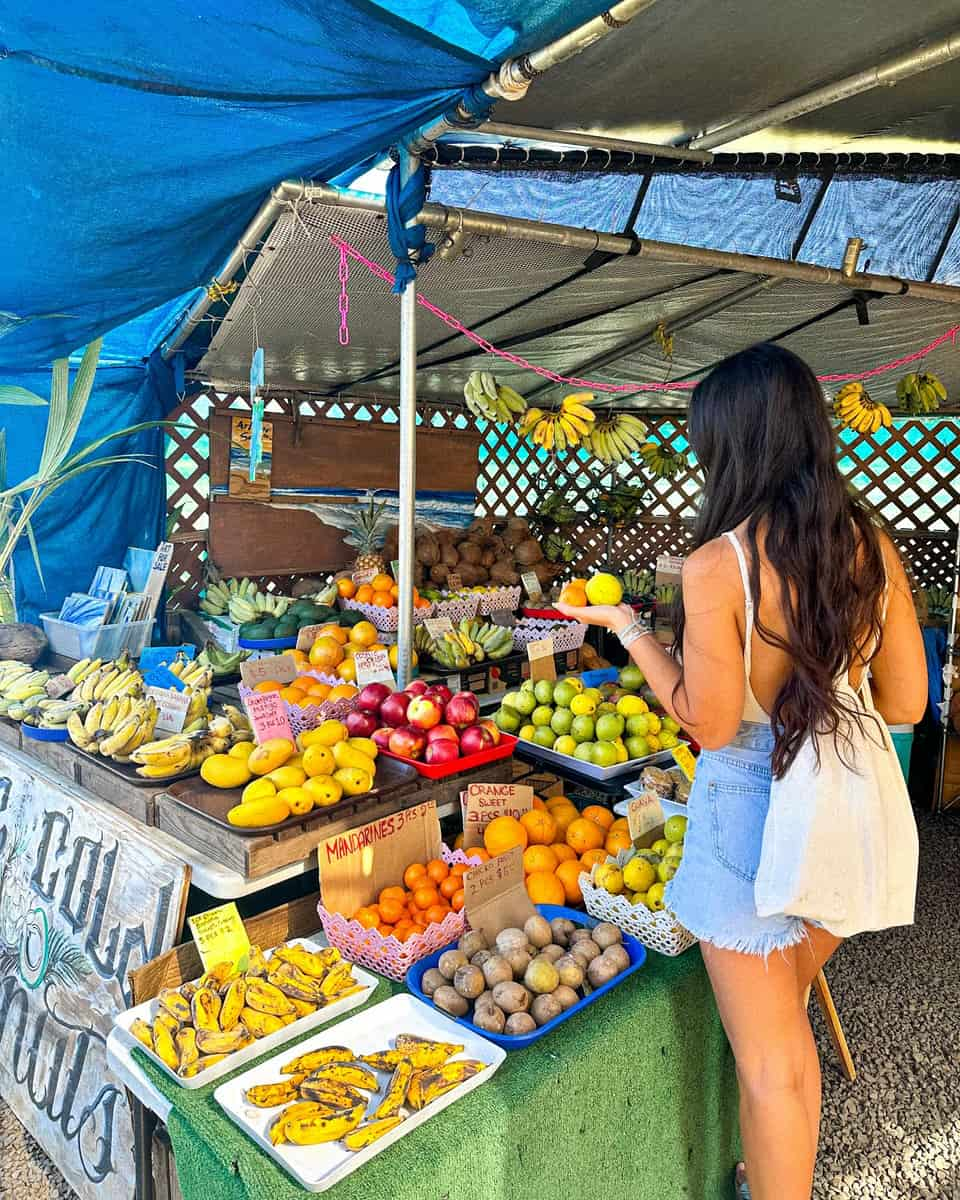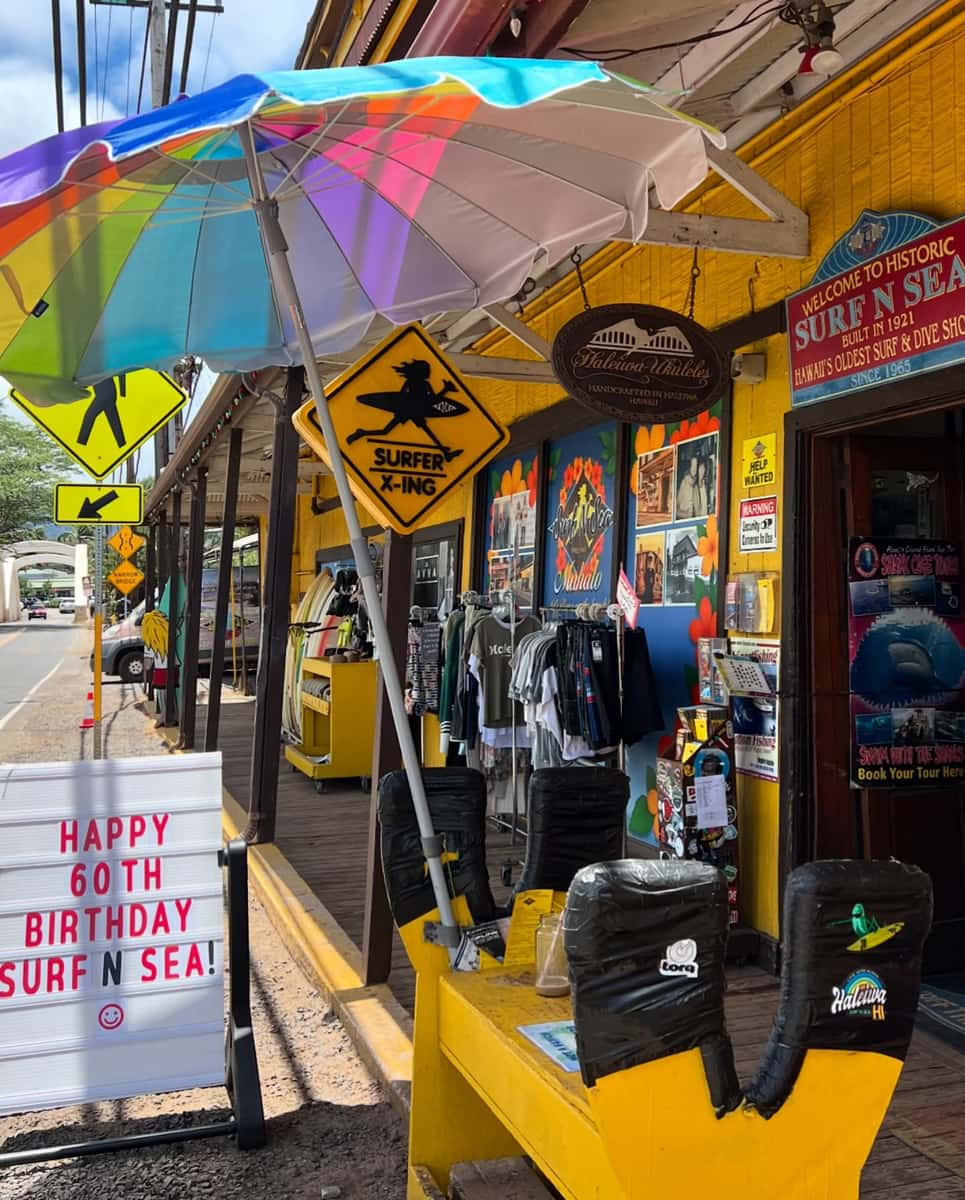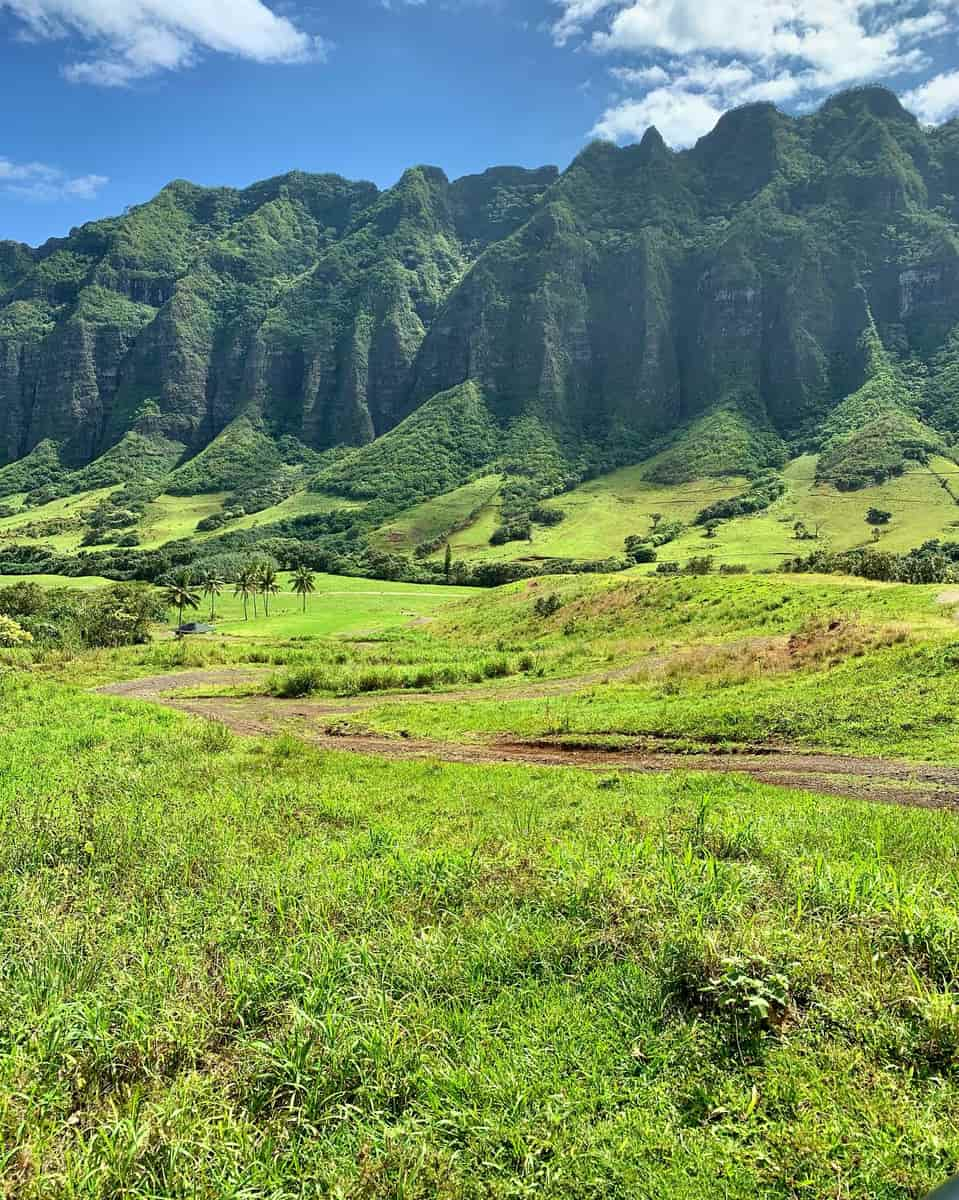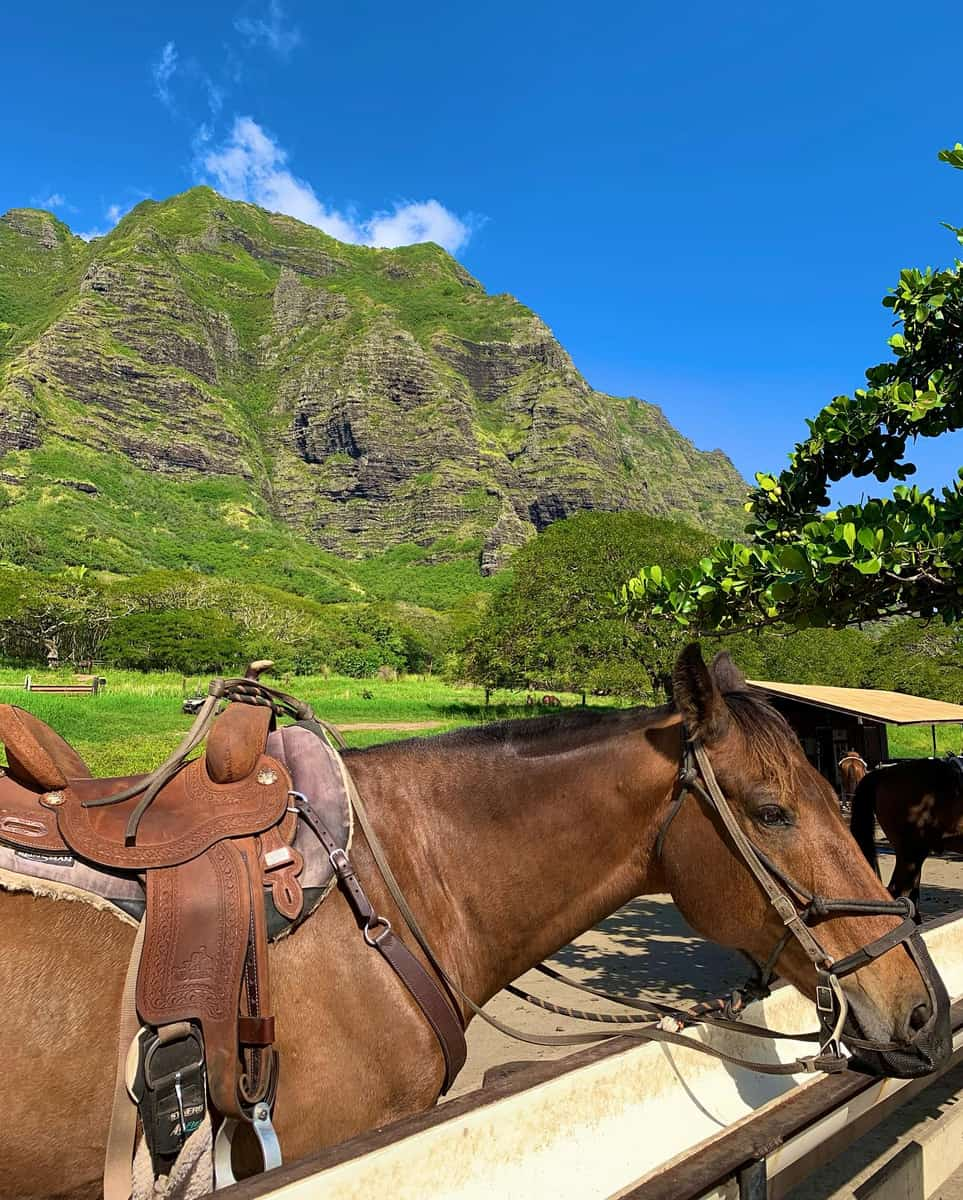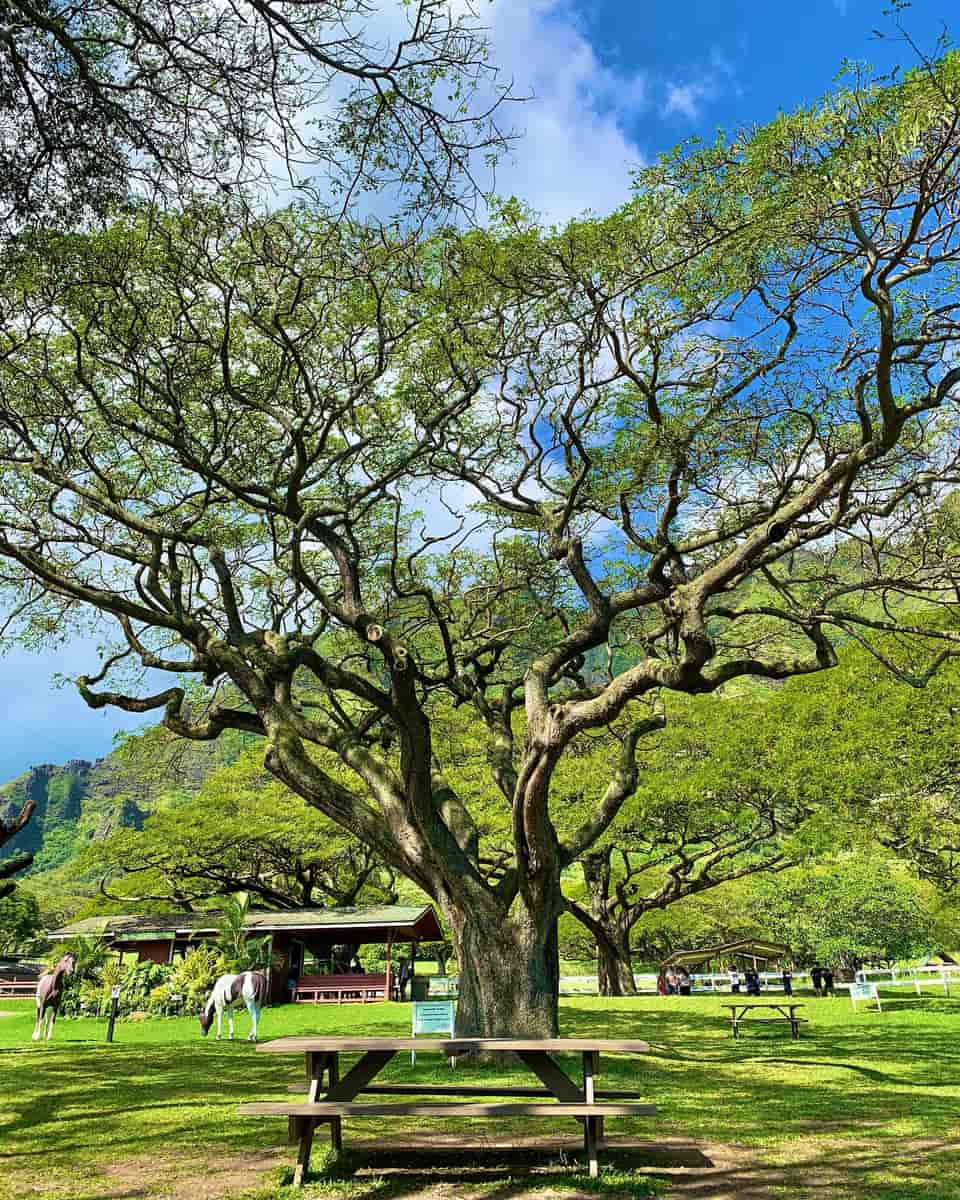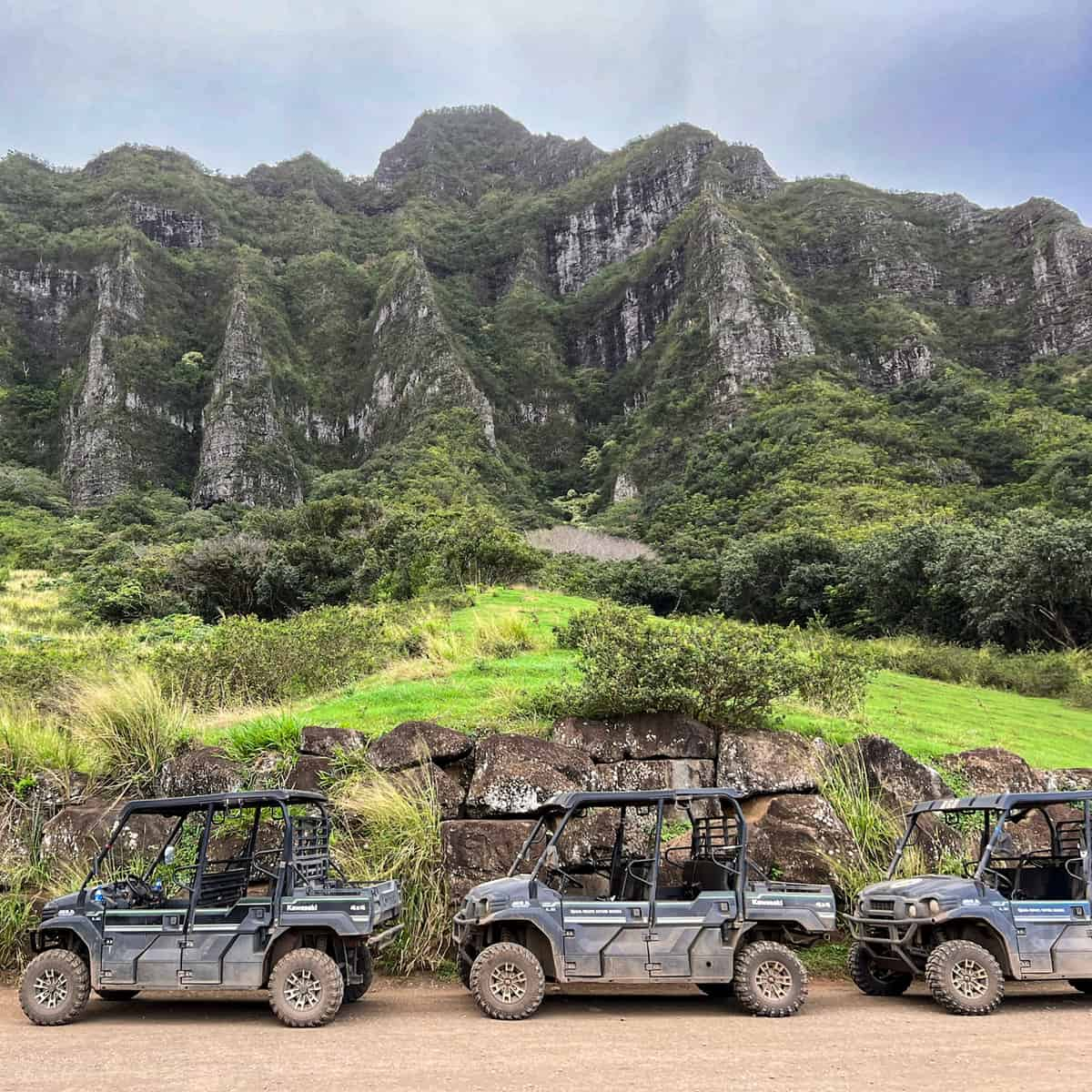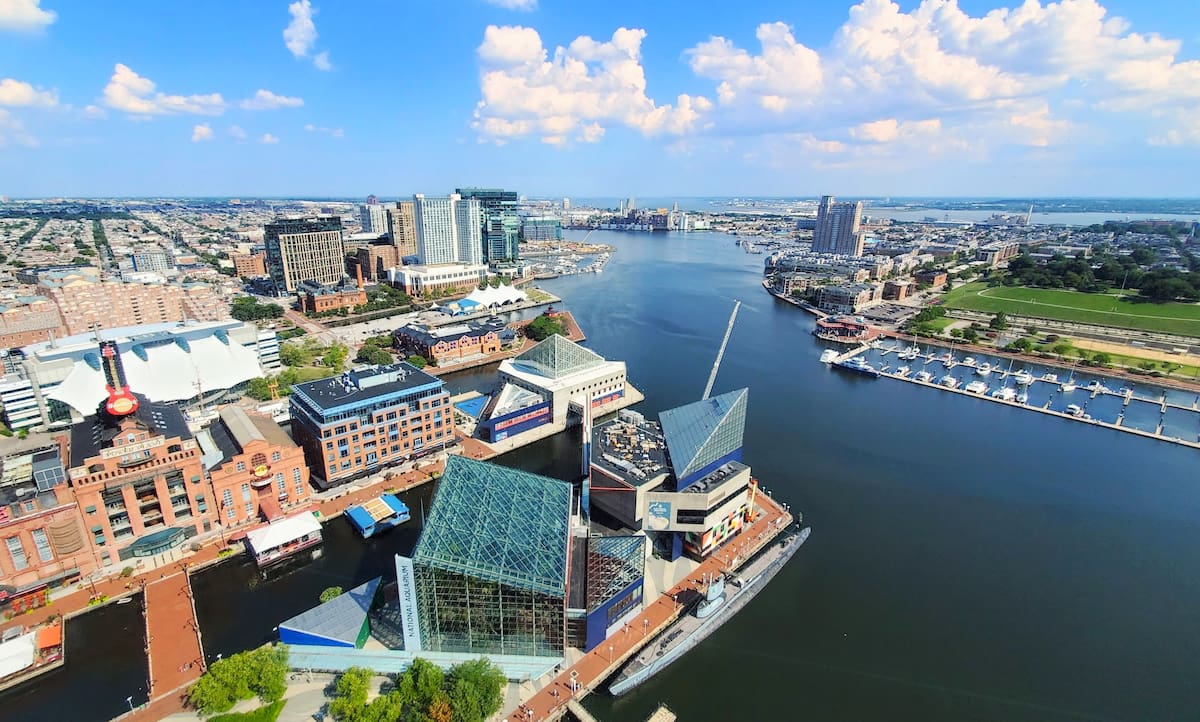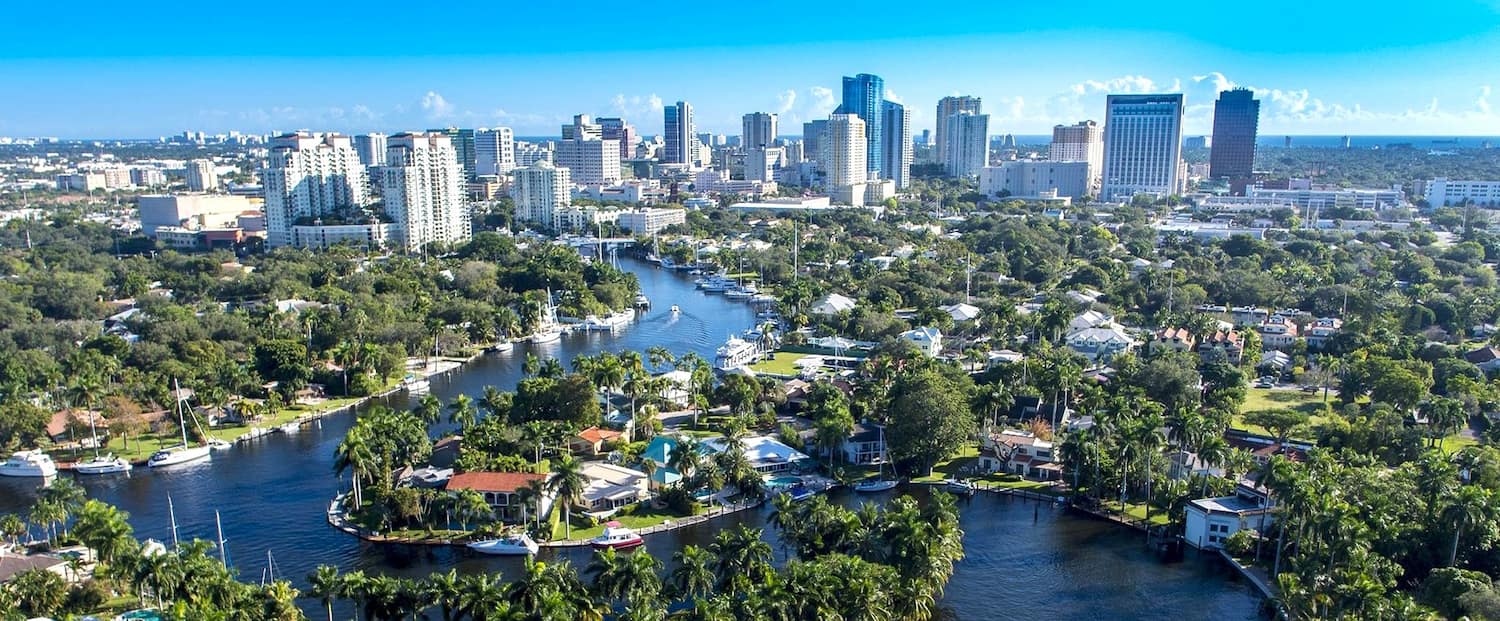Dreaming of swaying palm trees, crystal-clear waters, and the perfect mix of city excitement and island relaxation? Honolulu, the vibrant capital of Hawaii, offers exactly that and so much more. From the moment you feel the warm tropical breeze on your face, you’ll understand why this Pacific paradise draws visitors from around the world.
During my recent trip to Honolulu, I discovered hidden beaches, hiked volcanic craters, explored royal palaces, and sampled delicious local foods that still make my mouth water. Whether you’re planning your first Hawaiian adventure or returning to explore more of Oahu’s treasures, this guide will take you beyond the tourist hotspots to experience the authentic aloha spirit that makes Honolulu truly special.
🏠 Where to Stay in Honolulu
- 💎 Luxury Hotel: 'Alohilani Resort Waikiki Beach, Honolulu
- ✨ 5-Star: The Royal Hawaiian, A Luxury Collection Resort, Waikiki, Honolulu
- 🏨 4-Star: The Ambassador of Waikiki, Tapestry Collection by Hilton, Honolulu
- 🛏️ 3-Star: Airport Honolulu Hotel, Honolulu
- 💸 Cheap: Waikiki Beachside Hostel, Honolulu
- 🏢 Apartment: Aston at the Executive Centre Hotel, Honolulu
- 👨👩👧👦 For Families: Wayfinder Waikiki - Voted Top 10 Best Hotels in Hawaii!, Honolulu
- 🏩 For Couples: Aqua Palms Waikiki, Honolulu
💁 Best Guided Tours
- Pearl Harbor USS Arizona Memorial & Battleship Missouri from $149 (⭐4.6/5)
- Hanauma Bay Snorkeling from $56 (⭐4.4/5)
- Half-Day Pearl Harbor and Honolulu Landmarks Tour from $79 (⭐4.5/5)
- Polynesian Cultural Center and Mini Circle Island Including Pearl Harbor from $189 (⭐4.8/5)
Best Things To Do in Honolulu
1. Pearl Harbor National Memorial
Historic significance. Walking through Pearl Harbor National Memorial, I felt a profound connection to American history that’s impossible to describe. The open-air visitor center houses two world-class museums filled with artifacts that tell the story of that fateful day. Standing on the USS Arizona Memorial above the sunken battleship brought tears to my eyes as I watched oil droplets still rising from the wreckage below. The memorial’s design creates a solemn atmosphere that perfectly honors those who lost their lives here.
| Experience | Price (USD) | Hours | Location |
|---|---|---|---|
| Pearl Harbor Visitor Center | Free | 7:00-17:00 daily | 1 Arizona Memorial Place |
| USS Arizona Memorial program | $1 reservation fee | 7:00-17:00 daily | Same as above |
| Passport to Pearl Harbor (all sites) | $94.99 adult / $44.99 child (4-12) | Varies by site | Visitor Center |
| Individual site tickets | $21.99-$34.99 adult | Varies by site | Various locations |
Beyond the Arizona. The Passport to Pearl Harbor unlocked an incredible full-day experience that took me to all four historic sites. I explored the massive Battleship Missouri where World War II officially ended, wandered through the fascinating Pacific Fleet Submarine Museum, and marveled at vintage aircraft in the Pearl Harbor Aviation Museum. My favorite unexpected discovery was the Bob Hope exhibit at the Aviation Museum that showcased his wartime contributions through personal memorabilia.
Personal reflection. The most moving part of my visit was the 23-minute documentary film shown before boarding the boat to the USS Arizona Memorial. The footage provides crucial context that deepened my understanding of the events. I recommend setting aside at least 4-5 hours for the main memorial, though history enthusiasts could easily spend a full day exploring all sites. Bringing a small bouquet to place at the memorial wall of names feels especially meaningful when you see the fresh flowers left by survivors’ families.
⭐ Best Activities
- Pearl Harbor USS Arizona Memorial & Battleship Missouri – Experience this deeply moving 6-hour tour that includes round-trip transportation from Waikiki, a boat ride to the USS Arizona Memorial, and exploration of the USS Missouri where World War II ended with Japan’s surrender.
2. Hanauma Bay Snorkeling
Marine paradise. Floating above the coral reef at Hanauma Bay, I found myself surrounded by schools of yellow tangs and rainbow-colored parrotfish just a few feet from shore. This protected marine conservation area sits inside an ancient volcanic crater, creating a natural aquarium teeming with Hawaiian sea life. The curved bay shields swimmers from strong currents, making it perfect for beginners and experienced snorkelers alike. I spotted at least eight different species of tropical fish within minutes of entering the crystal-clear water.
| Experience | Price (USD) | Hours | Location |
|---|---|---|---|
| Entry fee | $25 adults, free for Hawaii residents | 6:45-16:00 (Closed Mondays & Tuesdays) | 7455 Kalanianaole Hwy |
| Parking | $3 per vehicle | 6:45-16:00 | On-site lot |
| Snorkel rental | $20 mask/snorkel/fins set | 7:00-15:30 | Beach rental stand |
| Locker rental | $10 small, $12 large | 7:00-15:30 | Beach rental stand |
Conservation efforts. Before entering the bay, I watched a mandatory 9-minute educational video about reef protection and proper snorkeling etiquette. The bay limits daily visitors to 3,000 people to prevent overcrowding and reef damage. Rangers actively patrol the beach and water, ensuring nobody stands on coral or feeds the fish. These conservation measures have helped Hanauma Bay recover from decades of tourism impact, with noticeably healthier coral and more abundant fish populations.
Unforgettable encounters. My most magical moment came when a Hawaiian green sea turtle glided past me in about six feet of water near the center of the bay. The massive creature seemed completely unbothered by my presence, continuing its graceful underwater flight while I hovered above in awe. Bringing an underwater camera proved worthwhile for capturing these fleeting wildlife encounters, though nothing compares to seeing these creatures in person.
⭐ Best Activities
- Hanauma Bay Snorkeling Adventure – Dive into Hawaii’s premier marine conservation area with provided snorkeling equipment, where you’ll swim among over 400 species of tropical fish and graceful sea turtles in crystal-clear waters.
3. Iolani Palace Tour
Royal history. Walking through Iolani Palace, I felt transported to Hawaii’s monarchy era as I stood in the same grand halls where King Kalakaua and Queen Liliuokalani once ruled. This stunning Italian Renaissance building is the only royal palace on American soil, featuring original furnishings, portraits, and crown jewels that have been meticulously restored. The grand staircase, made from native koa wood, creaked beneath my feet as I ascended to the private royal quarters. I was surprised to learn the palace had electricity and telephones before even the White House.
| Tour Options | Price (USD) | Hours | Notes |
|---|---|---|---|
| Guided Tour | $27 adults, $6 children | Tue-Sat, 9:00-15:00 | Reservations recommended |
| Self-Led Audio Tour | $20 adults, $6 children | Tue-Sat, 9:00-15:00 | More flexible timing |
| Basement Gallery Only | $10 adults, $6 children | Tue-Sat, 9:00-15:00 | Quick option |
| Virtual Tour | $7 | 24/7 online | For remote viewing |
Royal imprisonment. The most moving room in the palace was Queen Liliuokalani’s bedroom, where she was imprisoned for eight months after the overthrow of the Hawaiian monarchy. Our guide showed us the quilt the queen made during her confinement, with embroidered messages documenting her experience. The queen composed over 200 songs during her lifetime, including the famous “Aloha Oe,” which played softly through the palace speakers as we toured her personal chambers.
Cultural significance. The palace serves as more than just a tourist attraction—it remains a powerful symbol of Hawaiian sovereignty and cultural pride. I noticed several Hawaiian visitors paying their respects with traditional chants near the king’s portrait. The docents, many of Hawaiian descent, shared personal connections to the monarchy that added emotional depth to the historical facts. The palace gift shop offers beautiful locally-made items including Hawaiian quilts and jewelry inspired by royal designs.
⭐ Best Activities
- Tour: Half-Day Pearl Harbor and Honolulu Landmarks Tour – Combine Pearl Harbor’s USS Memorial with a guided tour through historic Honolulu, including stops at Punchbowl National Cemetery, Iolani Palace, and the King Kamehameha statue.
- Ticket online: Oahu Pass: Save up to 50% on Top Attractions - Includes Luau – Access over 40 top attractions and activities with this convenient pass.
4. Honolulu Museum of Art
Artistic diversity. The Honolulu Museum of Art surprised me with its impressive collection spanning 5,000 years and multiple continents in an intimate setting. Walking through the Japanese garden courtyard, I felt miles away from bustling Honolulu despite being in the heart of the city. The museum houses over 50,000 pieces, including one of America’s finest collections of Asian art alongside European masters like Van Gogh and Monet. I was particularly drawn to the contemporary Hawaiian artists’ gallery, which explores modern island identity through bold mixed-media works.
| Visitor Information | Price (USD) | Hours | Location |
|---|---|---|---|
| General Admission | $20 adults, free for 18 and under | Thu-Sun, 10:00-18:00 | 900 S Beretania St |
| Art After Dark (last Friday) | $25 non-members | 18:00-21:00 | Main museum |
| Guided Tour | Included with admission | 11:00 & 14:00 daily | Meet at entrance |
| Spalding House (closed branch) | Now closed | N/A | Formerly in Makiki Heights |
Hidden gems. The museum’s Arts of Hawaii gallery contains rare featherwork pieces that once adorned Hawaiian royalty, including a brilliant yellow and red cape that took thousands of tiny bird feathers to create. In the textile room, I discovered an entire collection of Japanese ukiyo-e prints depicting daily life in ancient Edo (Tokyo). The museum’s café, set in a peaceful courtyard surrounded by sculptures, serves locally-sourced dishes that are artistic presentations themselves.
Cultural programs. During my visit, I joined a hands-on Hawaiian printmaking workshop where I created my own block print inspired by traditional motifs. The museum regularly hosts film screenings in their Doris Duke Theatre, featuring international cinema you won’t find elsewhere in Honolulu. Their Art After Dark events transform the museum into a vibrant social scene with live music, food vendors, and themed activities that attract a younger crowd than typical daytime visits.
5. Bishop Museum
Cultural treasure. Stepping into Bishop Museum’s Hawaiian Hall felt like entering a sacred space, with three floors of artifacts illuminating Hawaiian culture from creation myths to modern times. The soaring Victorian architecture houses the world’s largest collection of Polynesian cultural and scientific artifacts. I stood beneath a full-size sperm whale skeleton suspended from the ceiling while traditional chants played softly in the background. The newly renovated Pacific Hall explores Hawaii’s connections to other Pacific Island cultures through interactive displays and stunning outrigger canoes.


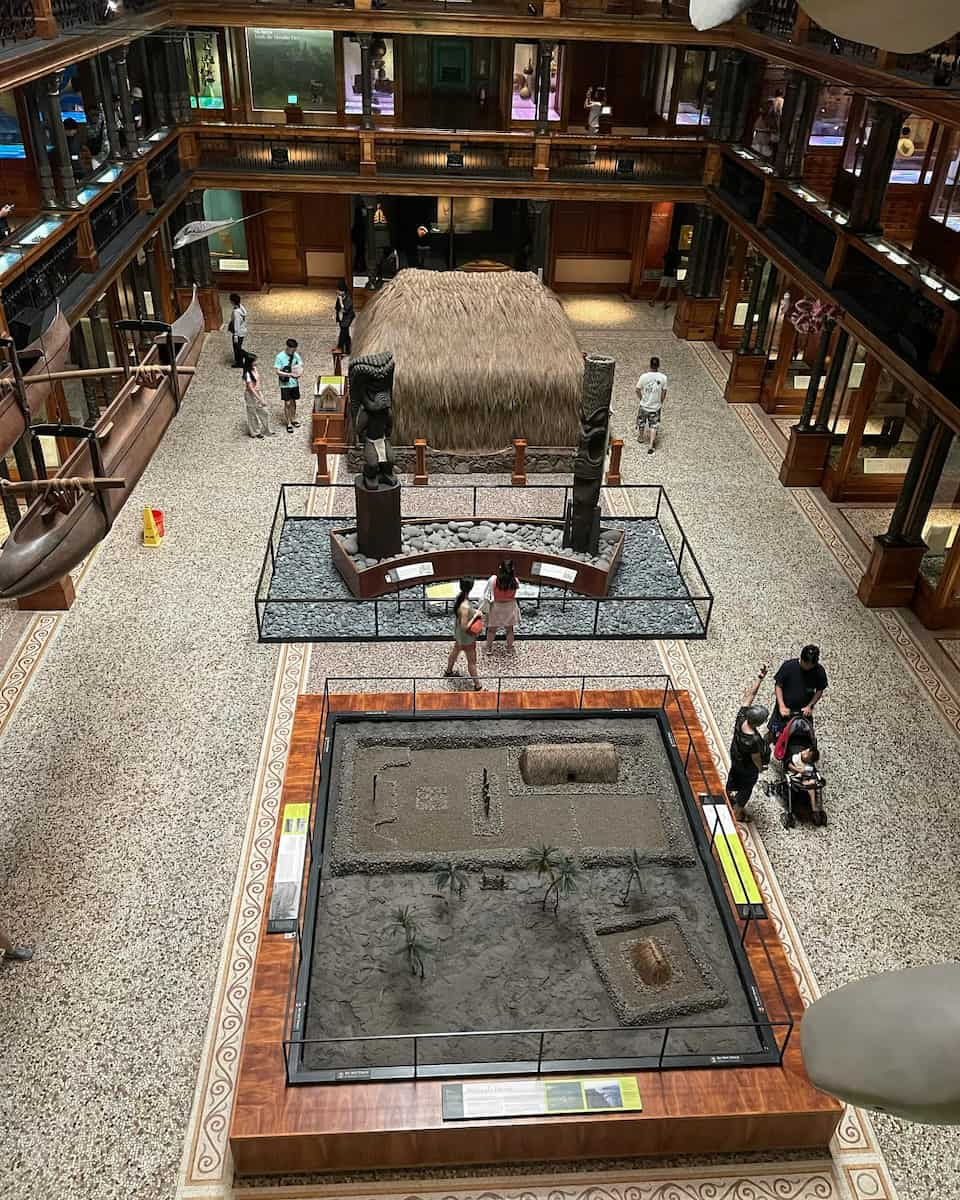
| Museum Information | Price (USD) | Hours | Location |
|---|---|---|---|
| General Admission | $24.95 adults, $16.95 children | Daily 9:00-17:00 | 1525 Bernice St |
| Planetarium Shows | +$2.95 with admission | Multiple daily shows | Science Adventure Center |
| Cultural Demonstrations | Included with admission | 11:00, 13:00, 15:00 | Hawaiian Hall |
| Bishop Museum Press Books | $15-45 | Gift shop hours | Museum store |
Science and stars. The Science Adventure Center blew me away with its 26-foot simulated volcano that erupts throughout the day, complete with glowing lava tubes you can walk through. I caught a planetarium show about ancient Polynesian navigation that explained how islanders used stars, currents, and wildlife patterns to voyage across thousands of miles of open ocean. The hands-on exhibits let me test my skills at reading wave patterns and identifying different types of volcanic rock found throughout the Hawaiian islands.
Living culture. What makes Bishop Museum special is how it connects past and present Hawaiian culture. I watched a master craftsman demonstrate traditional kapa (bark cloth) making, pounding mulberry bark into soft material using carved beaters. The museum hosts regular cultural festivals celebrating everything from Hawaiian music to taro cultivation. The native plant garden features species used for traditional medicine, with detailed signage explaining their properties and how they’re prepared by cultural practitioners today.
⭐ Best Activities
- Bishop Museum General Admission – Explore Hawaii’s premier natural and cultural history museum, featuring world-class exhibits including the exciting new Dinosaurs exhibition, with general admission starting at $30.95 for youth when booked online.
6. Polynesian Cultural Center
Island immersion. The Polynesian Cultural Center transported me across the Pacific through six authentic village recreations representing Hawaii, Fiji, Samoa, Tahiti, Tonga, and Aotearoa (New Zealand). In the Samoan village, I laughed as a charismatic presenter climbed a coconut tree barefoot and demonstrated how to make fire by rubbing sticks together. Each village features hands-on activities led by natives of those islands, from spear throwing in Tonga to playing traditional Tahitian drums. The 42-acre property feels like multiple international trips in one day.

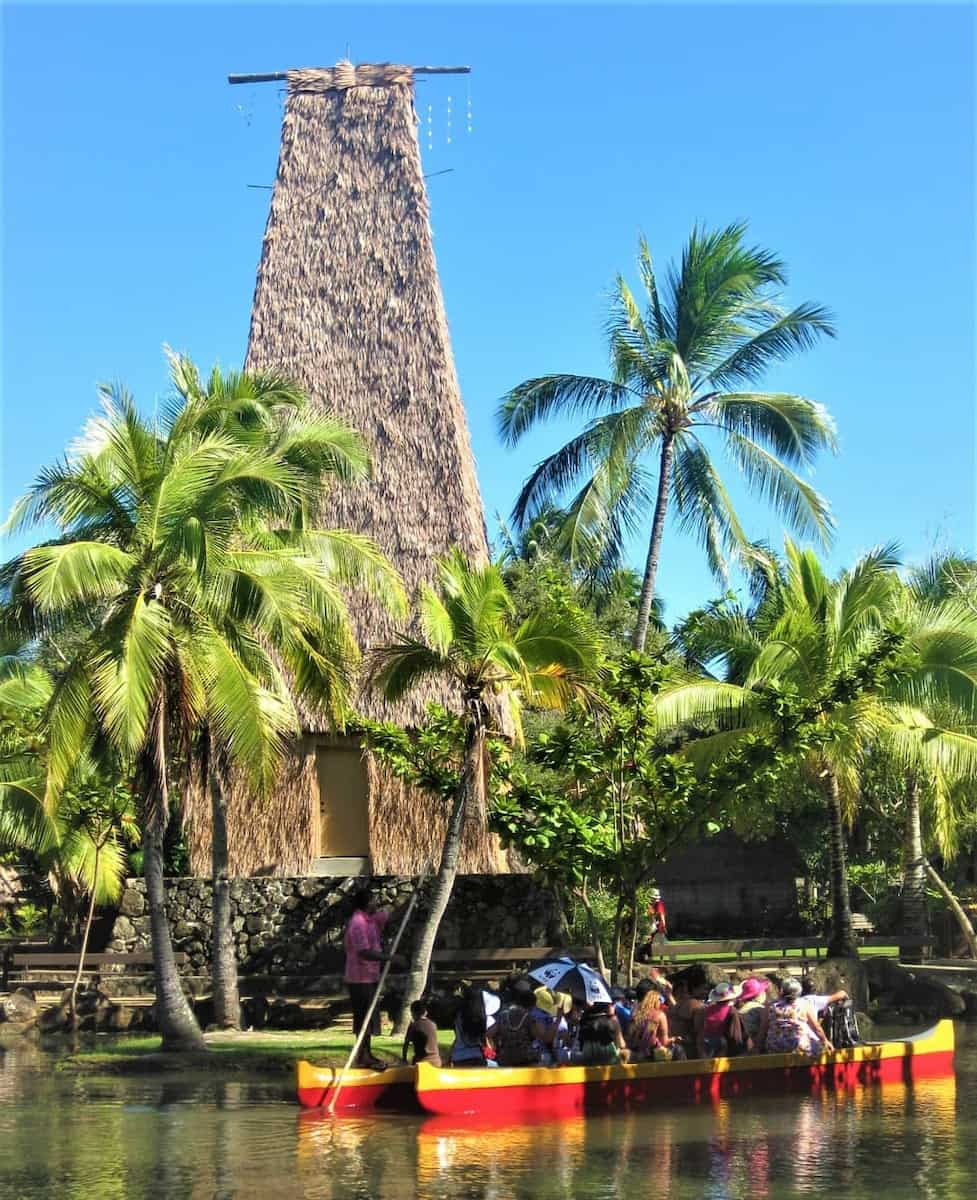
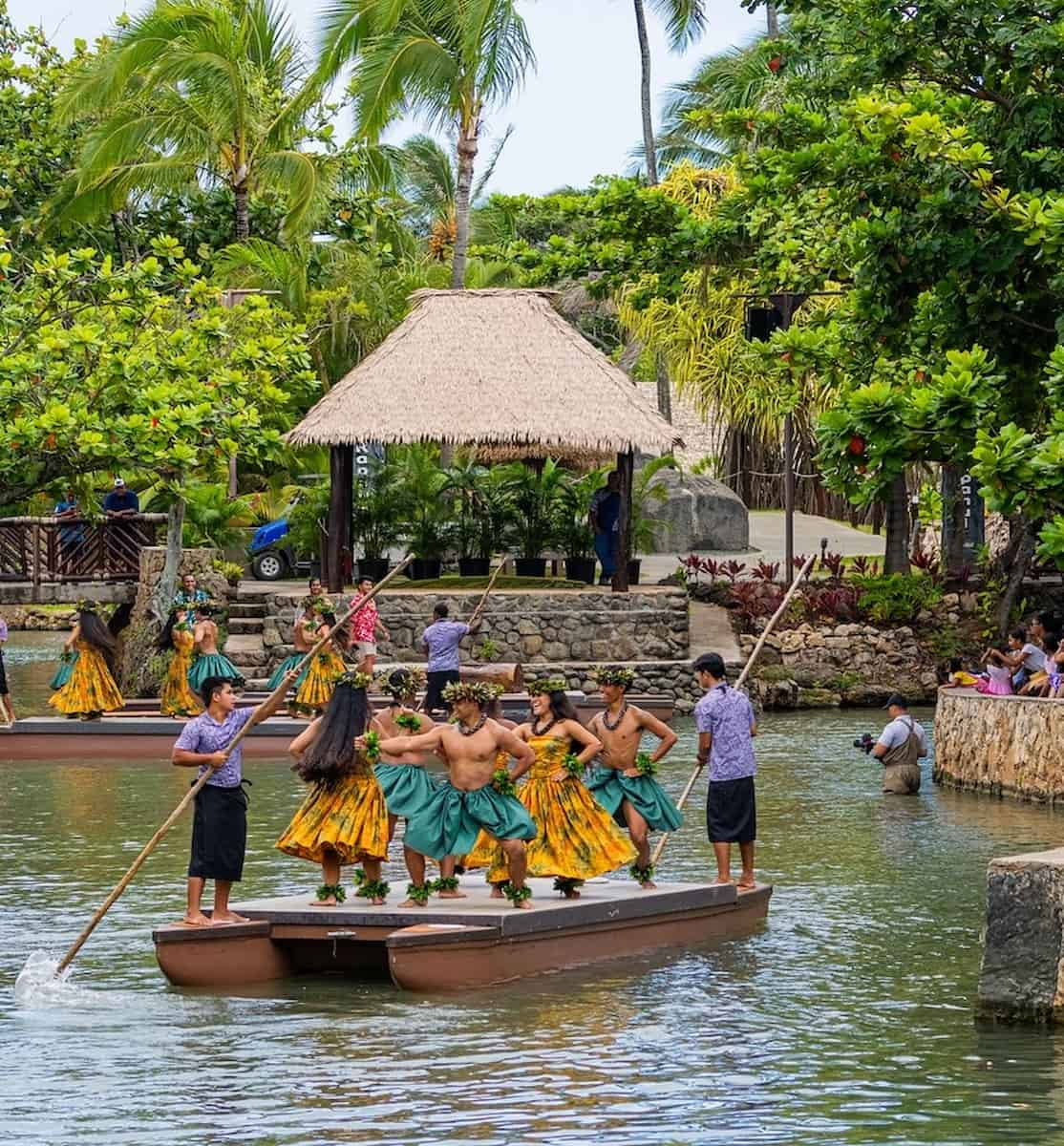
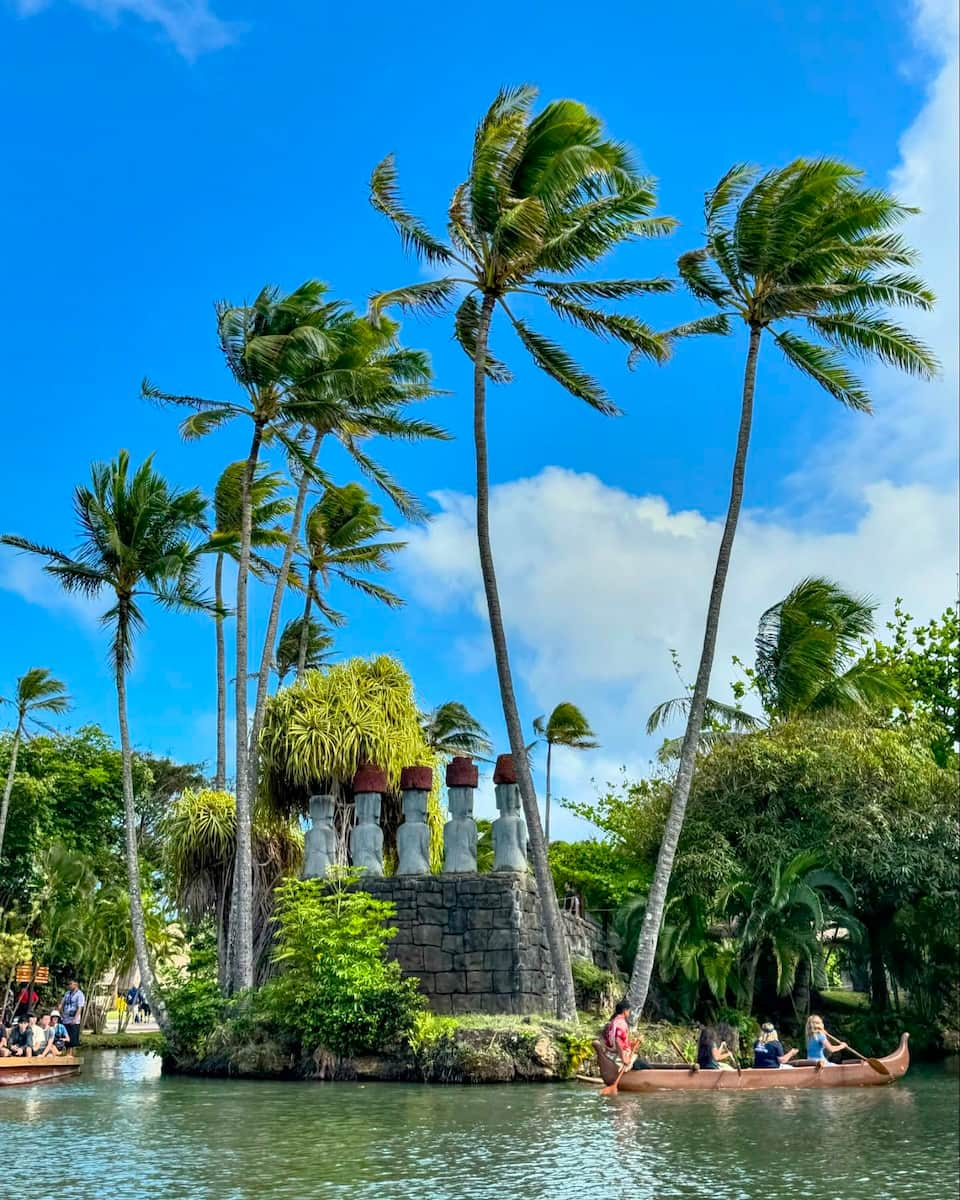

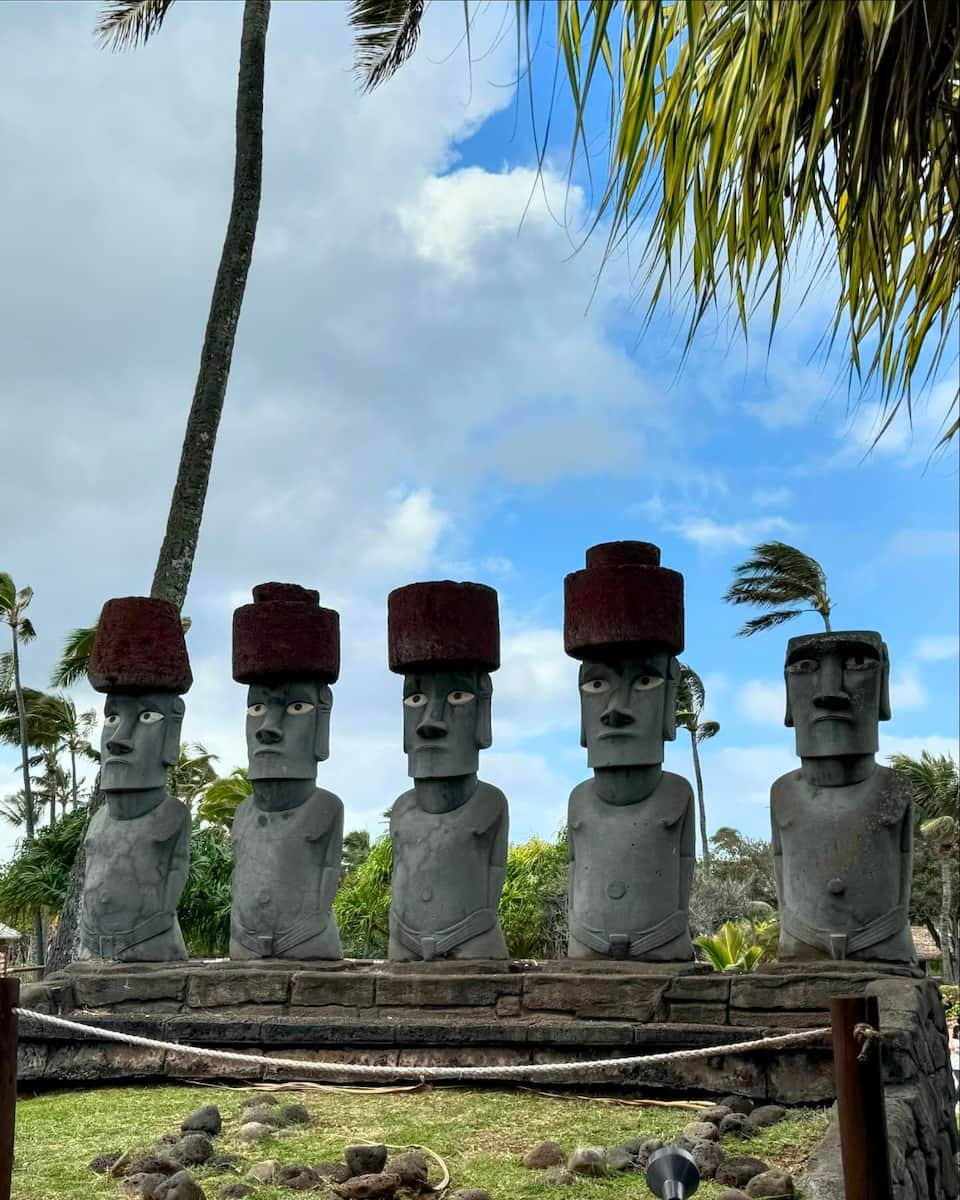
| Experience Options | Price (USD) | Hours | Includes |
|---|---|---|---|
| General Admission | $69.95 | 12:00-18:00 | Villages only |
| Ali’i Luau Package | $139.95 | 12:00-21:30 | Villages, luau dinner, night show |
| Ambassador Package | $259.95 | 12:00-21:30 | All experiences plus guided tour |
| Circle Island Tour add-on | +$59.95 | 7:00-11:30 | North Shore sightseeing |
Cultural performances. The afternoon canoe pageant featured dancers from each island nation gliding across a lagoon in traditional vessels, performing signature dances aboard their moving stages. I learned to sway my hips in a basic hula lesson, discovering that hand gestures tell specific stories about nature, emotions, and historical events. The evening show “Hā: Breath of Life” featured over 100 performers in a theatrical production following a boy’s journey through life, with spectacular fire knife dancing that had me holding my breath.
Authentic flavors. The Ali’i Luau offered my first taste of traditional Hawaiian foods like kalua pork (slow-roasted in an underground oven), poi (taro paste), and lomi lomi salmon (tomato and salmon salad). While eating, I watched hula dancers perform on stage as the sunset painted the sky behind them. The Polynesian Cultural Center is operated by Brigham Young University-Hawaii, with many performers being students from the represented Pacific islands who share authentic aspects of their heritage while earning money for education.
⭐ Best Activities
- Polynesian Cultural Center and Circle Island Tour – Experience Oahu’s #1 attraction with recreated ancient villages from six Pacific islands, combined with a scenic circle island tour featuring Diamond Head, Halona Blowhole, and the famous Dole Plantation.
7. Ala Moana Center Shopping
Retail paradise. Wandering through Ala Moana Center, I discovered why it’s known as the world’s largest open-air shopping center with over 350 stores spread across four levels. The center blends indoor and outdoor spaces with koi ponds, tropical gardens, and mountain views creating a uniquely Hawaiian shopping experience. I browsed everything from luxury brands like Chanel and Gucci in the Luxury Row to local boutiques selling island-designed clothing and accessories. The center’s open design allows trade winds to flow through, keeping shoppers comfortable even on warm Hawaiian days.
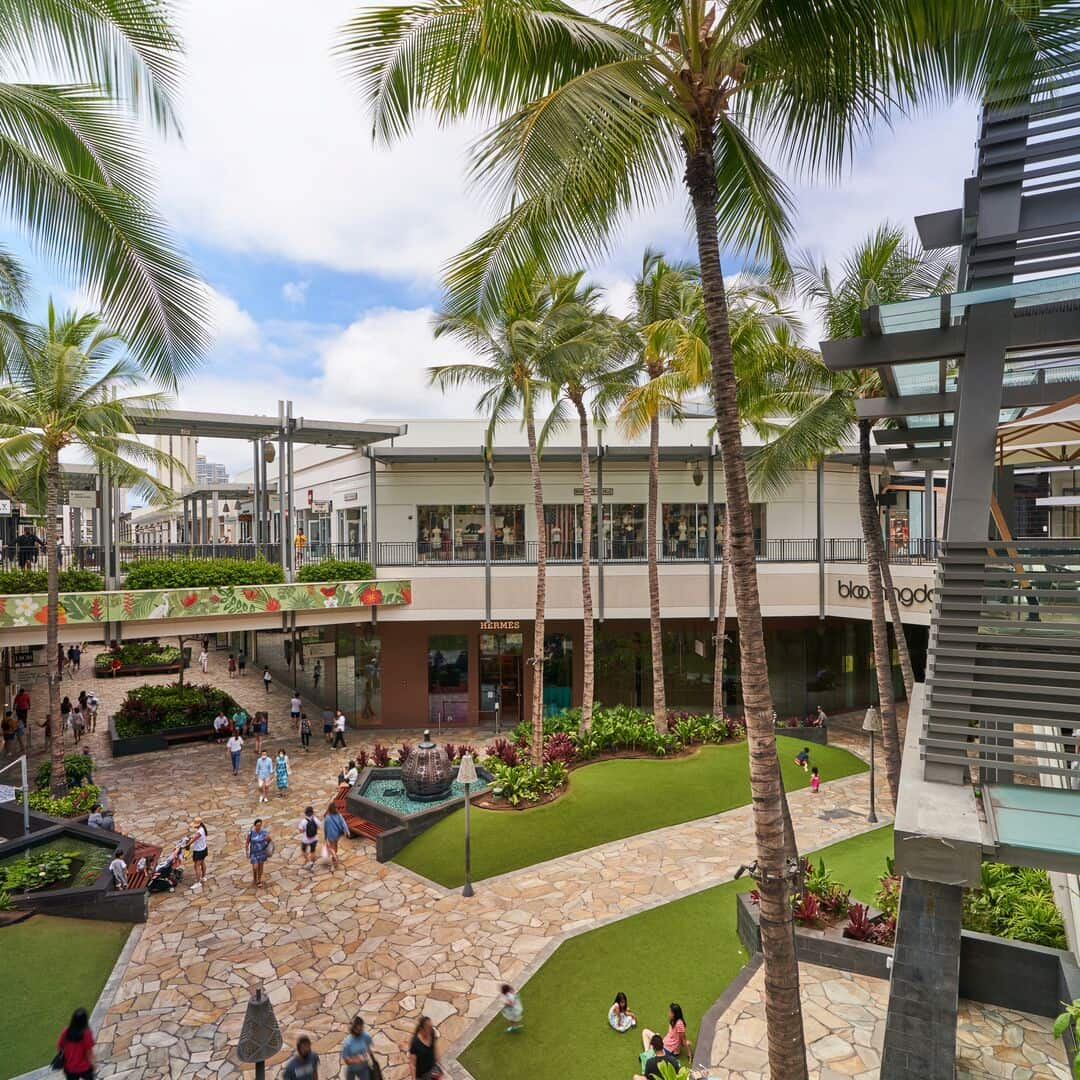
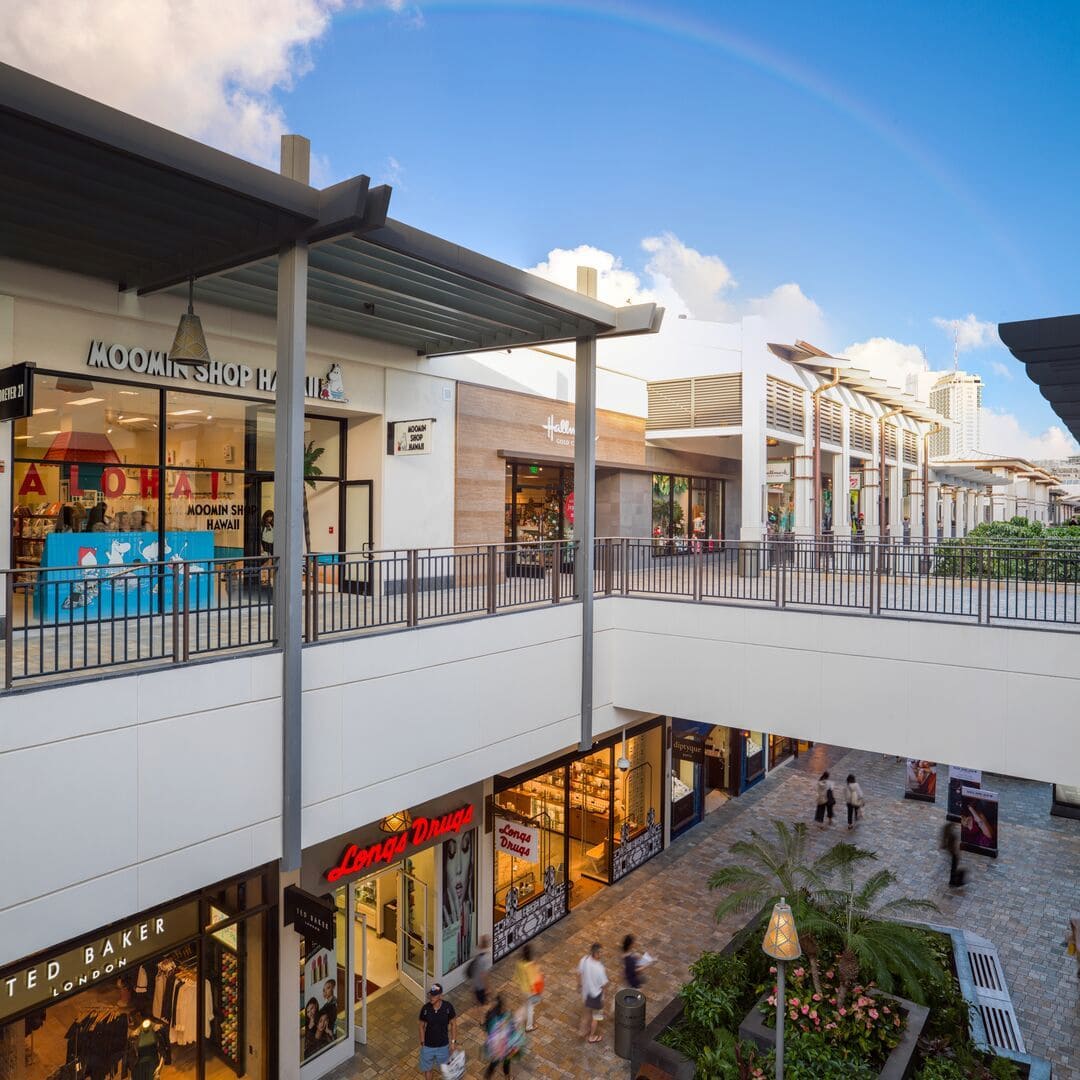

| Shopping Categories | Price Range | Location | Notable Stores |
|---|---|---|---|
| Luxury Brands | $$$$ | Level 2, Luxury Row | Chanel, Gucci, Balenciaga |
| Hawaiian Boutiques | $$-$$$ | Level 2, Ewa Wing | Manaola, Kahala, Reyn Spooner |
| International Brands | $$-$$$ | Throughout | Uniqlo, Zara, H&M |
| Food Court & Restaurants | $-$$$ | Level 4, Makai Market | Shirokiya Japan Village Walk |
Local treasures. My favorite discovery was the collection of Hawaiian boutiques featuring locally designed aloha shirts, dresses, and jewelry. At Manaola, I found modern clothing with traditional Hawaiian patterns created using ancient kapa printing techniques. The SoHa Living store offered beautiful home goods with island motifs that make perfect souvenirs. I watched artisans at Philip Rickard create traditional Hawaiian heirloom jewelry using techniques dating back to the monarchy period.
Culinary delights. The Lanai food court transformed my idea of mall dining with local specialties like garlic shrimp plates and fresh poke bowls made to order. I spent an entire evening exploring Shirokiya Japan Village Walk, a Japanese food hall with over 20 restaurant stalls serving everything from ramen to takoyaki. The Mai Tai Bar provided the perfect sunset spot for watching the sky change colors while sipping their signature tropical cocktails made with fresh island fruits and local rum.
8. Kakaako Street Art Tour
Urban gallery. Exploring Kakaako’s warehouse district, I discovered Honolulu’s most vibrant neighborhood transformed by massive murals covering entire buildings. The annual POW! WOW! Hawaii festival brings artists from around the world to create new works each February, constantly refreshing the neighborhood’s appearance. I turned each corner to find another stunning piece—a portrait of a Hawaiian elder with traditional tattoos, sea creatures swimming across a parking structure, abstract patterns inspired by traditional tapa cloth designs. The contrast between industrial buildings and world-class art creates a uniquely photogenic urban landscape.
| Street Art Information | Cost | Best Viewing Times | Notable Areas |
|---|---|---|---|
| Self-guided tour | Free | Anytime (daylight hours) | Cooke St, Pohukaina St |
| Hawaii Pow Wow Festival | Free to observe | February annually | Throughout Kakaako |
| Art+Flea market | Free entry | Last Friday monthly, 17:00-22:00 | SALT at Our Kakaako |
| Guided bike tour | $49 | Daily at 9:00 & 13:00 | Starts at Aloha Stadium |
Creative community. Beyond the murals, Kakaako has evolved into Honolulu’s creative hub with artisan workshops, craft breweries, and design studios filling former industrial spaces. I watched glassblowers creating delicate sculptures at the Hawaii Glass Project, then sampled flight of local beers at Aloha Beer Company housed in a converted warehouse. The monthly Night Market brings together local designers, food trucks, and live music for an evening street festival that showcases Hawaii’s contemporary creative scene.
Cultural fusion. What makes Kakaako’s street art special is how it blends international urban art styles with distinctly Hawaiian themes and cultural elements. I noticed traditional Hawaiian patterns incorporated into modern designs and portraits celebrating local heroes alongside abstract works. SALT at Our Kakaako serves as the neighborhood’s cultural center with shops, restaurants, and event spaces hosting everything from ukulele concerts to film screenings. The area represents modern Hawaii’s multicultural identity expressed through art, food, and community gatherings.
9. Shangri La Museum
Islamic artistry. Hidden behind unassuming walls near Diamond Head lies Shangri La, tobacco heiress Doris Duke’s stunning seaside estate turned museum of Islamic art. The moment I stepped through the entry courtyard with its intricate tile work and carved wooden doors, I felt transported from Hawaii to Morocco. Duke spent decades collecting over 4,500 pieces of Islamic art from Spain, Morocco, Egypt, Syria, Iran, and India. The living room features a soaring carved wooden ceiling from Morocco, while 13th-century mihrab prayer niches adorn the walls alongside contemporary Islamic artworks.
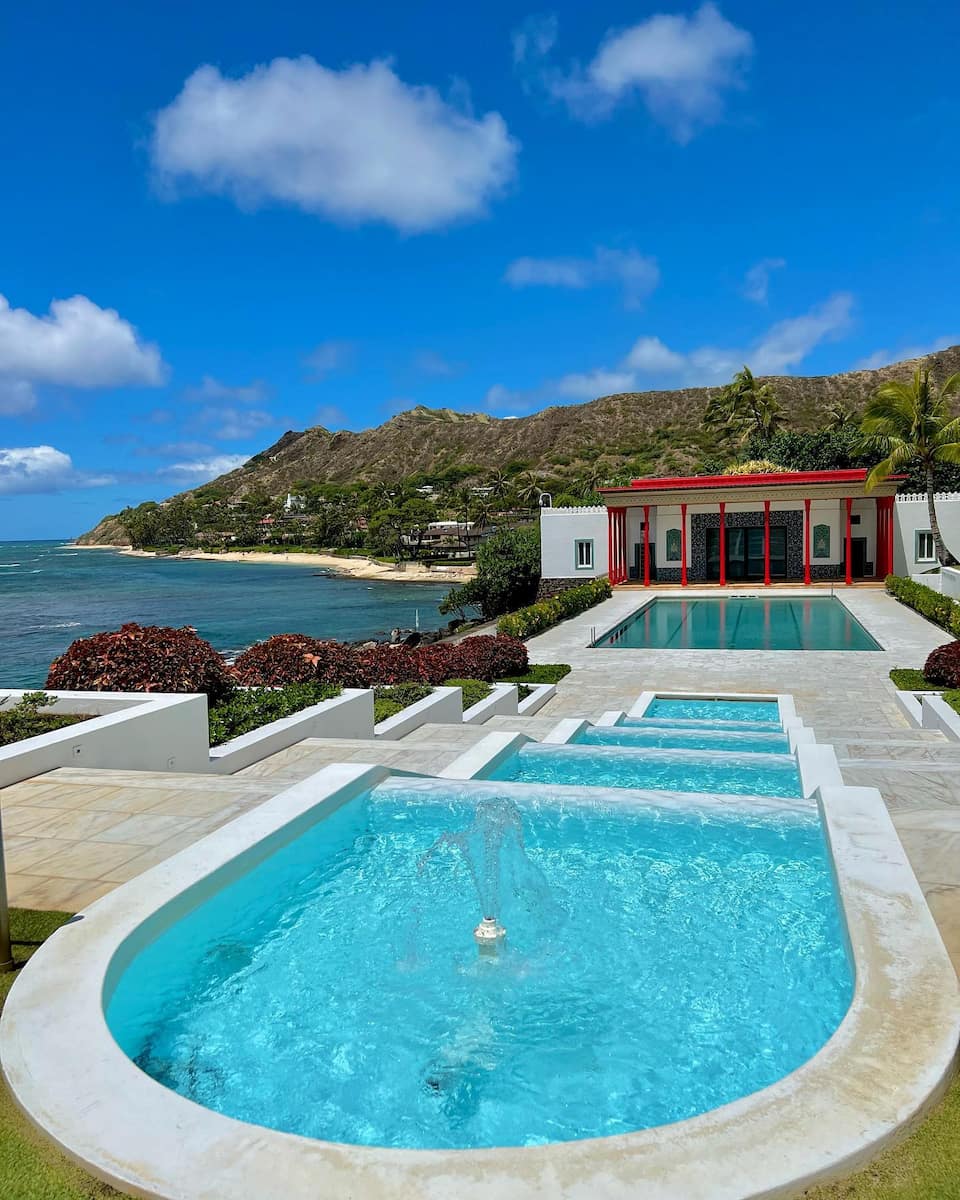
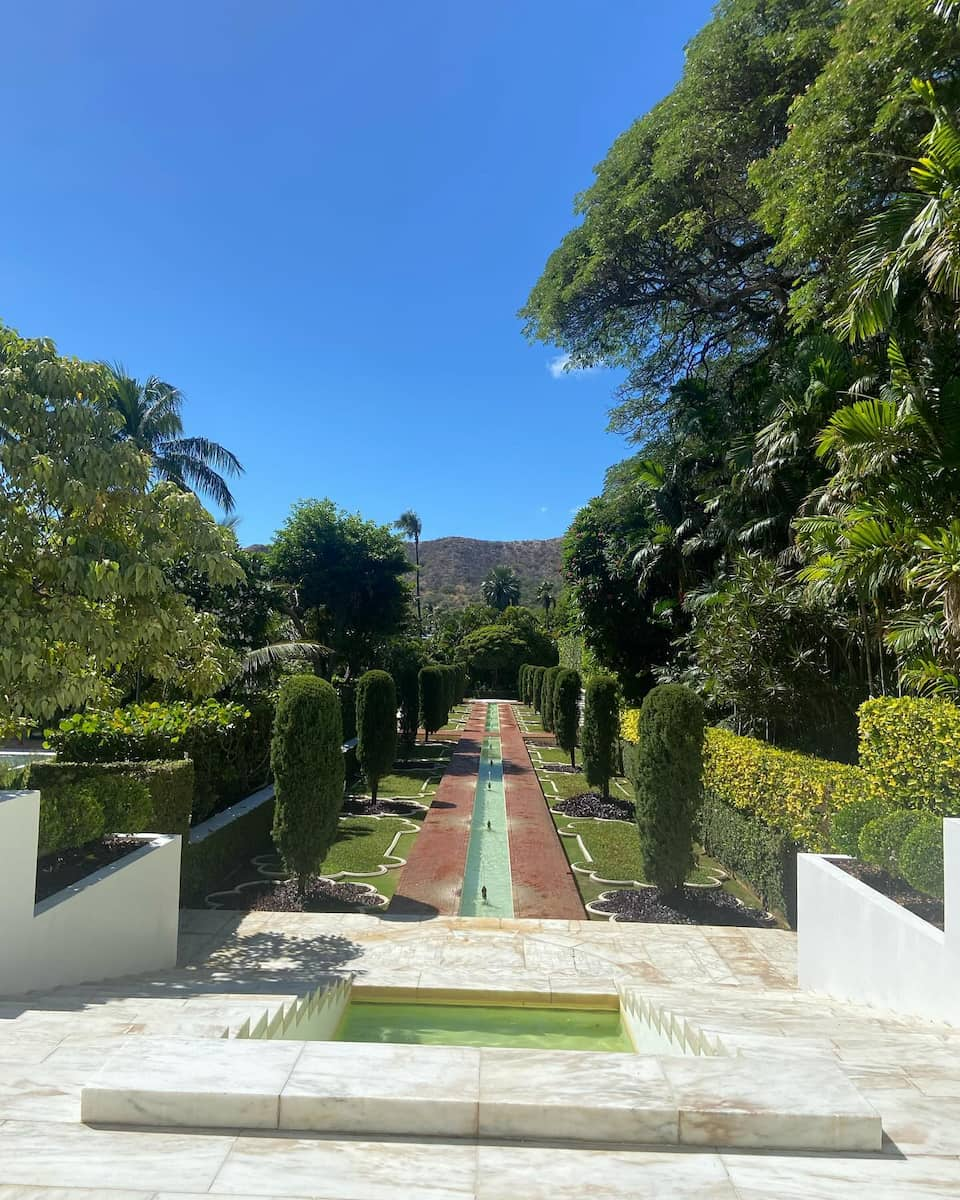
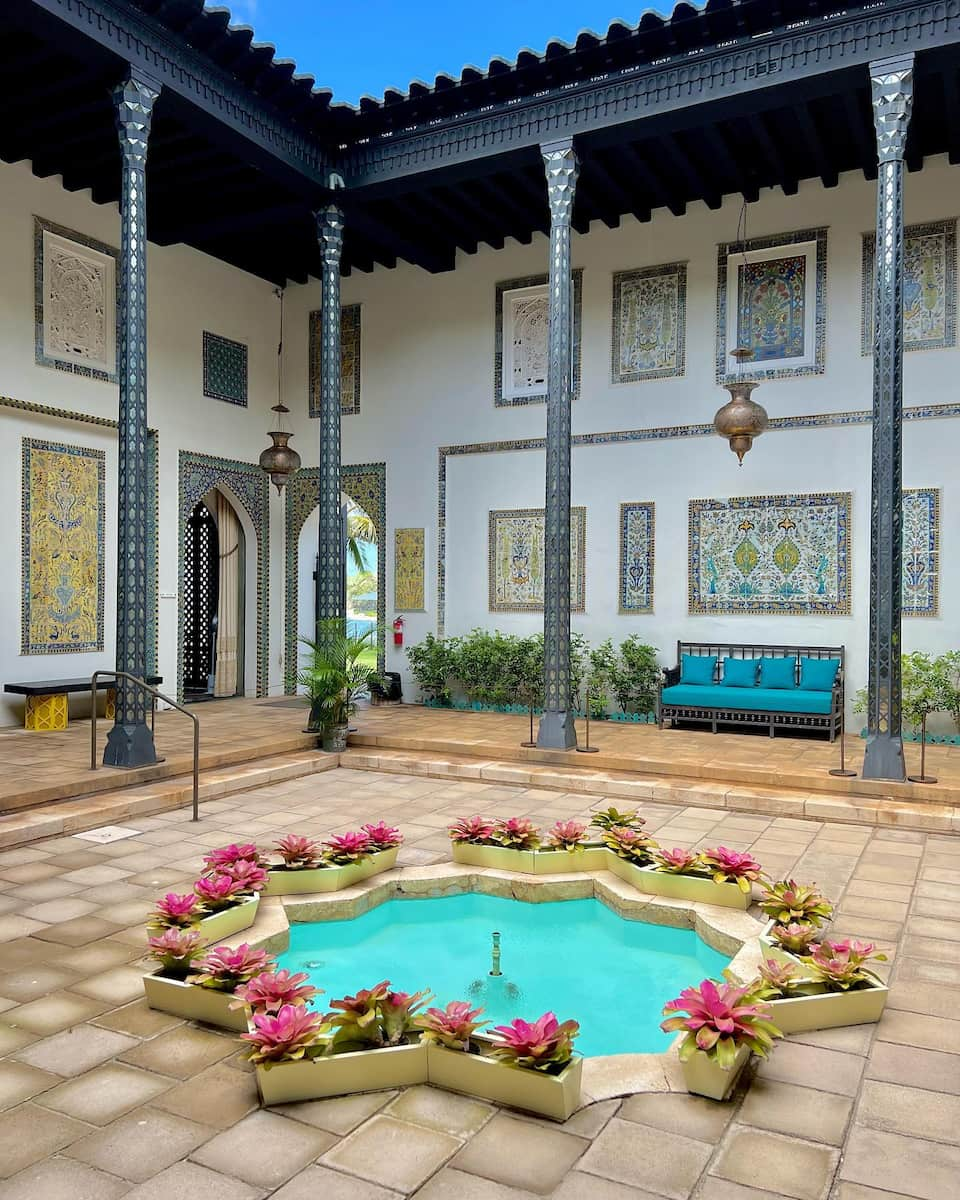
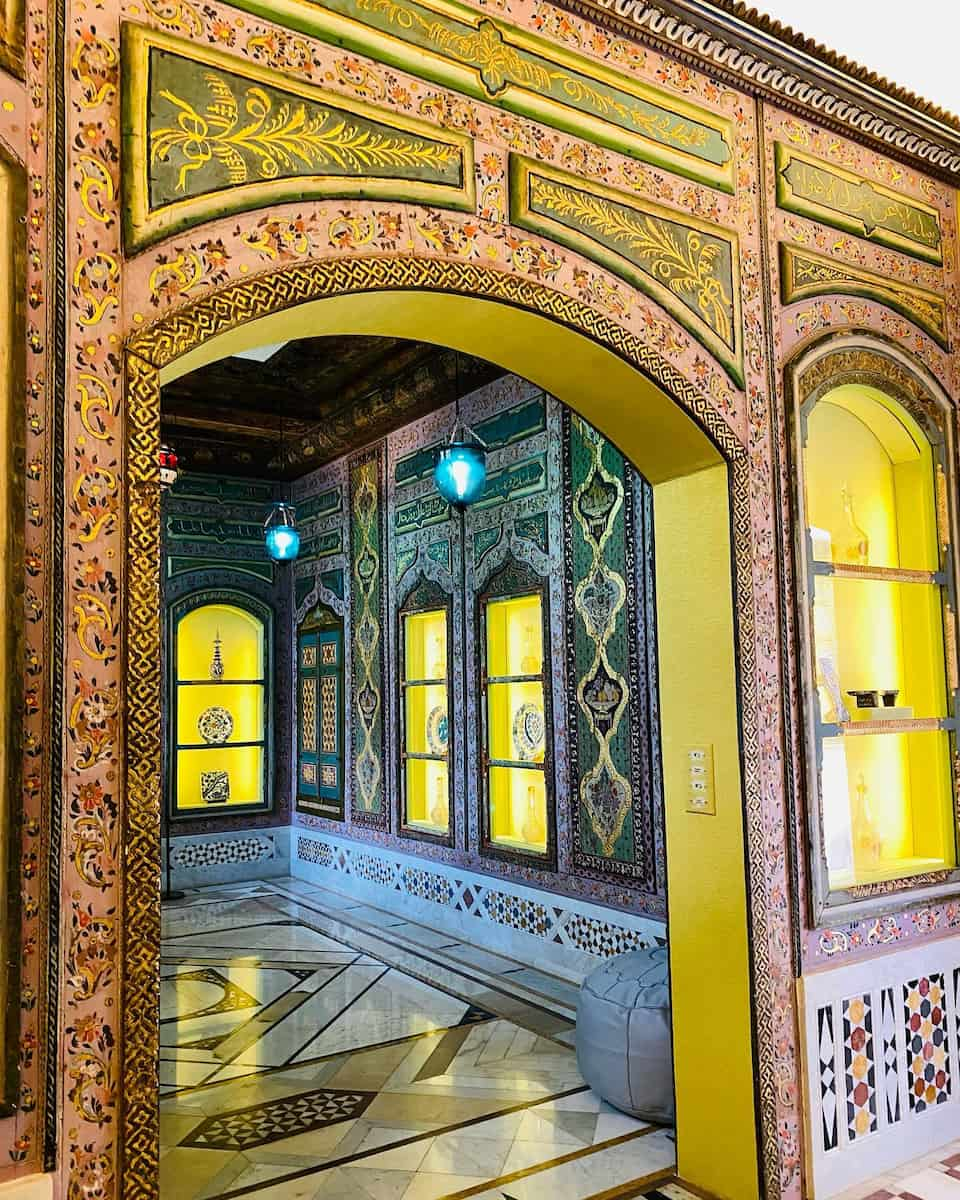
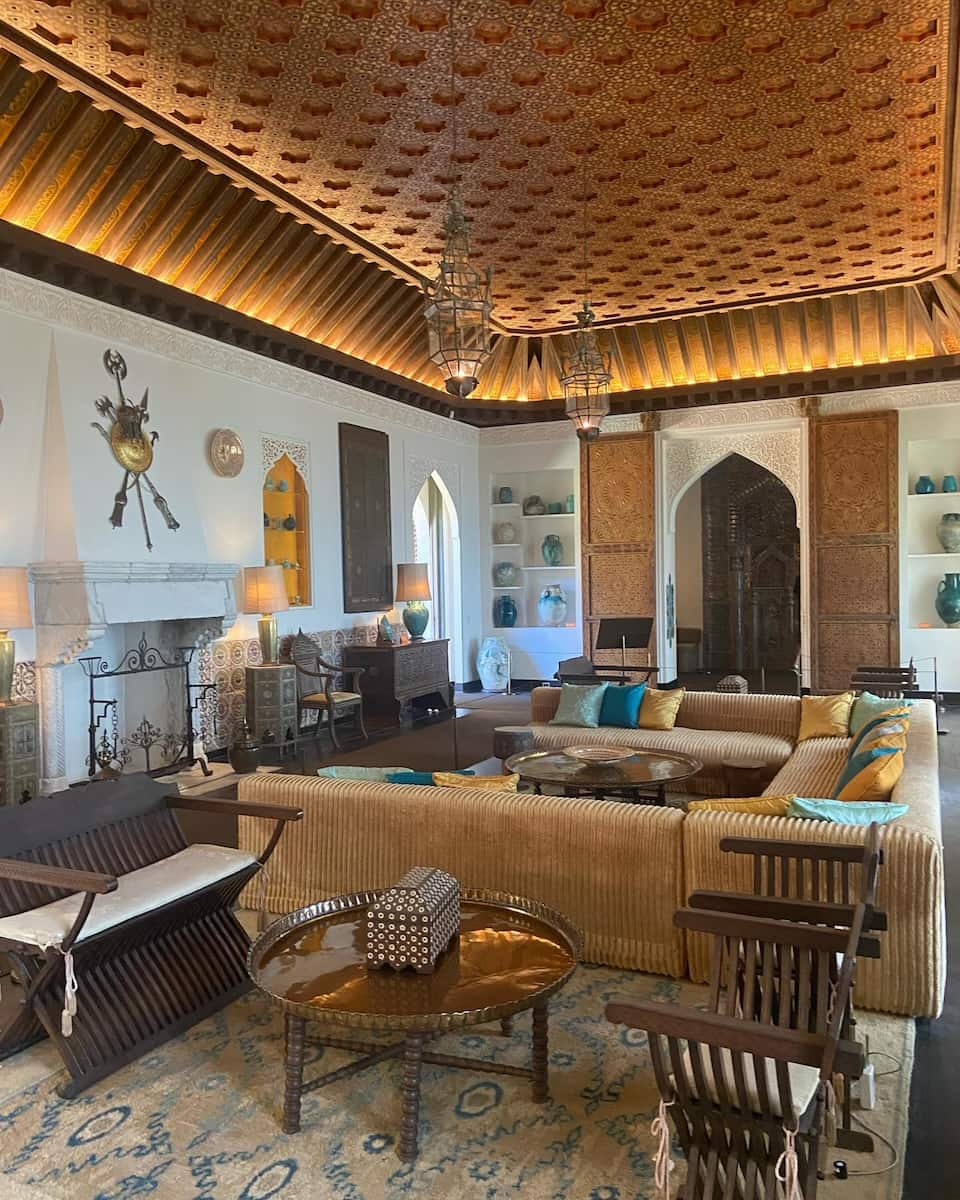
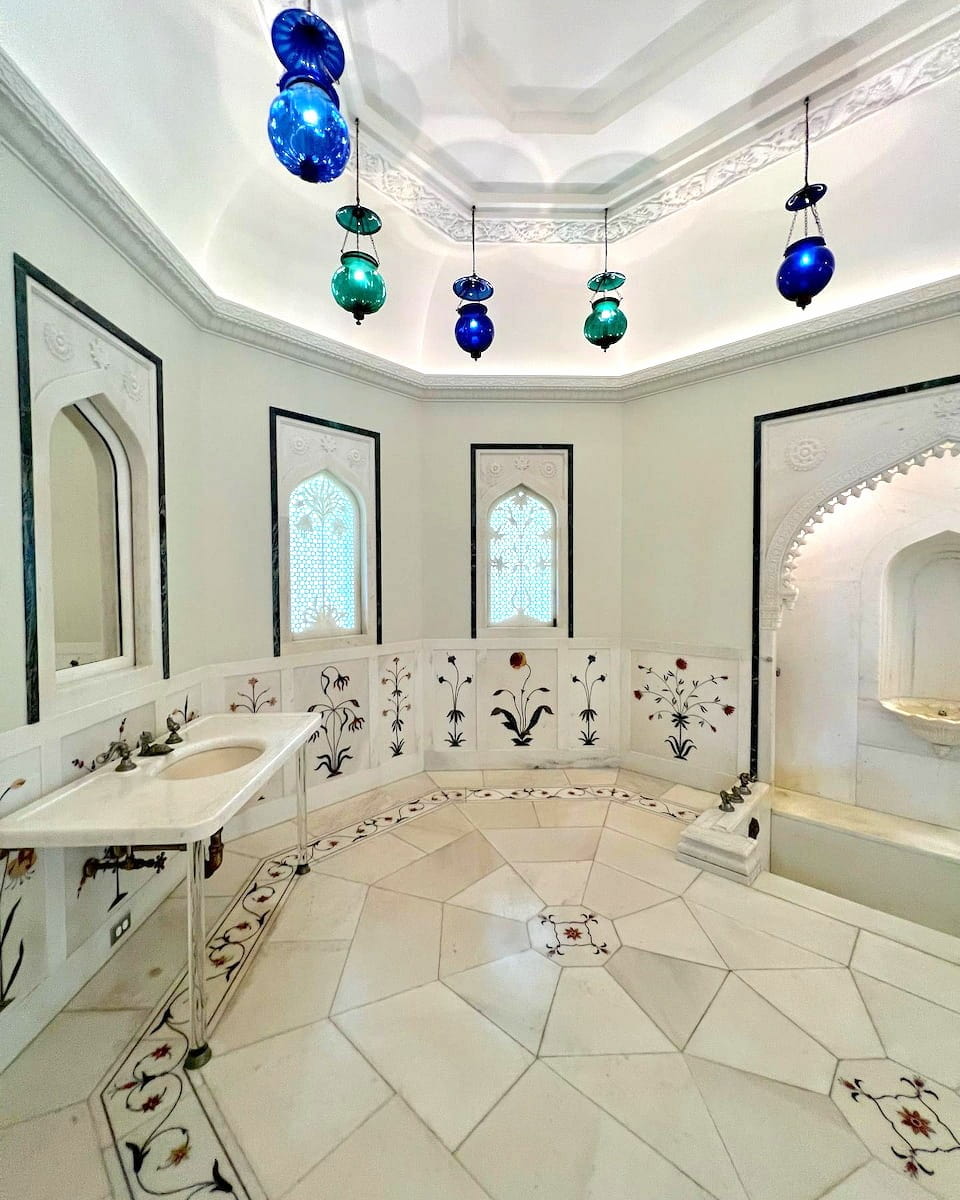
| Visitor Information | Price (USD) | Hours | Notes |
|---|---|---|---|
| Guided Tour | $25 adults | Wed-Sat, times vary | Reservation required |
| Art of the Qur’an Tour | $25 adults | First Saturday monthly | Specialized theme |
| Transportation | Included | Departs from Honolulu Museum of Art | 15-minute ride |
| Photography | Limited | No flash, personal use only | Some rooms restricted |
Architectural fusion. What makes Shangri La extraordinary is how seamlessly Duke integrated Islamic architectural elements with the Hawaiian setting. The central courtyard features a marble fountain surrounded by intricate mosaic tile work, yet opens to breathtaking ocean views. I was fascinated by the Damascus Room, a complete 18th-century Syrian interior with inlaid furniture and painted wood panels that was disassembled, shipped to Hawaii, and perfectly reconstructed. The Playhouse, originally built as Duke’s personal surfboard storage, now houses Turkish and Indian textiles in a space that blends Mughal design with art deco elements.
Exclusive experience. Shangri La can only be visited through guided tours departing from the Honolulu Museum of Art, with limited daily capacity that creates an intimate experience. Our knowledgeable guide shared stories of Duke’s travels throughout the Islamic world and her close relationships with artisans who created custom pieces for the estate. The tour concluded in the spectacular Persian-inspired garden overlooking the Pacific Ocean, where I could see why Duke chose this location as her Hawaiian home. The contrast between Islamic geometric patterns and the organic Hawaiian landscape creates a uniquely harmonious cultural fusion.
10. Makapu’u Point Lighthouse Trail
Coastal adventure. The Makapu’u Point Lighthouse Trail became my favorite easy hike on Oahu’s southeastern coast. This fully paved 2-mile round trip path climbs 500 feet through hot, dry terrain dotted with cacti and native plants. The historic red-roofed lighthouse, built in 1909, stands majestically at 46 feet tall with one of the world’s largest lenses.
| Trail Information | Details | Cost | Hours |
|---|---|---|---|
| Distance | 2 miles roundtrip | Free | 7:00-19:00 daily |
| Difficulty | Moderate | No parking fee | 1-2 hours duration |
| Elevation Gain | 500 feet | Water recommended | Sunrise to sunset |
| Trail Surface | Fully paved | Bring sunscreen | No restrooms on trail |
Wildlife watching. During winter months from November to May, this trail transforms into one of Oahu’s premier whale watching spots. I brought binoculars and was rewarded with spectacular views of migrating humpback whales breaching offshore. The trail also offers excellent bird watching opportunities, with Hawaiian seabirds like frigatebirds and tropicbirds nesting on the offshore islets. An interpretive sign and viewing scope help identify the marine life visible from this elevated vantage point.
Practical experience. The exposed trail offers zero shade, so I learned to start early with plenty of water, sunscreen, and a hat. The paved surface makes it accessible for families, though the steady uphill climb can be challenging in the heat. I discovered that weekday mornings provide the best experience with fewer crowds and cooler temperatures. The panoramic views of the windward coast and Kaiwi Channel make every step worthwhile, especially when combined with a stop at nearby Halona Blowhole.
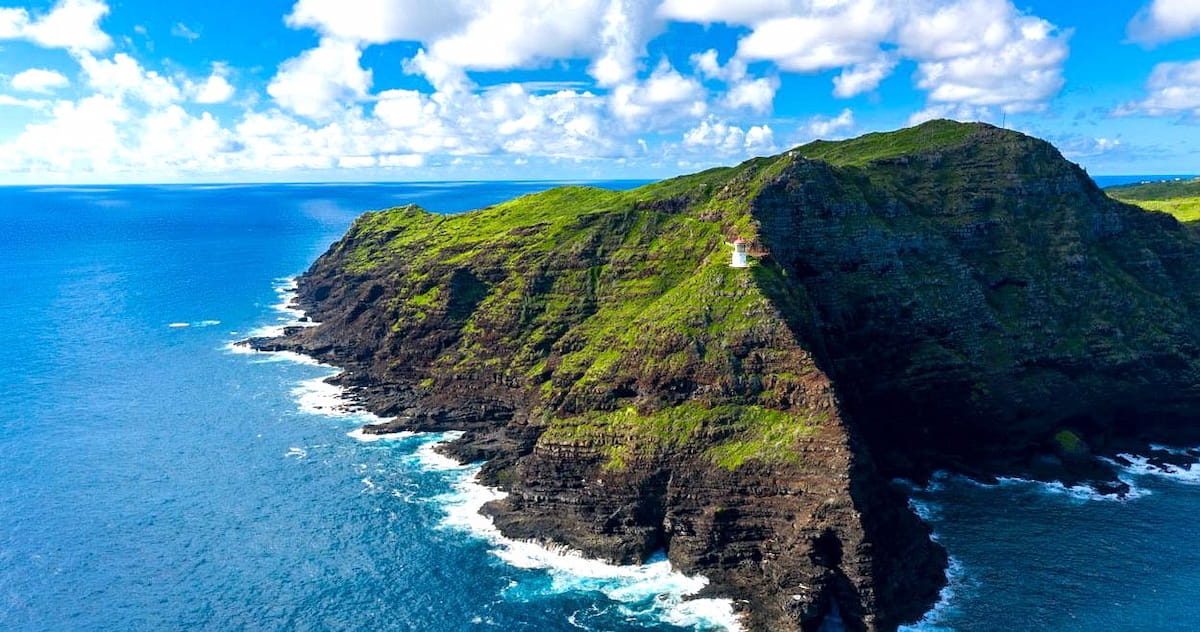
Photography paradise. The trail provides countless photo opportunities, from the iconic lighthouse against the deep blue Pacific to sweeping coastal vistas. I captured stunning shots of the rugged shoreline, offshore wildlife sanctuaries, and the contrast between volcanic landscape and turquoise waters. The multiple lookout points offer different perspectives, with the summit providing the most comprehensive views of Oahu’s southeastern coastline. The lighthouse itself, though off-limits to visitors, creates a perfect focal point for memorable vacation photos.
⭐ Best Activities
- Makapuu Lighthouse Self-Guided Hike – Enjoy breathtaking panoramic views of Oahu’s southeastern coastline on this scenic hike to the historic red and white Makapuu Lighthouse, offering spectacular photo opportunities and whale watching during winter months.
11. International Market Place
Shopping paradise. Walking through the International Market Place in the heart of Waikiki, I discovered a unique open-air shopping experience built around a magnificent 100-year-old banyan tree. This three-level retail destination houses over 90 stores ranging from luxury brands to local boutiques, all connected by flowing water features and tropical landscaping. The historic banyan tree serves as the centerpiece, with its massive canopy providing natural shade while I explored everything from Target to high-end jewelry stores. The blend of modern retail and natural beauty creates an atmosphere unlike any traditional mall I’ve visited.
| Shopping Categories | Notable Stores | Dining Options | Entertainment |
|---|---|---|---|
| Fashion & Accessories | Abercrombie & Fitch, Hollister, Pandora | Food court with multiple bars | Magic shows |
| Footwear & Sports | Foot Locker, Vans, Shoe Palace | Barbecue joint, burger restaurant | Live music events |
| Electronics & Travel | Tesla, Sunglass Hut, ABC Stores | Ice cream shop | Queen’s Court cultural events |
| Department Store | Target (anchor store) | Market with local products | Free lei-making workshops |
Cultural experiences. The Queen’s Court area regularly hosts free cultural activities that gave me insight into Hawaiian traditions. I participated in a lei-making workshop where local artisans taught me to string fresh plumeria flowers using traditional techniques. The space also features authentic luau performances and hula demonstrations that showcase island culture beyond the typical tourist shows. These events happen throughout the week, making each visit to the marketplace potentially different from the last.
Historic significance. Learning about the marketplace’s royal connections added depth to my shopping experience. The land once belonged to King Lunalilo, Hawaii’s first elected monarch, who later gifted it to Queen Emma. Today, all revenues from the International Market Place support The Queen’s Medical Center, continuing Queen Emma’s legacy of humanitarian service. The original marketplace opened in 1956 and underwent complete renovation before reopening in 2016, preserving its historic banyan tree while creating a modern retail environment.
12. Battleship Missouri Memorial
Historic vessel. Stepping aboard the USS Missouri at Pearl Harbor, I walked the same decks where World War II officially ended with Japan’s surrender ceremony on September 2, 1945. This massive Iowa-class battleship spans 887 feet in length and served through three wars before becoming a floating museum. The ship’s nine 16-inch guns, each weighing 116 tons, dominated my view as I explored the various decks and compartments. Standing on the Surrender Deck, I felt the weight of history knowing this exact spot marked the end of the world’s deadliest conflict.
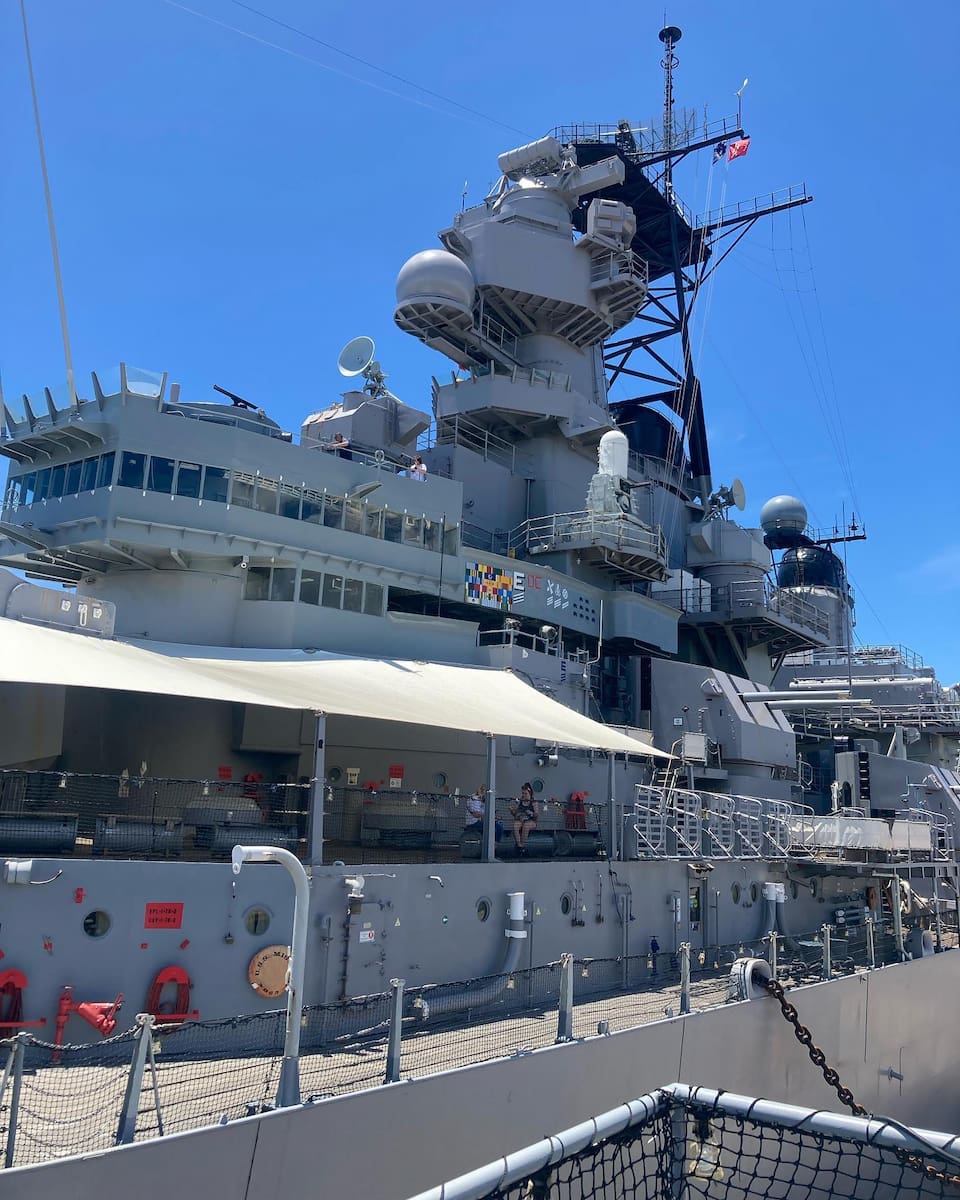
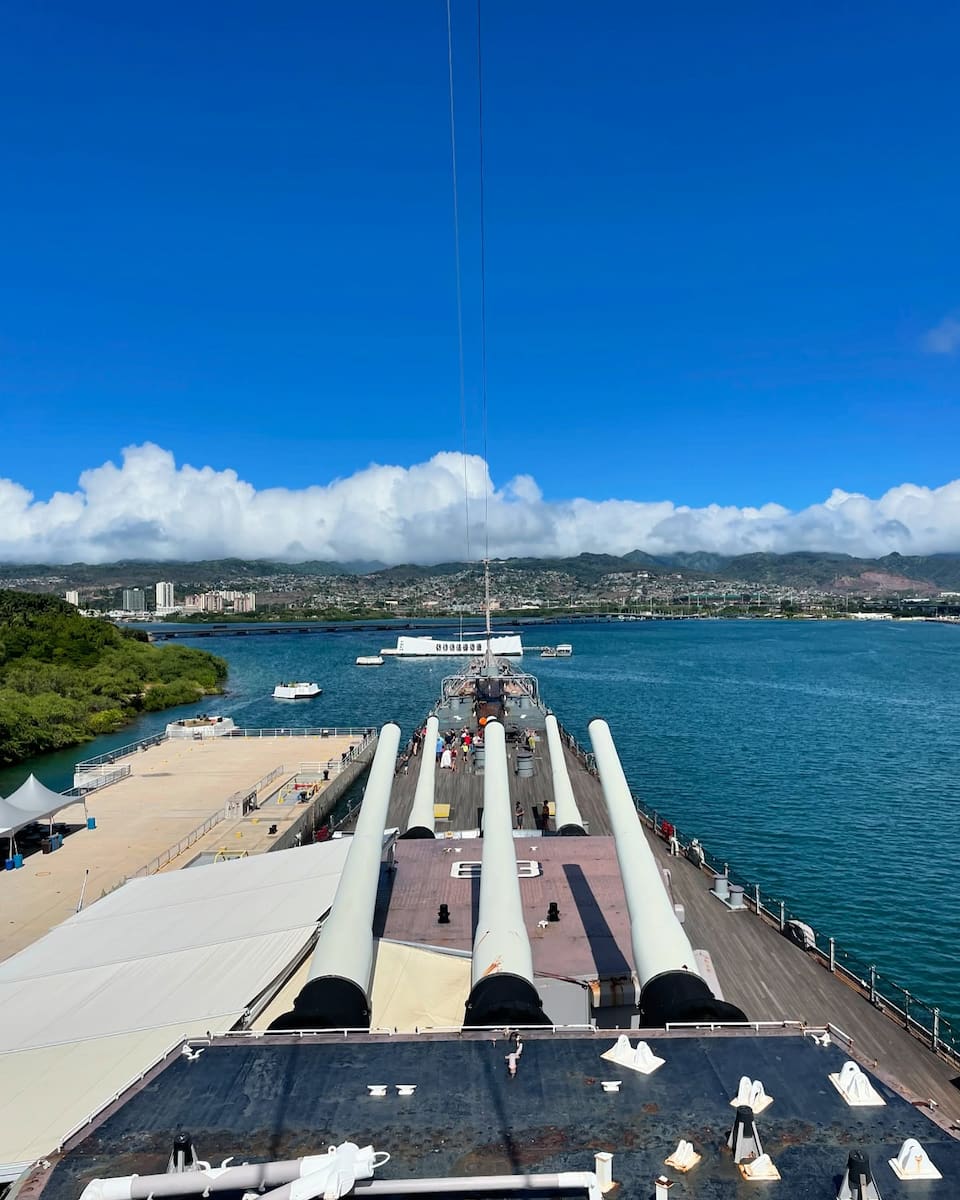

Tour highlights:
- Surrender Deck where WWII ended
- Kamikaze attack damage still visible on the ship’s side
- Captain’s cabin and bridge with original equipment
- 16-inch gun turrets and ammunition handling rooms
- Interactive exhibits about the ship’s 50-year service history
- USS Oklahoma Memorial honoring sailors lost at Pearl Harbor
Military legacy. The Missouri’s service record impressed me with its participation in the Battle of Okinawa, Korean War operations, and Operation Desert Storm in 1991. I learned that this was the last active battleship in the U.S. Navy, finally decommissioned after the Gulf War. The ship’s nickname “Mighty Mo” became clear as I explored its massive size and firepower capabilities. Audio tours provided by former crew members added personal stories that brought the ship’s history to life.
Visitor experience. The memorial operates as part of the Pearl Harbor Historic Sites, requiring advance reservations and security screening. I took the free shuttle bus from the Pearl Harbor Visitor Center to Ford Island, where the Missouri is permanently moored just a ship’s length from the USS Arizona Memorial. The contrast between these two vessels – one marking the beginning of America’s involvement in WWII and the other its end – creates a powerful historical narrative that spans the entire Pacific War.
⭐ Best Activities
- Pearl Harbor USS Arizona Memorial and USS Battleship Missouri from Waikiki – Discover the complete Pearl Harbor story with over 4 hours to explore both the Arizona Memorial and Battleship Missouri, including the historic Surrender Deck where World War II officially ended.
13. Ala Moana Regional Park
Local escape. This 100-acre coastal park became my favorite retreat from the tourist crowds of Waikiki. The half-mile stretch of golden sand beach, protected by an offshore reef, offers calm swimming conditions that attract an estimated 4 million visitors annually. I joined locals for morning exercise swims in the channel that runs parallel to the beach, perfectly designed for lap swimming. The extensive grassy areas shaded by banyan and palm trees provided ideal spots for picnics, reading, or simply watching the diverse community that calls this park home.
| Park Amenities | Hours | Activities | Safety Features |
|---|---|---|---|
| Beach access | 4:00 AM – 10:00 PM | Swimming, paddleboarding | Daily lifeguards |
| Tennis courts | Dawn to dusk | Free public courts | Emergency phones |
| Picnic areas | Same as park | BBQ grills available | Restrooms and showers |
| Walking paths | 24 hours | Jogging, cycling | Well-lit pathways |
Magic Island. The man-made peninsula known as Magic Island offers the park’s most family-friendly area with its protected lagoon perfect for children and beginner swimmers. I watched outrigger canoe teams practice their synchronized paddling techniques while families set up elaborate weekend celebrations under the shade trees. The lagoon’s calm waters and sandy bottom create an ideal environment for young swimmers, while the surrounding lawn areas host everything from yoga classes to cultural festivals throughout the year.
Community hub. What struck me most about this park was how it showcases authentic local life in Honolulu. Multi-generational families gather for weekend barbecues, fitness enthusiasts use the outdoor exercise equipment, and cultural groups practice traditional dances on the grass. The park closes overnight from 10:00 PM to 4:00 AM, which has helped address previous safety concerns and maintains its family-friendly atmosphere. Unlike tourist-focused beaches, this park offers genuine insight into how Honolulu residents enjoy their outdoor lifestyle.
14. Kapiʻolani Regional Park
Royal legacy. Exploring Kapiʻolani Park, I walked through Oahu’s oldest and largest public park, established in 1877 by King David Kalākaua and named after his wife, Queen Kapiʻolani. This 300-acre green space stretches from Waikiki Beach to the base of Diamond Head, creating a natural buffer between the bustling tourist district and the iconic volcanic crater. The park’s royal origins are evident in its grand design, with wide open lawns, stately banyan trees, and the famous Louise Dillingham Memorial fountain that has appeared in countless movies and TV shows including the original Hawaii Five-0.



Park features and activities:
- Tennis courts and soccer fields for recreational sports
- Archery range for target practice
- Walking and jogging paths throughout the grounds
- Picnic tables and BBQ grills for family gatherings
- Waikiki Shell outdoor concert venue
- Honolulu Zoo (separate admission required)
- Regular events including Royal Hawaiian Band concerts
Cultural significance. The park serves as more than just recreational space – it’s a cultural gathering place where I witnessed authentic Hawaiian traditions. Sunday concerts by the Royal Hawaiian Band continue a tradition dating back to the monarchy period, while the park regularly hosts festivals celebrating everything from Hawaiian music to international cultures. The Louise Dillingham Memorial fountain became a favorite photo spot, with Diamond Head providing a dramatic backdrop that explains why this location has been featured in so many films and television productions.
Natural beauty. Walking through the park’s diverse landscapes, I discovered peaceful groves of banyan trees with their distinctive aerial roots creating natural canopies. The park’s positioning between ocean and mountain provides cooling trade winds that make it comfortable even on warm days. Native and exotic plants throughout the grounds create a botanical garden atmosphere, while the open lawns offer space for everything from frisbee games to cultural performances. The park’s proximity to both Waikiki Beach and Diamond Head makes it an ideal starting or ending point for exploring these iconic Honolulu attractions.
Things to Do in Honolulu with Kids
1. Honolulu Zoo
Wildlife encounters. Walking through the Honolulu Zoo with my niece and nephew, I discovered one of the best things to do on Oahu for families. Located in the heart of Waikiki, this 42-acre tropical paradise houses over 900 animals from Hawaii and beyond. The kids squealed with delight watching the hippos submerge in their pool, while the giraffes stretched their long necks to munch leaves from overhead branches. You’ll find the zoo perfectly situated between Kapiolani Park and Waikiki Beach, making it easy to combine with beach time during your stay in Honolulu.
| Zoo Information | Price (USD) | Hours | Location |
|---|---|---|---|
| Adult Admission | $19 | 10:00-15:30 (last entry) | 151 Kapahulu Ave |
| Child Admission (3-12) | $11 | Closed Tuesdays | Between Waikiki & Diamond Head |
| Kama’aina/Military | $8-$13 | Open all holidays | Parking: $1.50/hour |
| Morning Safari Tour | $500 per group | By reservation | Includes giraffe feeding |
Hawaiian focus. The Honolulu Zoo stands out among attractions and activities for its emphasis on Hawaii’s indigenous species and conservation efforts. My favorite section was the Hawaiian native bird sanctuary, where I spotted the endangered nene (Hawaiian goose) and colorful ‘i’iwi honeycreepers. The kids were fascinated by the giant Komodo dragons in the reptile house, their faces pressed against the glass as these prehistoric-looking creatures slowly moved about. If you’re in Honolulu with animal-loving children, this capital of Hawaii gem offers a perfect blend of education and entertainment.
Family amenities. Beyond animal exhibits, the zoo offers plenty of kid-friendly features that make it one of the top attractions when visiting Honolulu with little ones. The Keiki Zoo area includes a large playground with animal sculptures where my nephew spent nearly an hour climbing on the hippo and giraffe structures. We cooled off with shave ice from the snack bar while watching a zookeeper presentation about Hawaiian monk seals. The zoo’s compact size means you can see everything in about 3 hours, making it manageable even with toddlers in tow.
⭐ Best Activities
- Private Full-Day Circle Island Guided Small Group Tour – Experience Oahu’s diverse landscapes on this comprehensive private tour.
2. Waikiki Aquarium
Marine wonders. Just a short walk from the shore of Oahu’s famous beaches, the Waikiki Aquarium offers an intimate glimpse into Hawaii’s underwater world. As one of the oldest public aquariums in the United States, it packs impressive biodiversity into a compact space. My kids were mesmerized by the glowing jellyfish tanks, their translucent bodies pulsing hypnotically in the darkened room. The Northwestern Hawaiian Islands exhibit showcases species found nowhere else on earth, making it a unique educational experience during your trip to Oahu.


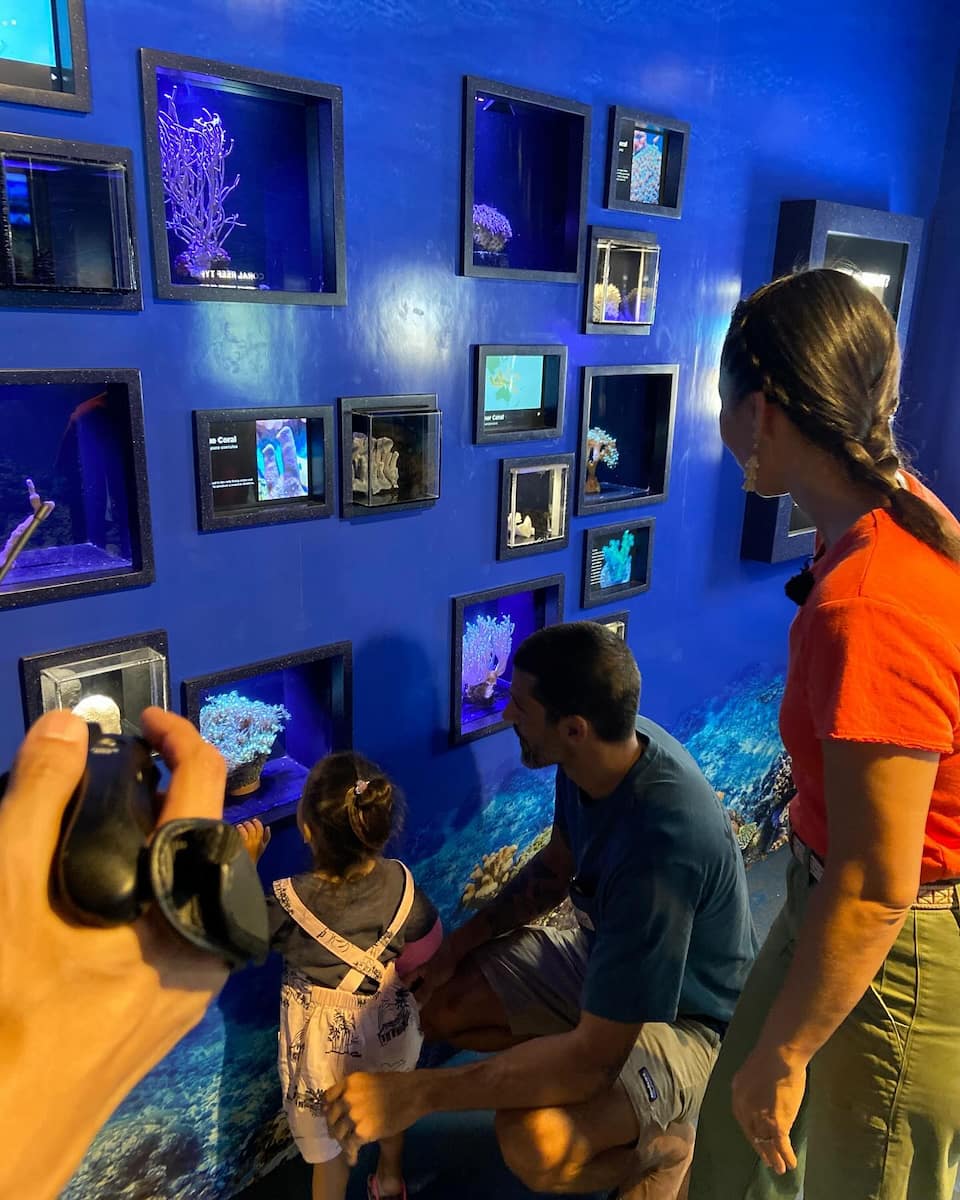

| Aquarium Details | Price (USD) | Hours | Special Features |
|---|---|---|---|
| Adult Admission | $12 | 9:00-16:30 daily | Hawaiian monk seal habitat |
| Child Admission (4-12) | $5 | Last entry at 16:00 | Edge of Reef touch pool |
| Kama’aina/Military | $5-$8 | Closed Christmas Day | Coral farm viewing window |
| Behind-the-Scenes Tour | $20 additional | Thursdays at 10:00 | Limited to 10 participants |
Conservation focus. What makes the Waikiki Aquarium special among Honolulu attractions is its dual role as both tourist destination and active research facility. I watched in awe as my daughter gently touched a sea star in the supervised Edge of Reef exhibit, her face lighting up with each new discovery. The aquarium’s coral propagation program, visible through special viewing windows, shows how scientists are working to restore Hawaii’s threatened reefs. Despite being much smaller than mainland aquariums, it’s packed with meaningful exhibits that showcase Hawaii’s marine conservation efforts.
Educational opportunities. If you find yourself in Honolulu during school breaks, check the aquarium’s calendar for special kids’ programs. We lucked into a “Keiki Time” session where my children learned about monk seal conservation through games and crafts. The staff’s passion for marine education was evident as they patiently answered my son’s endless questions about shark teeth. Located at the quieter end of Waikiki, the aquarium makes a perfect morning activity before heading to nearby Sans Souci Beach for afternoon swimming and snorkeling with the very fish species you just learned about.
⭐ Best Activities
- Honolulu: Diamond Head Segway Tour – Glide effortlessly around Diamond Head crater on a fun Segway adventure, enjoying unique perspectives of this iconic volcanic landmark while learning about its geological history and cultural significance.
3. Manoa Falls Hike
Jungle adventure. Hiking the Manoa Falls Trail with my kids felt like stepping into a movie set – and for good reason, as parts of Jurassic Park were filmed in this lush valley north of downtown Honolulu. The well-maintained 1.6-mile round-trip path winds through bamboo groves and beneath massive banyan trees draped with vines. My seven-year-old daughter kept her eyes peeled for dinosaurs around every bend, while my son collected fallen leaves bigger than his head. It’s a great introduction to hiking on Oahu that’s manageable even for young children.

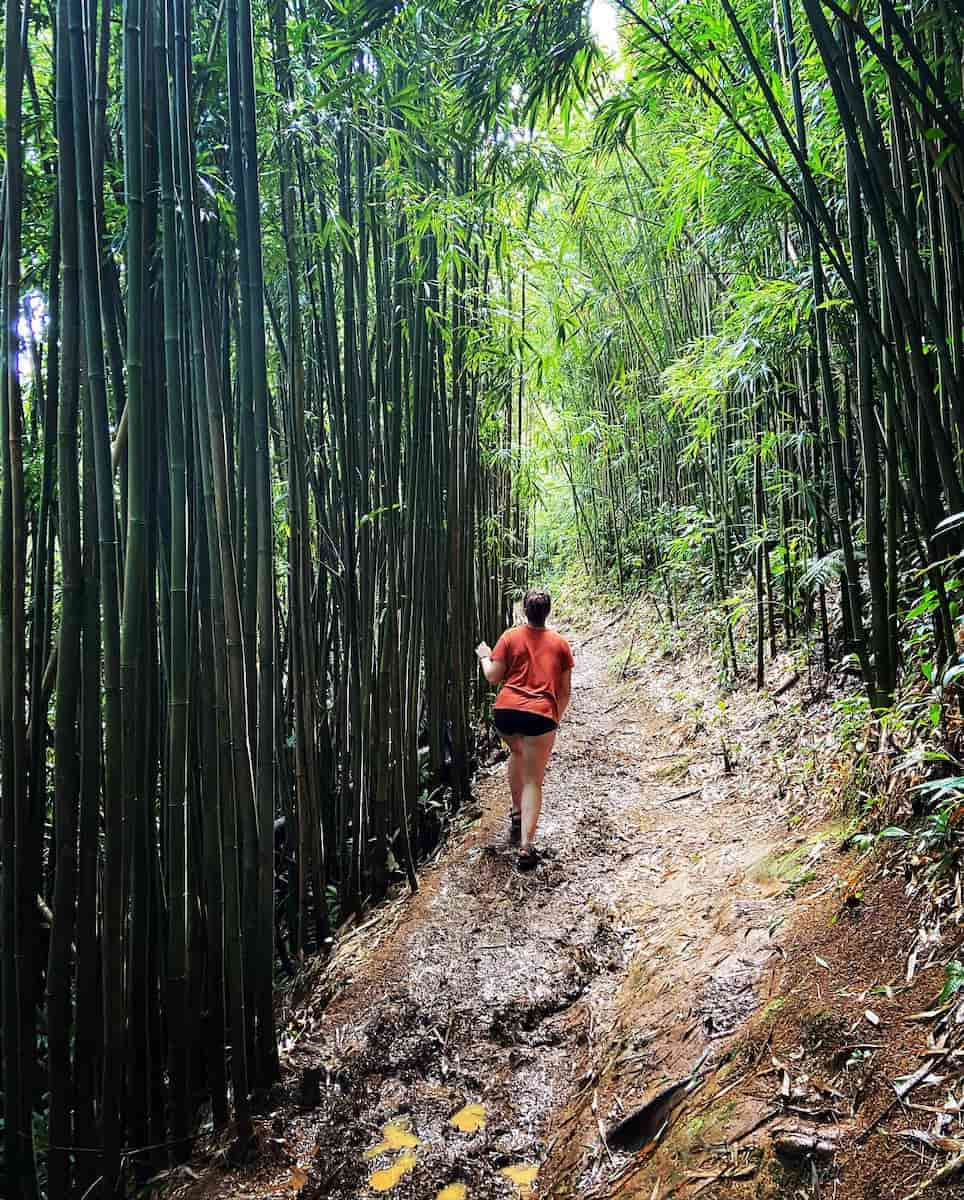
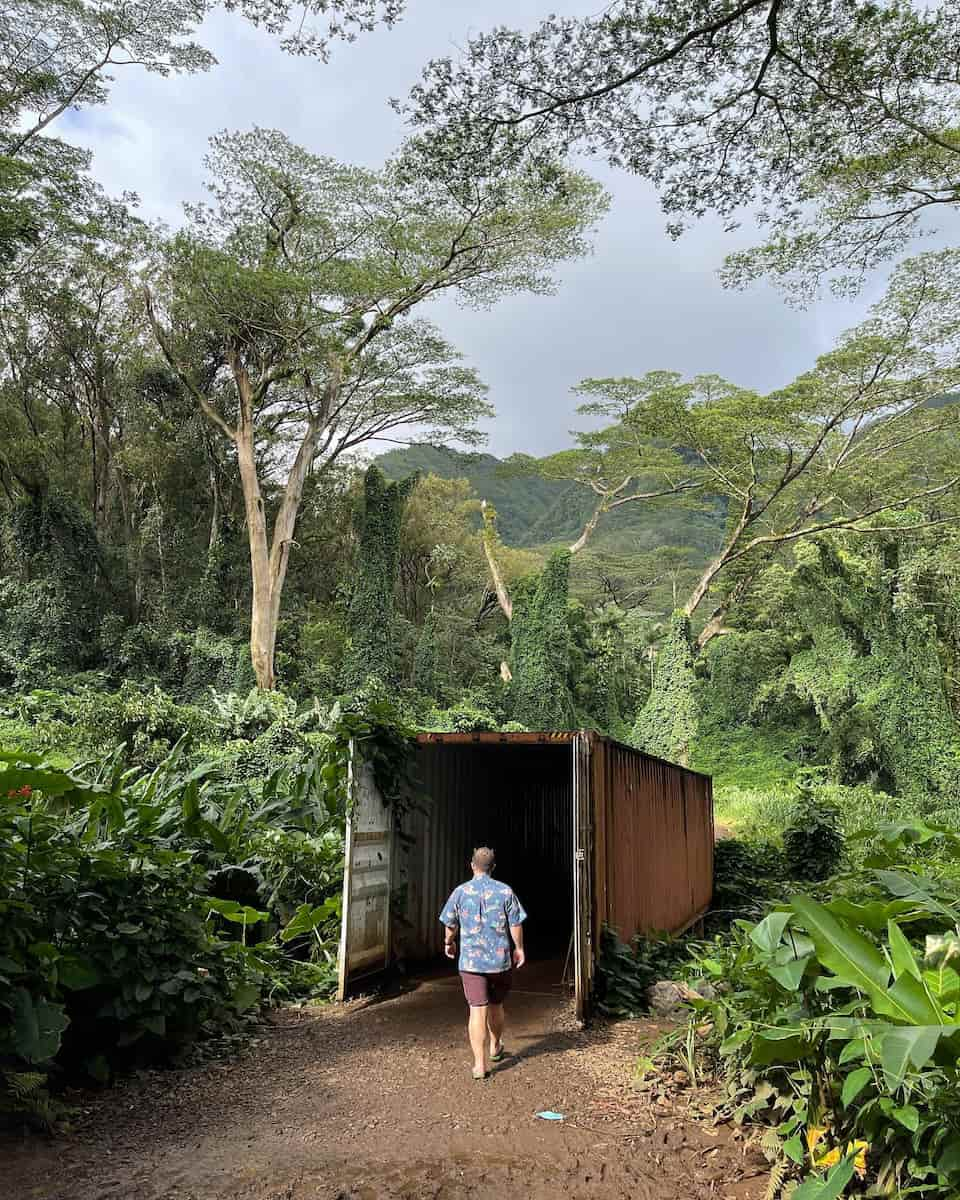
| Trail Information | Cost | Duration | What to Bring |
|---|---|---|---|
| Parking | $7 per vehicle | 1.5-2 hours round trip | Mosquito repellent |
| Trail access | Free | Open 6:00-18:00 daily | Closed-toe shoes |
| Guided tours | $45-70 per person | Various times | Water bottle |
| Rainbow Shuttle | $3 one-way from Waikiki | 20-minute ride | Rain jacket |
Natural wonders. The payoff at the end of this family-friendly hike is a 150-foot waterfall cascading down a vertical cliff face into a small pool. After recent rainfall, the falls thunder impressively, sending mist across the viewing area. My kids were enchanted by the rainbow that appeared in the spray when the sun broke through the forest canopy. The trail itself offers sweeping views of Honolulu in the distance, with the vibrant greens of the rainforest creating a stark contrast to the blue Pacific beyond.
Practical considerations. This trail gets muddy after rain, so I recommend wearing shoes with good traction rather than flip-flops. We applied mosquito repellent before starting, which saved us from the bites that other hikers complained about. The path includes some stairs and moderate inclines but remains manageable for most children over five. After our hike, we stopped at nearby Waioli Kitchen for refreshing acai bowls – the perfect reward after a morning of exploring one of the best family-friendly hikes on Oahu.
⭐ Best Activities
- eBike Manoa Falls Ride and Hike Adventure – Combine the thrill of electric biking with a scenic hike to the stunning 150-foot Manoa Falls, exploring lush rainforest trails and enjoying the natural beauty of Oahu’s interior valleys.
4. Magic Island Playground
Beach paradise. Known officially as Aina Moana, Magic Island isn’t actually an island but a man-made peninsula extending from Ala Moana Beach Park. This spot on Oahu offers families the perfect combination of protected swimming, picnic areas, and playground fun. My kids spent hours alternating between building sandcastles on the calm beach and racing around the modern playground equipment. With Diamond Head and Waikiki visible in the distance, it provides some of the best views of Honolulu while offering a less crowded alternative to Waikiki Beach.
| Magic Island Details | Cost | Hours | Amenities |
|---|---|---|---|
| Entry | Free and open to public | Sunrise to sunset | Modern playground |
| Parking | Free (limited spaces) | Fills early on weekends | Picnic tables |
| Beach access | Free | Lifeguards 9:00-17:30 | Restrooms/showers |
| Special events | Varies | Fourth of July fireworks | Jogging path |
Family activities. The playground at Magic Island became our go-to spot when the kids needed a break from beach time during our stay in Waikiki. The equipment includes climbing structures, swings, and slides suitable for various ages. We joined local families flying kites in the grassy areas, the colorful diamonds soaring against the blue Hawaiian sky. The protected lagoon offers calm waters perfect for young swimmers, while the outer edge of Oahu’s reef breaks the larger waves, creating a safe environment even for toddlers.
Local experience. Visiting Magic Island gave us a glimpse of how families living on Oahu spend their weekends. We brought a picnic lunch and claimed a shady spot under a banyan tree, watching as local families set up elaborate birthday parties complete with pop-up tents and barbecues. The atmosphere feels worlds away from the tourist hustle of downtown Waikiki, though it’s just a short drive or pleasant walk along the coast of the island. On Saturday mornings, you’ll find yoga classes and outrigger canoe clubs practicing offshore.
⭐ Best Activities
- Waikiki Gondola Experience – Enjoy a romantic and unique perspective of Waikiki from the water aboard a traditional gondola, complete with serenading gondolier and breathtaking views of Diamond Head and the Honolulu skyline.
5. Children’s Discovery Center
Interactive learning. The Hawaii Children’s Discovery Center stands out among Honolulu attractions as a place designed specifically for hands-on childhood exploration. Located near Kakaako Waterfront Park, this colorful facility houses multiple themed galleries that kept my kids engaged for hours. My son became a “doctor” in the Fantastic You exhibit, examining X-rays and learning about human anatomy through play. My daughter created rainbow-inspired art projects in the Your Rainbow World section, proudly displaying her creation as we left.
| Discovery Center | Price (USD) | Hours | Exhibits |
|---|---|---|---|
| Adult/Child | $12 per person | Tue-Fri: 9:00-13:00 | Fantastic You (body science) |
| Under 1 year | Free | Sat-Sun: 10:00-15:00 | Your Rainbow World (art) |
| Kama’aina discount | $10 per person | Closed Mondays | Rainforest Adventures |
| Group rates | $8 per person (10+) | Closed major holidays | Hawaiian culture gallery |
Educational play. What makes this side of the island gem special is how seamlessly it blends education with entertainment. In the Hawaiian culture gallery, my children learned about local traditions through interactive displays that let them “fish” in a digital ocean and identify native plants. The center’s small size means parents can easily keep track of multiple children while they explore different areas. Each exhibit is thoughtfully designed to engage multiple senses and learning styles, making it one of the best places for families staying in Honolulu during rainy days.
Cultural connections. Beyond the typical children’s museum offerings, this center incorporates elements of Hawaiian heritage throughout its exhibits. We participated in a scheduled storytelling session featuring Hawaiian legends, complete with puppets and audience participation. The Rainforest Adventures area introduces kids to Hawaii’s unique ecosystem through climbing structures designed like native plants and interactive displays about conservation. After spending the morning here, my children had a deeper appreciation for the natural and cultural treasures we encountered throughout our vacation to Hawaii.
Free Things to Do in Honolulu
1. Waikiki Beach
Iconic shoreline. Walking barefoot along Waikiki Beach, I felt the fine sand squeak beneath my toes as turquoise waves lapped gently at the shore. This world-famous stretch of coastline offers spectacular views of Diamond Head crater on one side and the high-rise hotels of downtown Waikiki on the other. Despite being one of the busiest spots on Oahu, I easily found a quiet patch of sand to spread my towel early in the morning. The beach is divided into several sections, each with its own character and wave conditions.
| Beach Section | Best For | Facilities | Notable Features |
|---|---|---|---|
| Kuhio Beach | Families | Restrooms, showers, lifeguards | Protected swimming area |
| Queen’s Surf | Beginner surfing | Restrooms, showers | Gentle waves, surf rentals nearby |
| San Souci Beach | Snorkeling | Limited facilities | Calm water, reef fish |
| Duke Kahanamoku Beach | Swimming | Restrooms, showers | Widest section of beach |
Cultural experiences. One of my favorite free things to do in Honolulu happens right on Kuhio Beach – the authentic hula shows performed three evenings a week. I watched in awe as dancers in traditional costumes told stories through graceful movements while the sun set behind them. The show takes place near the Duke Kahanamoku statue, where visitors often drape fresh flower leis as a sign of respect. These performances offer a genuine taste of Hawaiian culture without spending a single dollar.
Water activities. You’ll find Waikiki Beach offers plenty of free entertainment beyond sunbathing. I spent hours watching skilled surfers ride waves at the beach’s eastern end, while outrigger canoe teams practiced their synchronized paddling offshore. The beach’s protected swimming areas make it perfect for cooling off during hot afternoons. For the best experience, I recommend visiting during weekday mornings when the crowds are thinner and the water clearer – I spotted colorful fish swimming around my ankles in the shallow water.
2. Diamond Head Hike
Volcanic adventure. Hiking Diamond Head crater ranks among the most rewarding free activities during my visit to Honolulu. While non-residents pay a $5 entrance fee and $10 for parking, exploring the outer park area and enjoying sweeping views of Waikiki costs nothing. The trail winds up the side of this extinct volcanic crater, offering increasingly spectacular vistas with each step. I passed through a tunnel carved into the mountainside and climbed several staircases before reaching the summit.
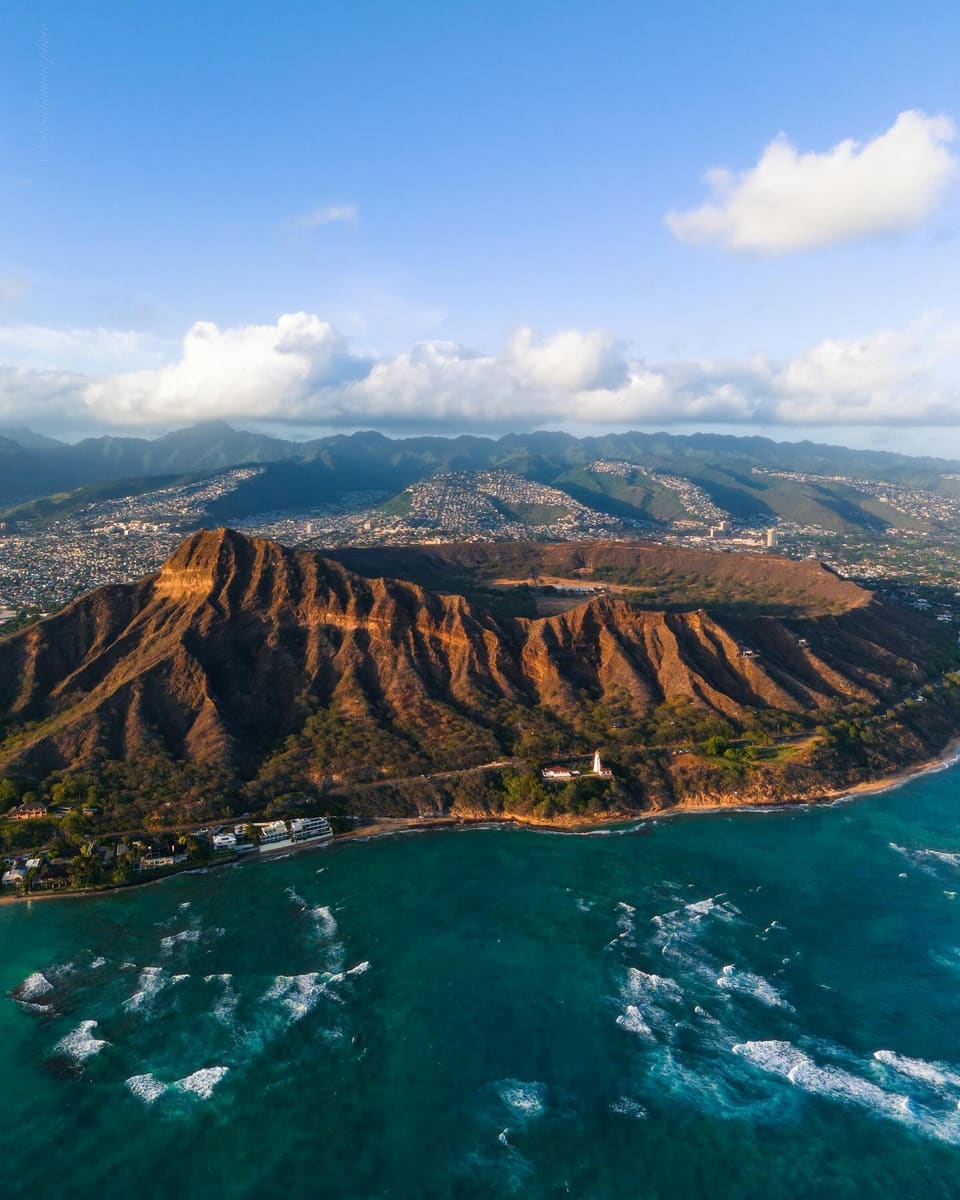
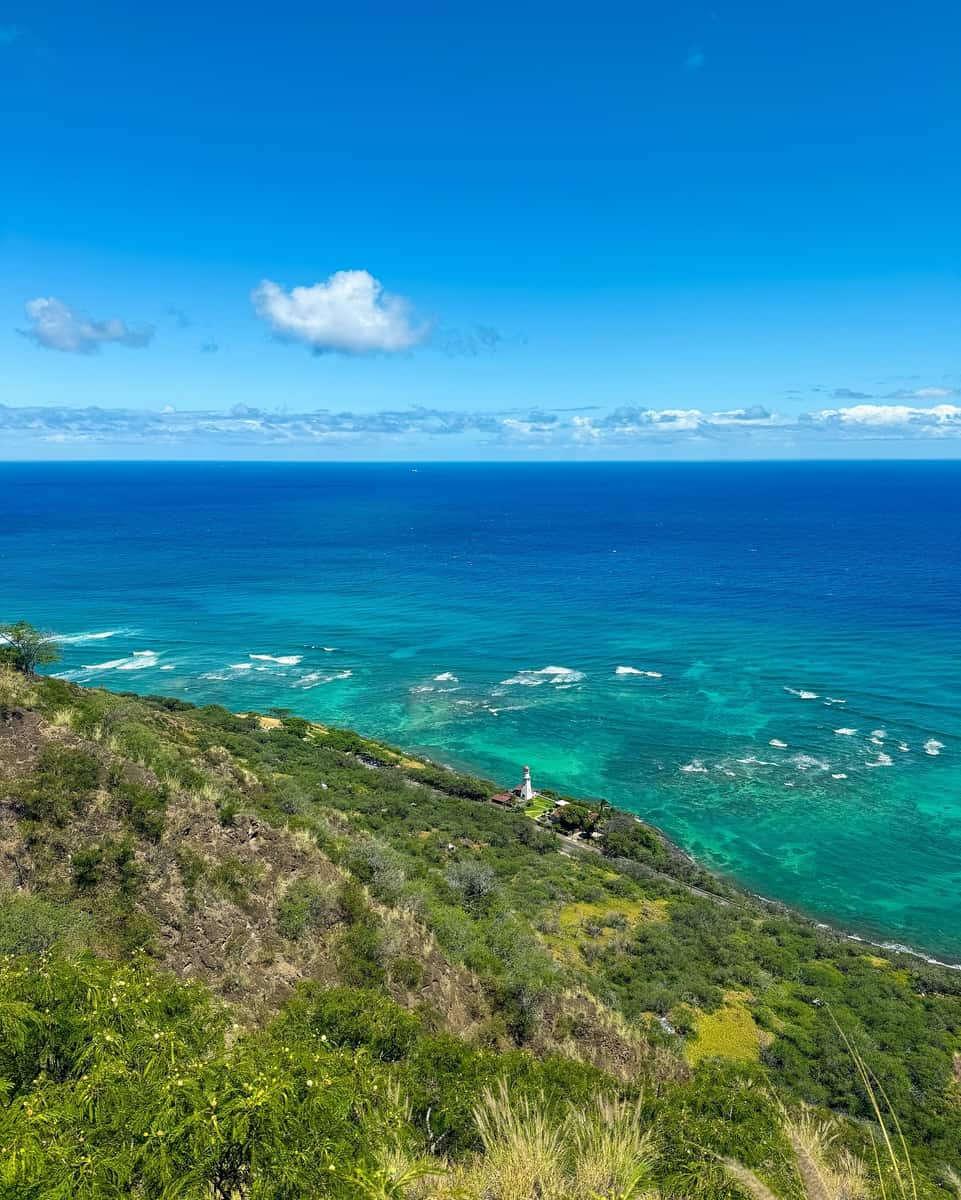
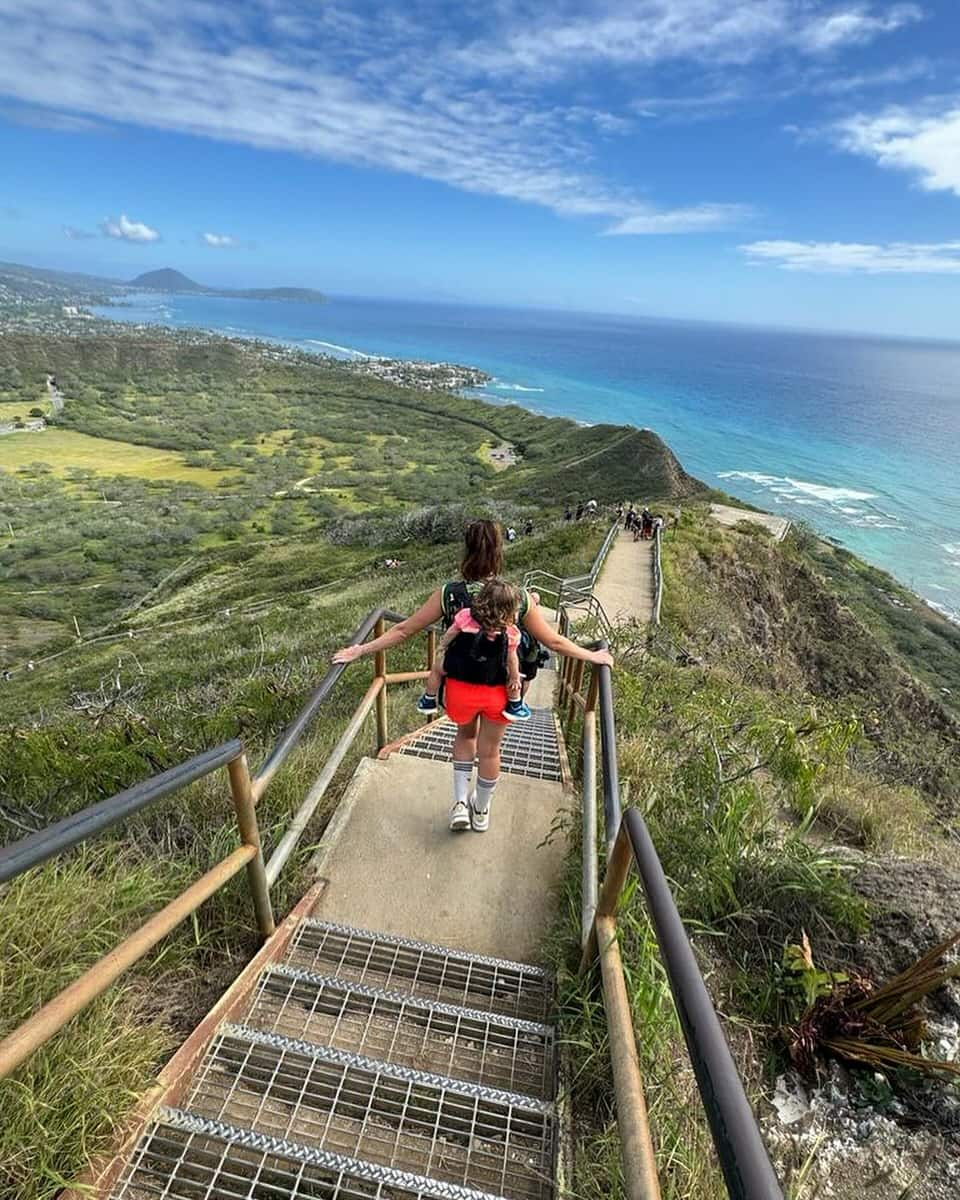
| Diamond Head Information | Cost | Hours | Details |
|---|---|---|---|
| Hawaii Resident Entry | Free with ID | Daily 6:00-18:00 | No reservation needed |
| Non-resident Entry | $5 per person | Last entry at 16:00 | Reservation required |
| Parking | $10 per vehicle | Fills by mid-morning | Credit card only |
| Water | $2-3 per bottle | Available at entrance | Bring your own to save |
Panoramic rewards. The moment I reached the top of Diamond Head, I understood why it’s considered one of the best hikes on Oahu. The 360-degree views encompass the entire Honolulu skyline, Waikiki Beach stretching along the coast, and the deep blue Pacific extending to the horizon. Though the hike is only 1.6 miles round trip, the elevation gain makes it moderately challenging. I spotted whales breaching offshore during winter months, their distant splashes visible from this perfect vantage point.
Visitor tips. If you’re staying in Waikiki, consider taking the #23 bus to save on parking fees and avoid reservation requirements. I learned from locals that early morning offers the coolest hiking temperatures and smallest crowds. The path can be dusty and exposed, so I wore a hat and sturdy shoes rather than flip-flops. Even though the hike is short, I brought a water bottle and snack to enjoy at the summit while soaking in those million-dollar views of Honolulu and Waikiki.
3. Kapiolani Park
Urban oasis. Kapiolani Park stretches across 300 acres between Waikiki Beach and Diamond Head, offering a refreshing green escape from the busy tourist areas. I spent a peaceful afternoon wandering beneath massive banyan trees with aerial roots hanging like natural curtains around their trunks. Local families gathered for weekend picnics while fitness enthusiasts jogged along the park’s perimeter path. The park serves as Honolulu’s oldest and largest public park, free and open to everyone.
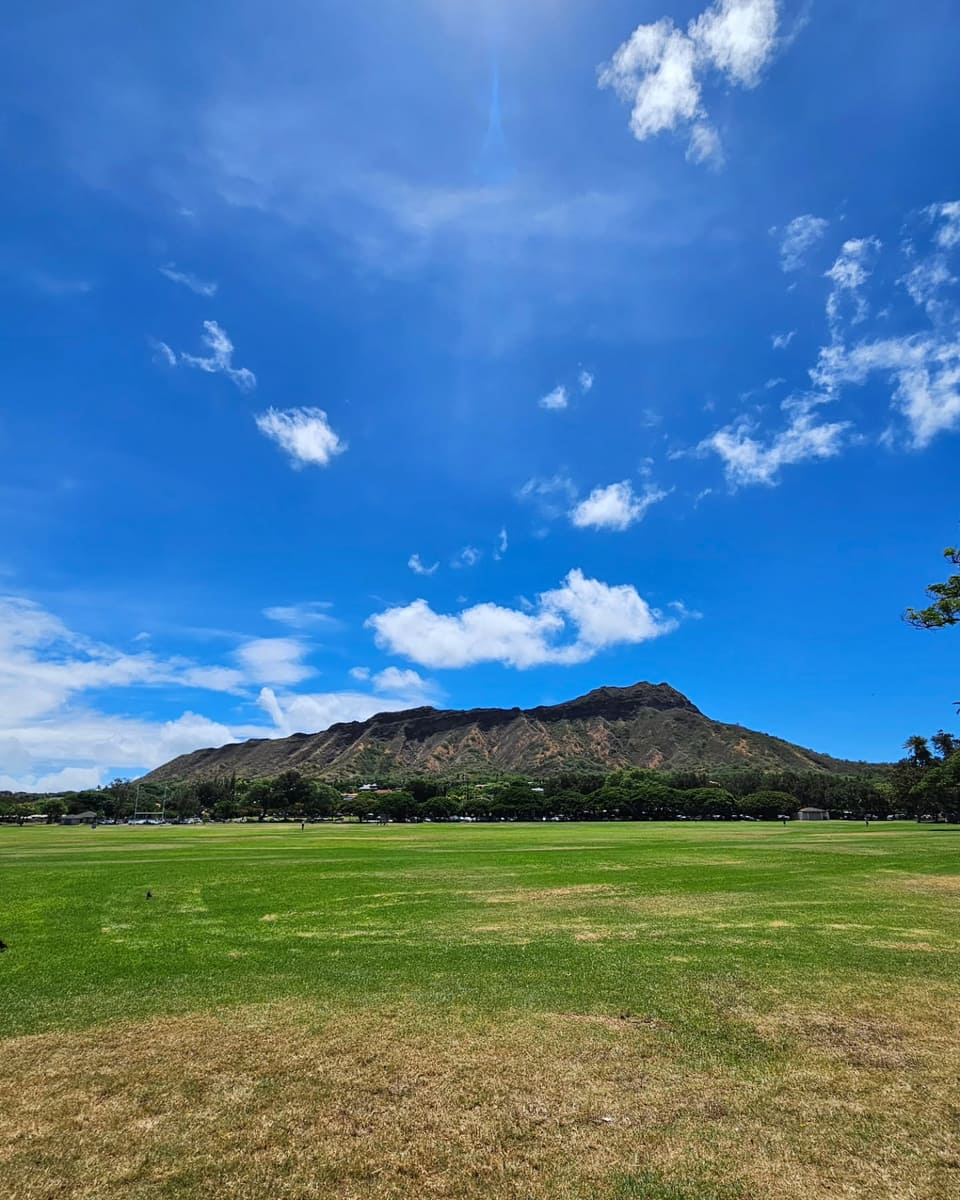
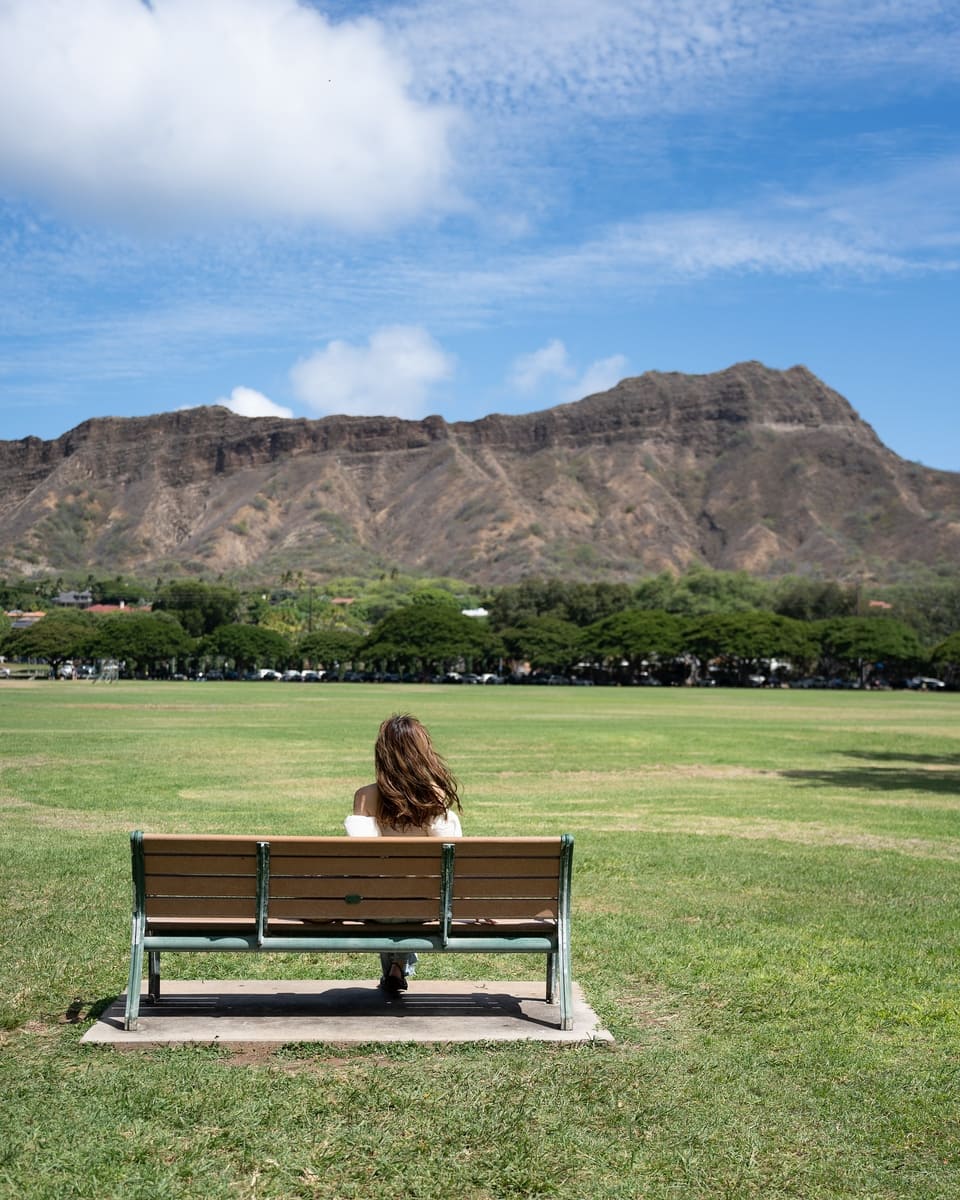
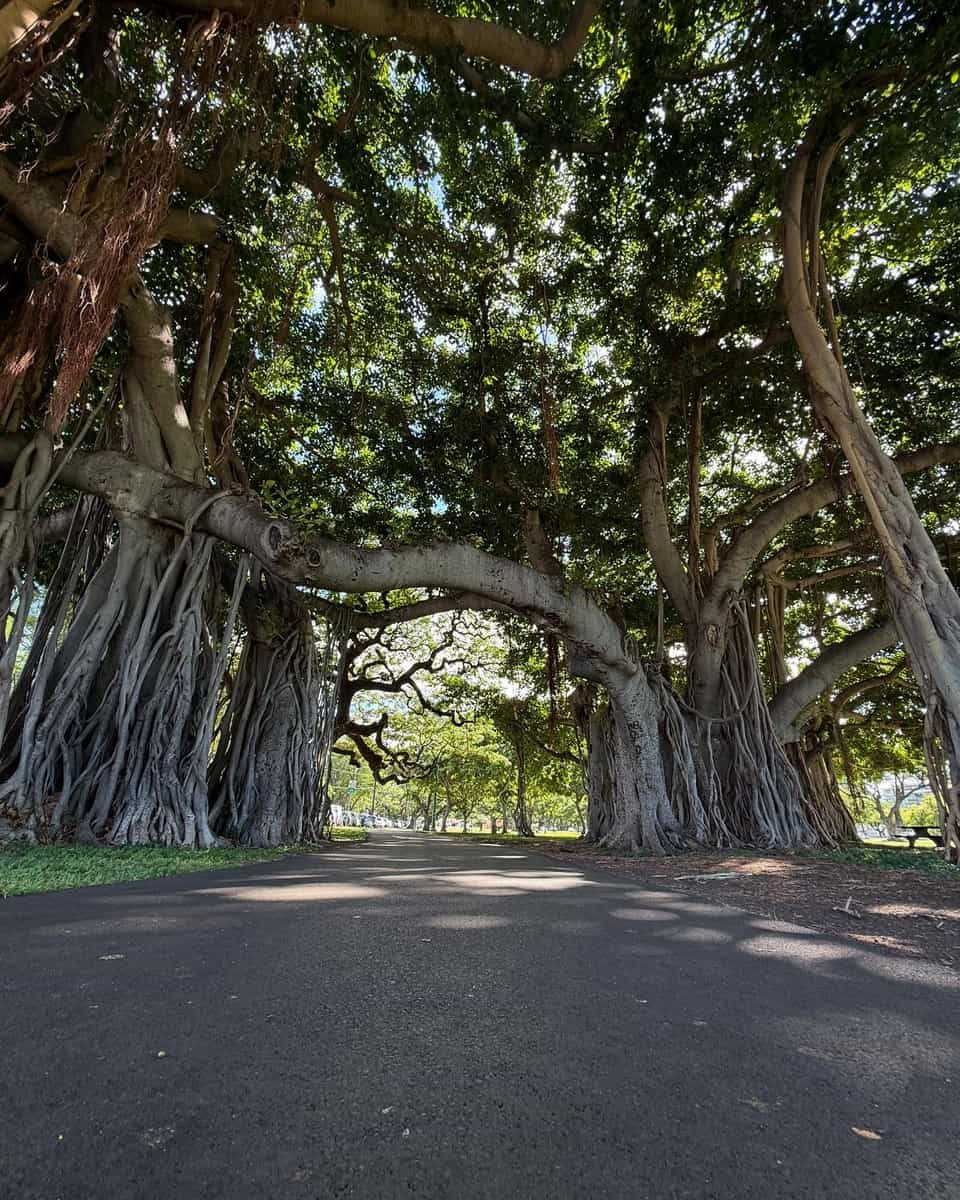
| Park Features | Hours | Location | Activities |
|---|---|---|---|
| Open Lawns | 24 hours daily | Between Waikiki & Diamond Head | Picnics, yoga, sports |
| Tennis Courts | 6:00-22:00 | Eastern section | Free public courts |
| Bandstand | Event dependent | Center of park | Concerts, cultural events |
| Honolulu Zoo | 10:00-15:30 (paid) | Western edge of park | Adjacent to free park areas |
Cultural hub. During my visit, I stumbled upon a free concert at the Kapiolani Bandstand, where a local Hawaiian music group performed traditional songs as hula dancers swayed on stage. The park hosts regular cultural events throughout the year, from farmers markets to art festivals. I watched cricket matches on the sports fields – something I didn’t expect to find in the middle of the Pacific! The Royal Hawaiian Band often performs free concerts here, continuing a tradition that dates back to the monarchy period.
Natural beauty. Walking through Kapiolani Park, I discovered small ponds where freshwater turtles sunned themselves on rocks. The landscaping includes both native Hawaiian plants and exotic species from around the world, creating a botanical garden atmosphere without an entrance fee. From certain spots in the park, I enjoyed perfect views of Diamond Head crater looming above. After exploring, I relaxed on a bench beneath flowering trees, watching rainbow-colored birds flit between branches while enjoying the cool trade winds.
4. Lanikai Pillbox Trail
Ridge adventure. Hiking the Lanikai Pillbox Trail (officially called Ka’iwa Ridge) provided my favorite free views on Oahu. This relatively short but steep trail on the island’s eastern side leads to two concrete “pillboxes” – former military observation bunkers from World War II. The path climbs straight up the ridge through dry, rocky terrain dotted with scrubby vegetation. Each step higher revealed more of the stunning coastline below, with Lanikai’s turquoise waters growing more vibrant from my elevated perspective.
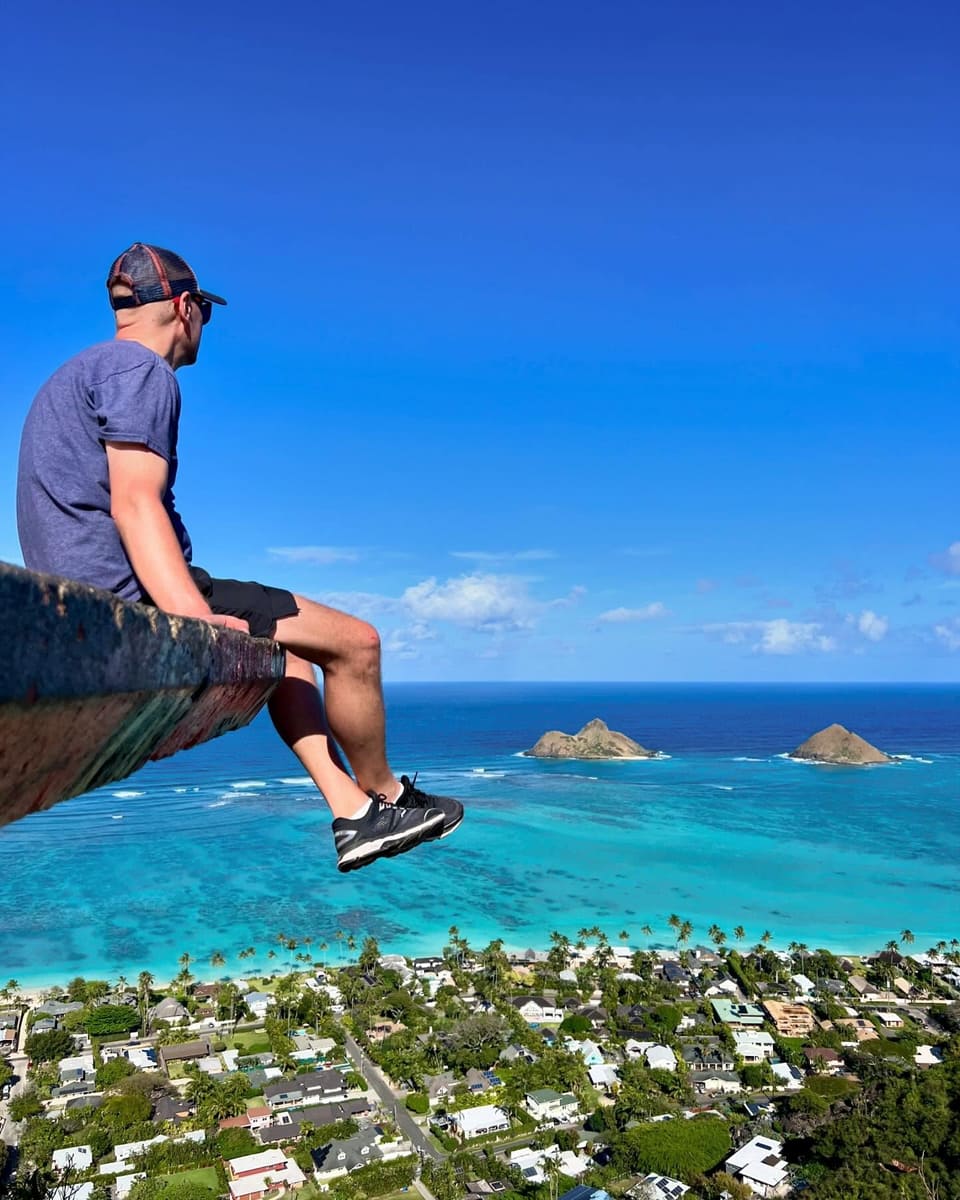
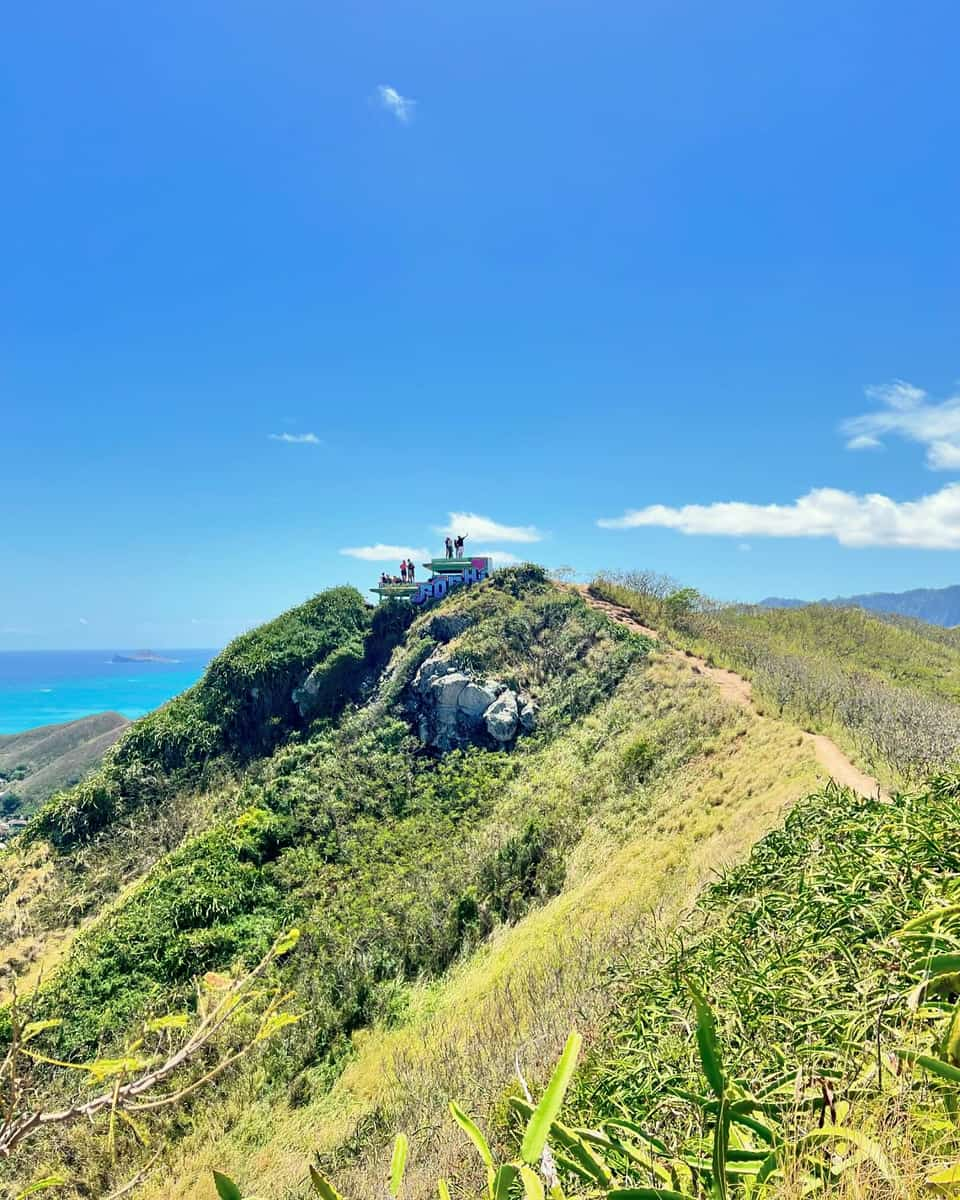
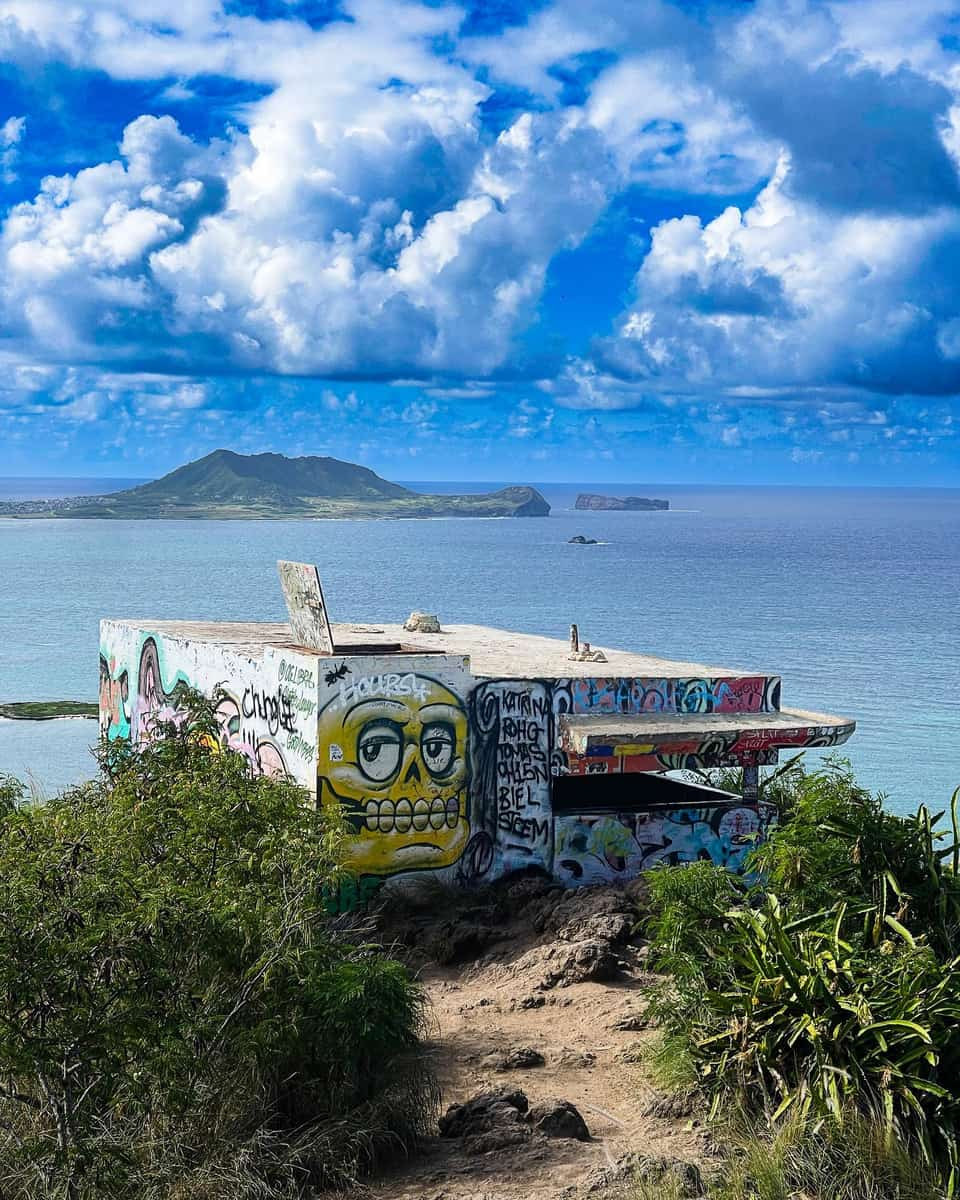
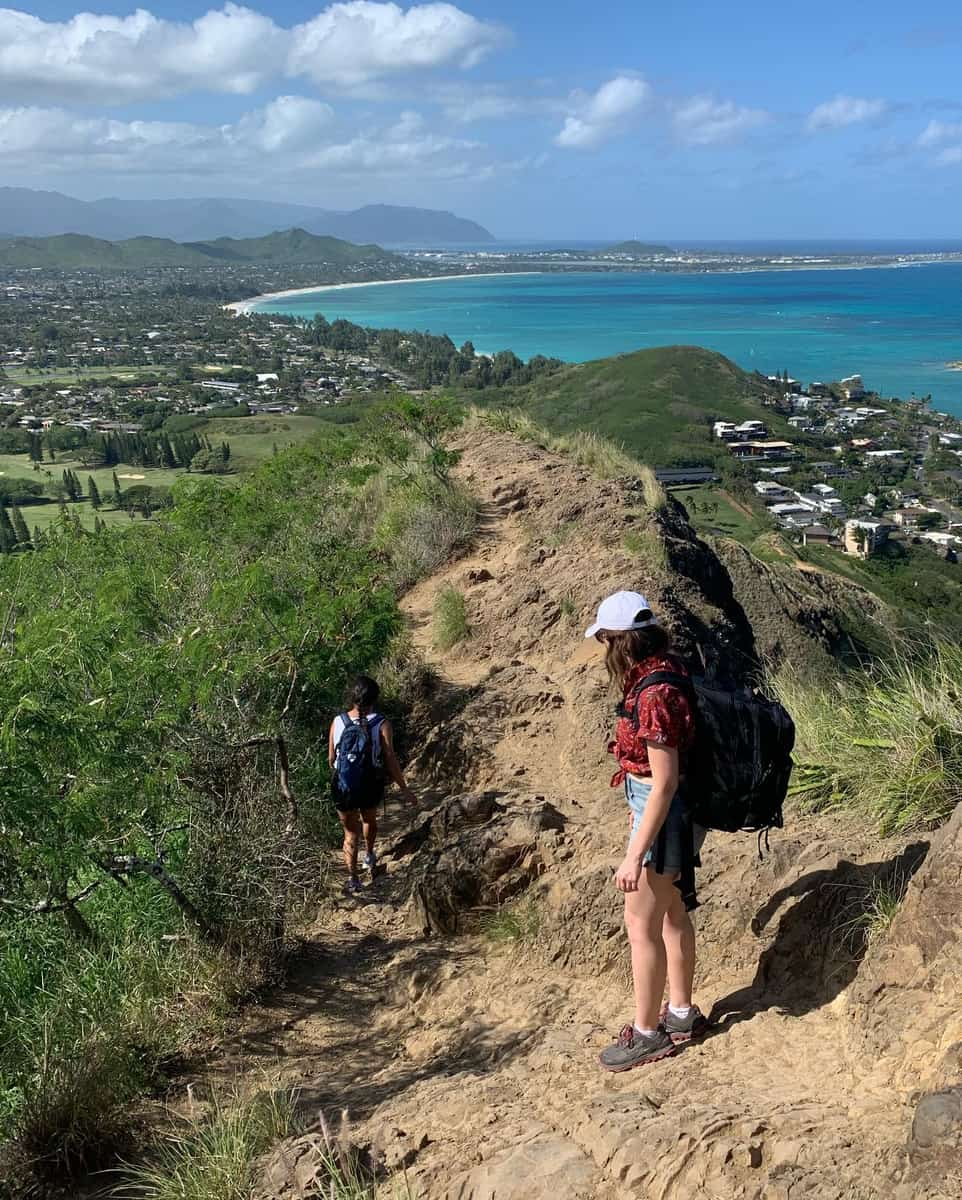
| Trail Information | Details | Best Times | What to Bring |
|---|---|---|---|
| Distance | 0.9 miles roundtrip | Weekday mornings | Water bottle |
| Elevation Gain | 400 feet | Sunrise (popular) | Sturdy shoes |
| Difficulty | Moderate | Avoid midday heat | Sun protection |
| Parking | Street parking only | Limited availability | Camera |
Panoramic payoff. Reaching the first pillbox after about 20 minutes of climbing, I was rewarded with one of the most spectacular views in all of Hawaii. The famous Mokulua Islands (“The Mokes”) floated on the azure ocean like emerald jewels, while Lanikai Beach’s white sand curved along the shoreline below. I continued another 10 minutes to the second, higher pillbox for an even more impressive panorama. The contrast between the deep blue ocean and white sand beaches created a postcard-perfect scene that no paid attraction could match.
Local knowledge. This trail has become increasingly popular, so I followed advice from locals to visit on a weekday morning. The path can be slippery with loose gravel, especially on the descent, so I wore proper hiking shoes rather than sandals. Since there’s no official parking lot, I found street parking in the residential neighborhood below, being careful to respect private property and not block driveways. The trail offers zero shade, so applying sunscreen before starting proved essential for this exposed ridge hike.
5. Ala Moana Beach Park
Local favorite. This stunning coastal retreat quickly became my go-to spot when I wanted to escape the tourist crowds of Waikiki. The 100-acre park features a half-mile stretch of white sand beach protected by an offshore reef that creates calm, swimmer-friendly waters. I joined locals doing morning laps in the channel that runs parallel to the beach, perfectly designed for exercise swimming. The park’s extensive grounds include grassy areas shaded by banyan trees, perfect for picnics or reading a book.
| Park Features | Hours | Activities | Facilities |
|---|---|---|---|
| Beach Access | 4:00-22:00 daily | Swimming, paddleboarding | Restrooms, showers |
| Magic Island | Same as above | Picnicking, sunset viewing | Protected lagoon |
| Tennis Courts | 6:00-22:00 | Free public courts | Drinking fountains |
| Exercise Areas | 24 hours | Outdoor fitness equipment | Jogging paths |
Magic Island. My favorite section of this beautiful park is the peninsula known as Magic Island, offering sweeping views of Waikiki, Diamond Head, and downtown Honolulu. This man-made extension features a protected lagoon perfect for children and beginner swimmers. I watched outrigger canoe teams practice their synchronized paddling just offshore while families set up elaborate weekend picnics under the shade trees. During holidays, this spot hosts some of Honolulu’s best fireworks displays, drawing thousands of spectators.
Active lifestyle. This vibrant recreational area showcases how locals living on Oahu enjoy the outdoors. I joined a free community yoga class on the grass one morning, with Diamond Head providing a stunning backdrop to our sun salutations. The paved path circling the park fills with joggers, skateboarders, and families pushing strollers throughout the day. Unlike tourist-focused Waikiki, this park offers a glimpse into everyday life in Honolulu, with multi-generational families gathering for weekend barbecues and birthday celebrations under the park’s pavilions.
6. Chinatown Honolulu Walk
Cultural immersion. Exploring Honolulu’s historic Chinatown district on foot costs nothing yet offers one of the richest cultural experiences in the city. I wandered through narrow streets lined with red brick buildings featuring distinctive architectural elements like overhanging awnings and ornate balconies. The neighborhood buzzes with energy as locals shop for fresh produce, herbs, and specialty items in small markets. Every doorway seemed to reveal something interesting – a traditional medicine shop with dried herbs hanging in bundles, a temple filled with incense smoke, or a bakery producing mouthwatering pastries.
| Chinatown Highlights | Best Times to Visit | Location | Special Events |
|---|---|---|---|
| Food Markets | Mornings for freshest produce | North of downtown Honolulu | First Friday art walk (monthly) |
| Cultural Temples | 9:00-17:00 most days | Maunakea & River Streets | Chinese New Year (Jan/Feb) |
| Art Galleries | Afternoons, closed Mondays | Hotel & Bethel Streets | Seasonal festivals |
| Historic Buildings | Anytime during daylight | Throughout district | Free walking tours (Wed/Fri) |
Culinary adventure. The sensory experience of Chinatown captivated me – fragrant lychees piled high at fruit stands, the savory aroma of manapua (meat-filled buns) steaming in shop windows, and colorful displays of dragon fruit and rambutan I couldn’t resist photographing. I discovered tiny hole-in-the-wall restaurants serving authentic dim sum and noodle shops where $10 bought a hearty lunch. The markets offered fascinating glimpses into Asian cooking ingredients I’d never seen before, from dried fish and exotic spices to fresh herbs used in traditional dishes.
Historic significance. Walking through Chinatown connected me to Honolulu’s multicultural history in ways no museum could. This neighborhood witnessed waves of immigration that shaped Hawaii’s unique cultural identity. I noticed architectural details reflecting different eras – Victorian-era buildings alongside mid-century structures and contemporary art spaces. The district has experienced remarkable revitalization, with trendy cafes and boutiques now sharing streets with traditional businesses that have operated for generations. Free self-guided walking tour maps available at the Hawaii Heritage Center helped me identify significant landmarks.
7. King Kamehameha Statue
Royal tribute. Standing before the golden King Kamehameha statue in downtown Honolulu, I felt a connection to Hawaii’s royal history that costs nothing to experience. This impressive 18-foot bronze monument depicts Hawaii’s first king who united the islands in 1810, shown draped in a feather cape with his arm extended in a gesture of aloha. Every June, the statue becomes the centerpiece of a major cultural celebration when it’s draped with dozens of fragrant flower lei during the annual King Kamehameha Day festivities. The statue’s gold leaf gleams in the tropical sunlight, making it impossible to miss.
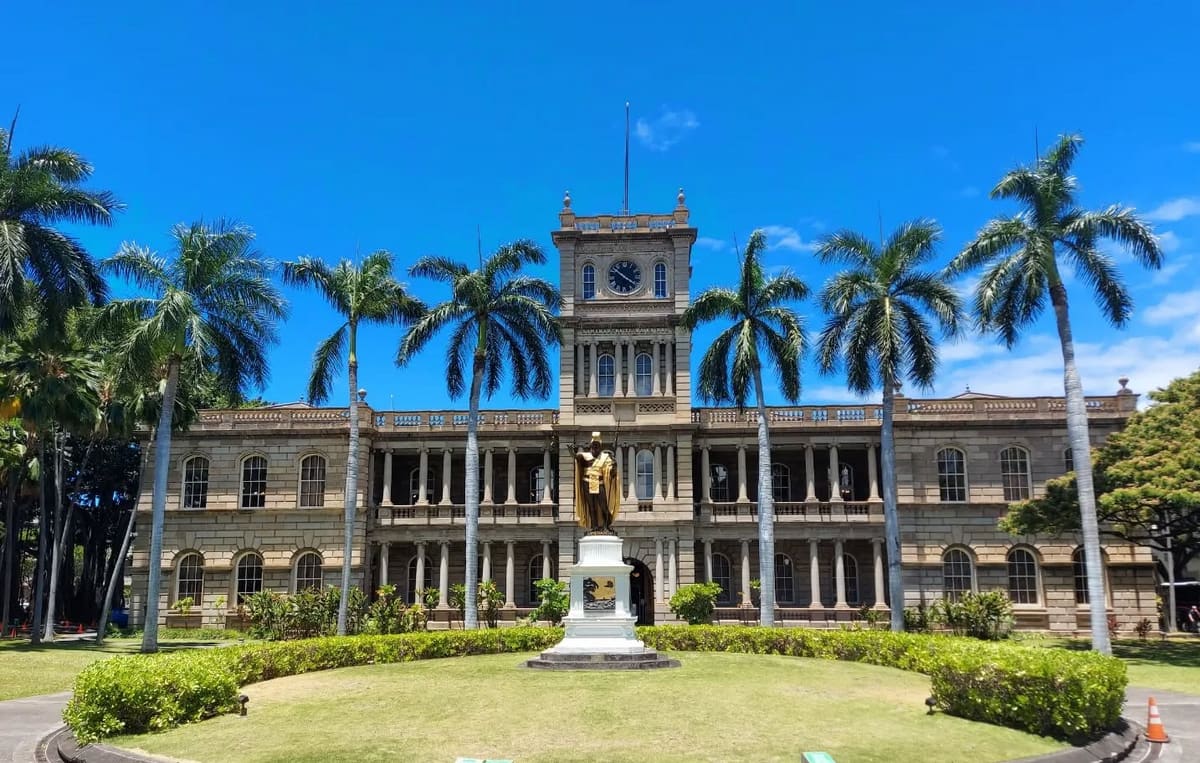
| Statue Information | Location | Nearby Attractions | Best Photo Times |
|---|---|---|---|
| Original statue | Ali’iolani Hale, 417 S King St | Iolani Palace | Early morning |
| Visiting hours | 24/7, exterior location | Hawaii State Capitol | Weekdays less crowded |
| Replica locations | Kapaau (Big Island), US Capitol | Hawaii Supreme Court | Lei draping (June) |
| Historical significance | First king of unified Hawaii | Mission Houses Museum | Avoid midday sun |
Historical context. The statue stands across from Iolani Palace, creating a powerful juxtaposition between Hawaii’s monarchy period and its later territorial status. I spent time reading the informational plaques that explain Kamehameha’s significance in Hawaiian history and the interesting story of how this statue came to be – the original was actually lost at sea around Cape Horn and later recovered. The location marks the former government center of the Hawaiian Kingdom, surrounded by important historical buildings that tell the story of Hawaii’s complex political history.
Cultural significance. Visiting the statue gave me insight into how deeply Hawaiians honor their heritage. I noticed visitors leaving small offerings at the base – fresh flower lei, ti leaves, and other traditional items showing respect for this important historical figure. The statue serves as more than just a photo opportunity; it’s a gathering place for cultural events and protests related to Hawaiian sovereignty issues. Standing in this spot, surrounded by both historic buildings and modern skyscrapers, helped me understand the ongoing dialogue between Hawaii’s past and present.
8. Capitol Modern Art Gallery
Artistic discovery. Walking into the Capitol Modern Art Gallery in downtown Honolulu, I was delighted to find a free contemporary art space showcasing Hawaiian artists alongside international works. The gallery occupies a renovated historic building with soaring ceilings and natural light flooding through tall windows. Each exhibition room features carefully curated collections that change regularly, ensuring repeat visitors always discover something new. I spent over an hour examining bold paintings inspired by island landscapes, abstract sculptures incorporating traditional materials, and multimedia installations addressing environmental and cultural themes.
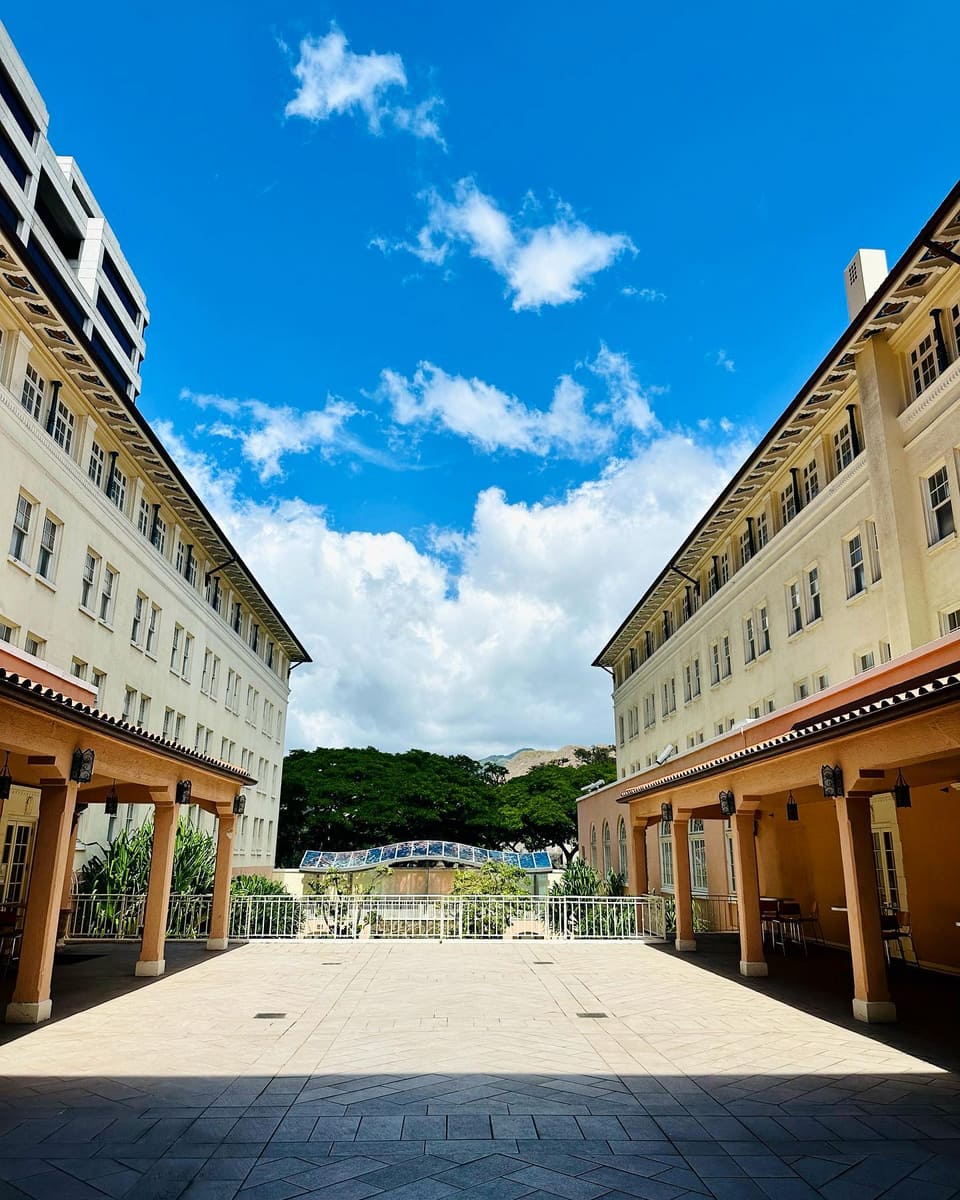
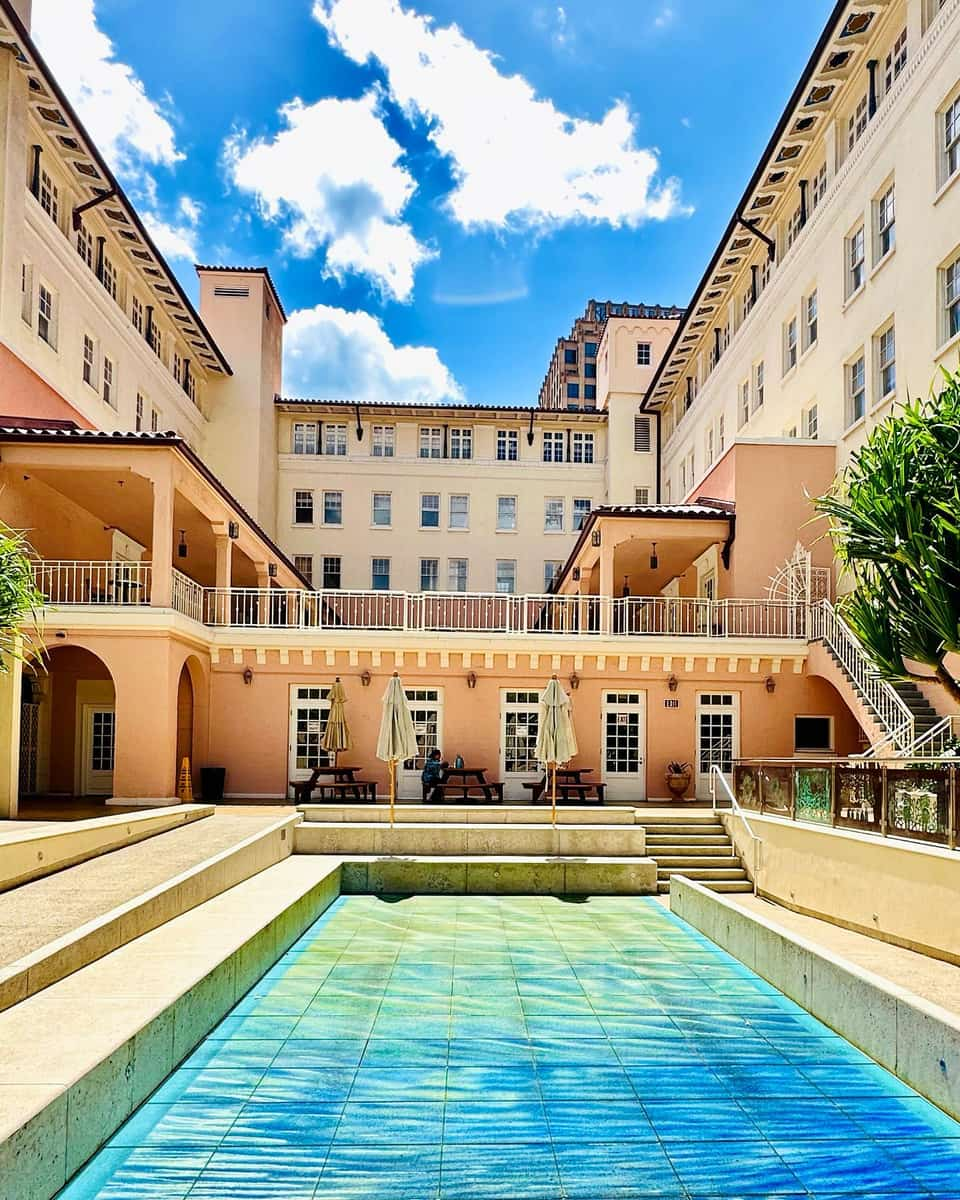
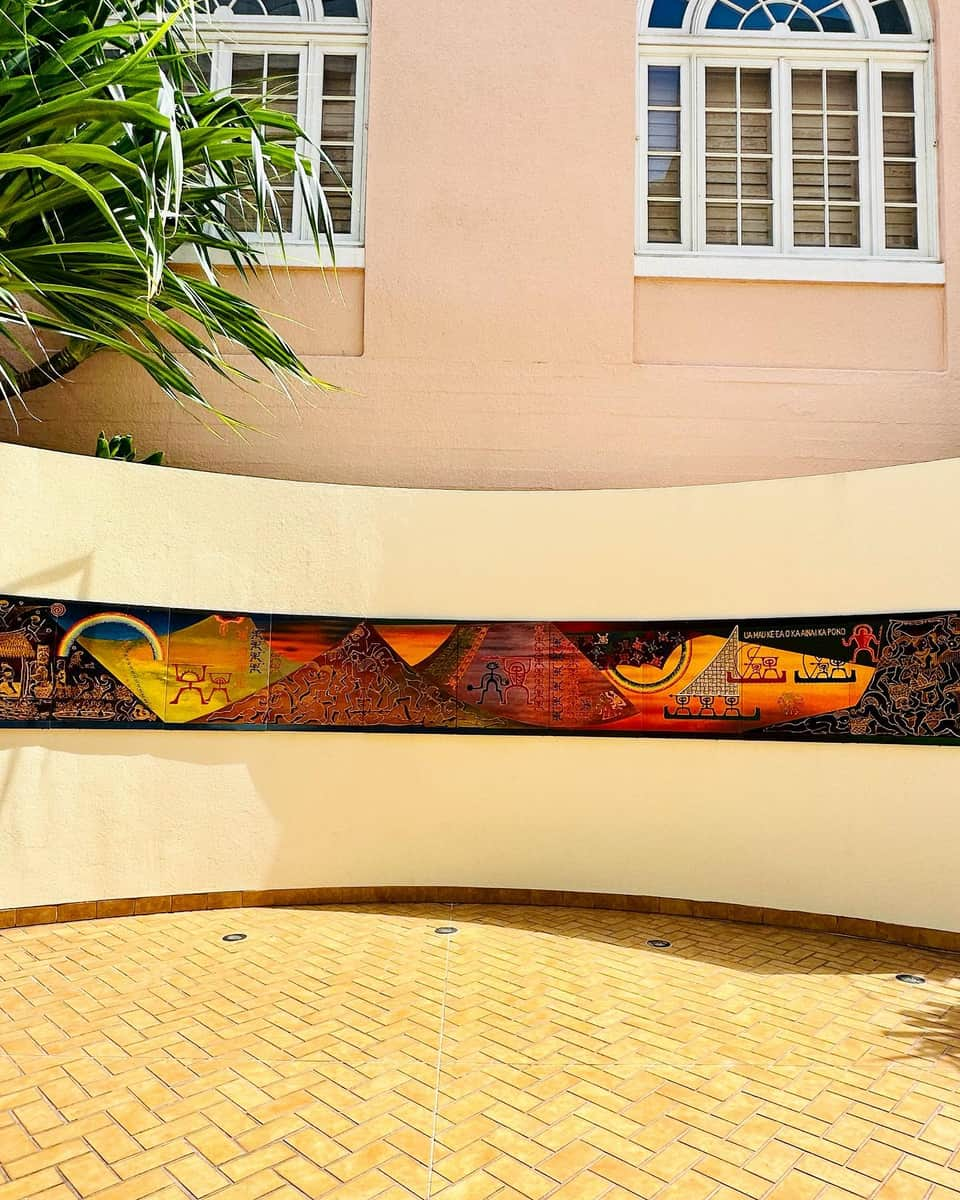
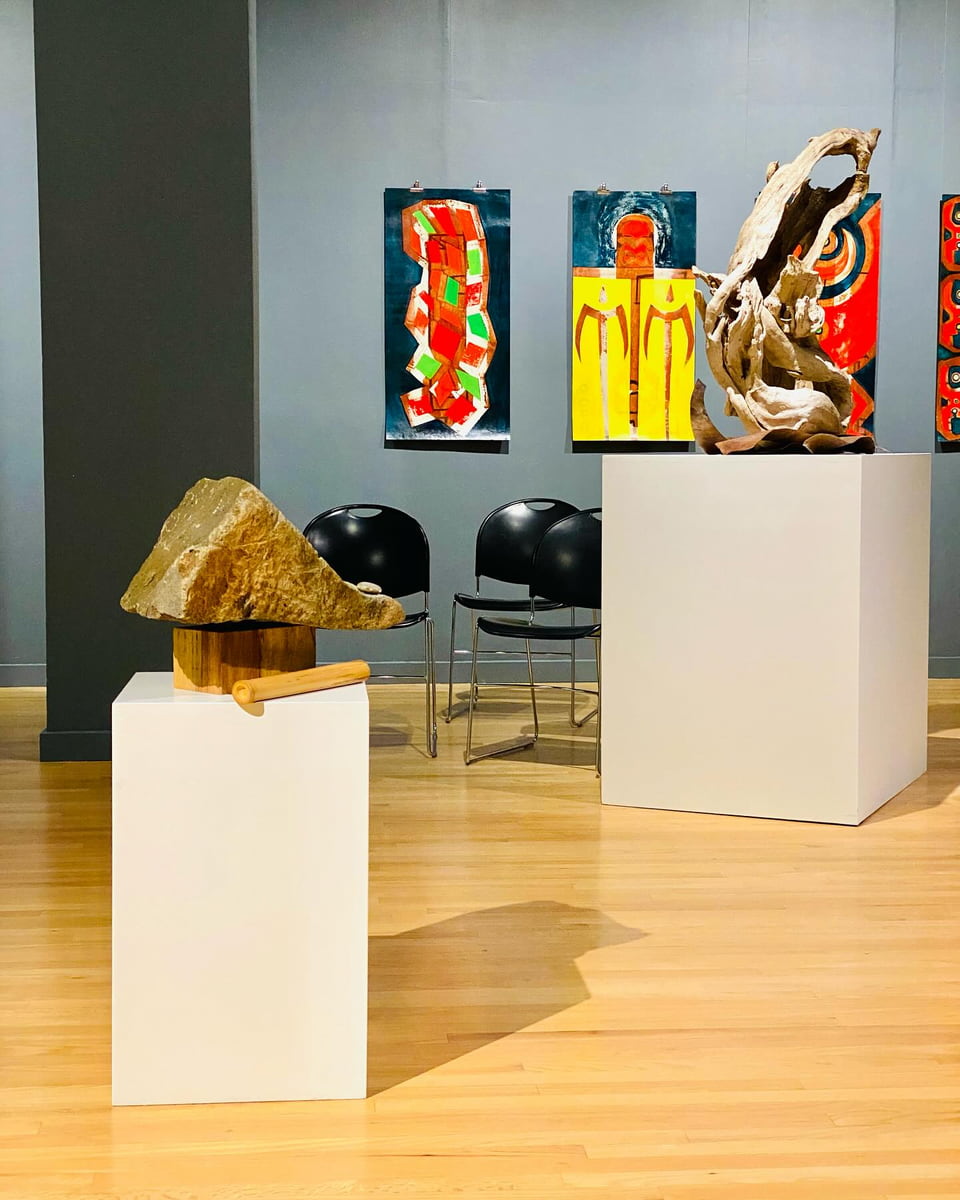
| Gallery Information | Hours | Exhibition Types | Programs |
|---|---|---|---|
| Admission | Free | Contemporary Hawaiian art | Artist talks (monthly) |
| Location | No. 1 Capitol District Building | Rotating exhibitions | Free guided tours (Saturdays) |
| Opening Hours | Tue-Sat 10:00-16:00 | Photography, sculpture, paintings | Children’s art activities |
| Special Events | First Friday art walks | Multimedia installations | Cultural performances |
Local perspectives. What impressed me most was how the gallery presents contemporary interpretations of Hawaiian culture through various artistic mediums. One exhibition featured photographs documenting traditional practices being preserved by younger generations, while another showcased abstract works inspired by native plants and mythology. The gallery provides a platform for local artists to address important issues facing modern Hawaii – from environmental concerns to cultural identity and urban development. Each piece offered a window into how artists living on Oahu interpret their changing home.
Community space. Beyond displaying art, the gallery functions as a cultural hub hosting free events that bring together diverse segments of Honolulu’s community. I attended a fascinating artist talk where a local sculptor explained how she incorporates recycled materials found on beaches into her work. The friendly staff provided insights about the exhibitions and recommendations for other cultural spots to visit in the area.
Seasonal Activities in Honolulu
Christmas in Honolulu
Festive lights. Walking through downtown Honolulu during December, I was amazed by the dazzling Honolulu City Lights display that transforms the area around Honolulu Hale (City Hall). The 50-foot Christmas tree stands as a centerpiece surrounded by elaborate decorations including the famous Shaka Santa and Tūtū Mele figures that have become iconic symbols of island holiday spirit. Families gather on opening night when the mayor ceremonially lights the tree, kicking off a month of festivities that blend traditional Christmas elements with unique Hawaiian touches.
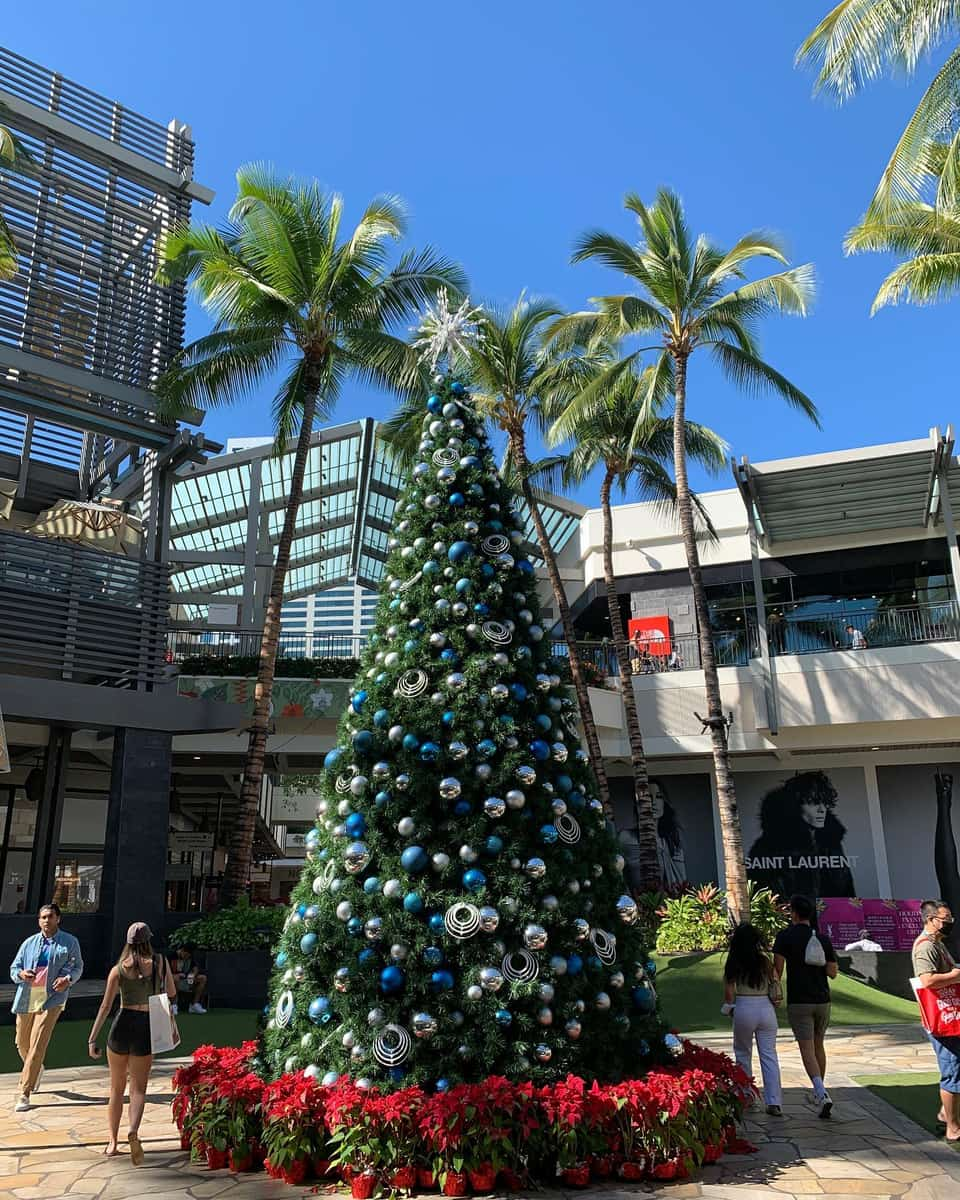
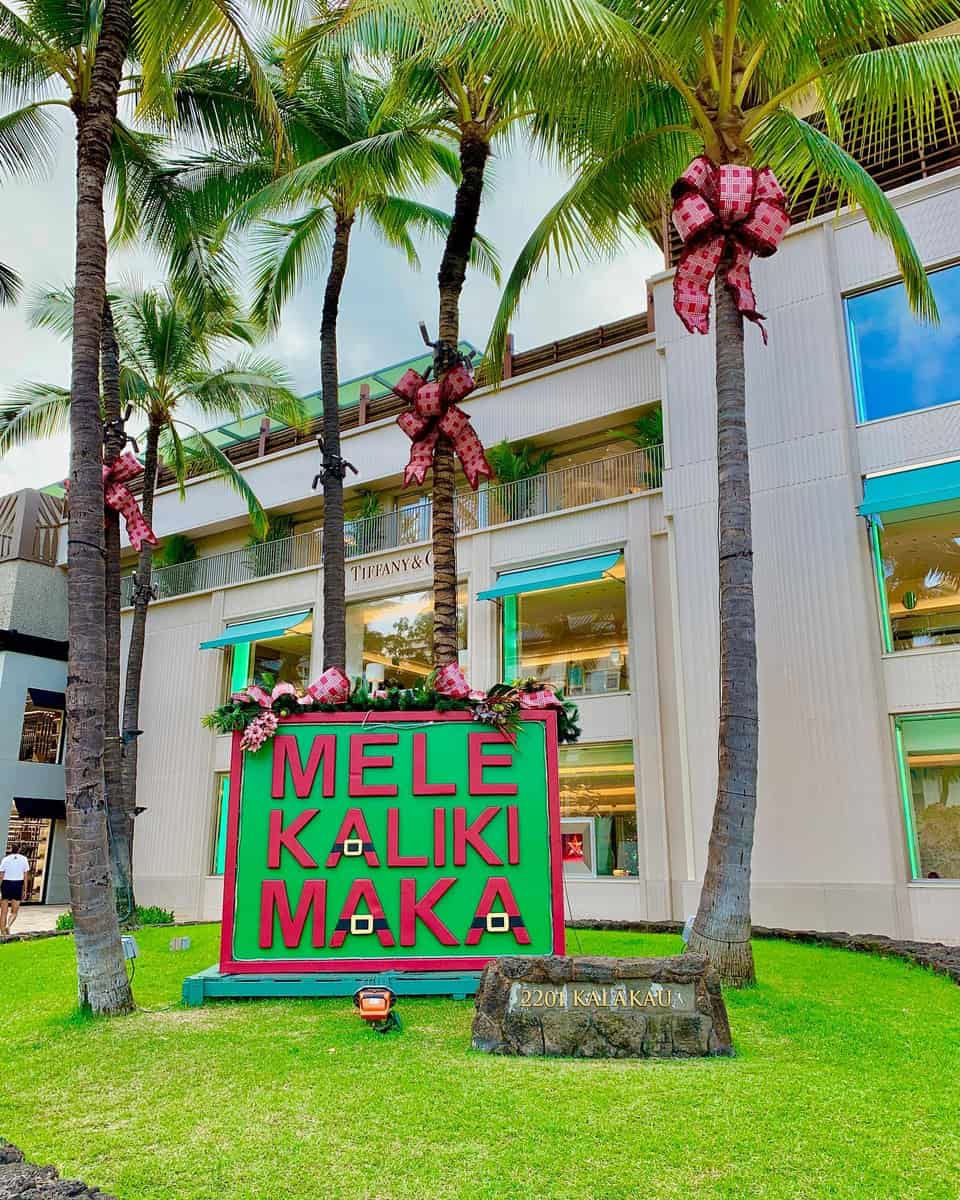
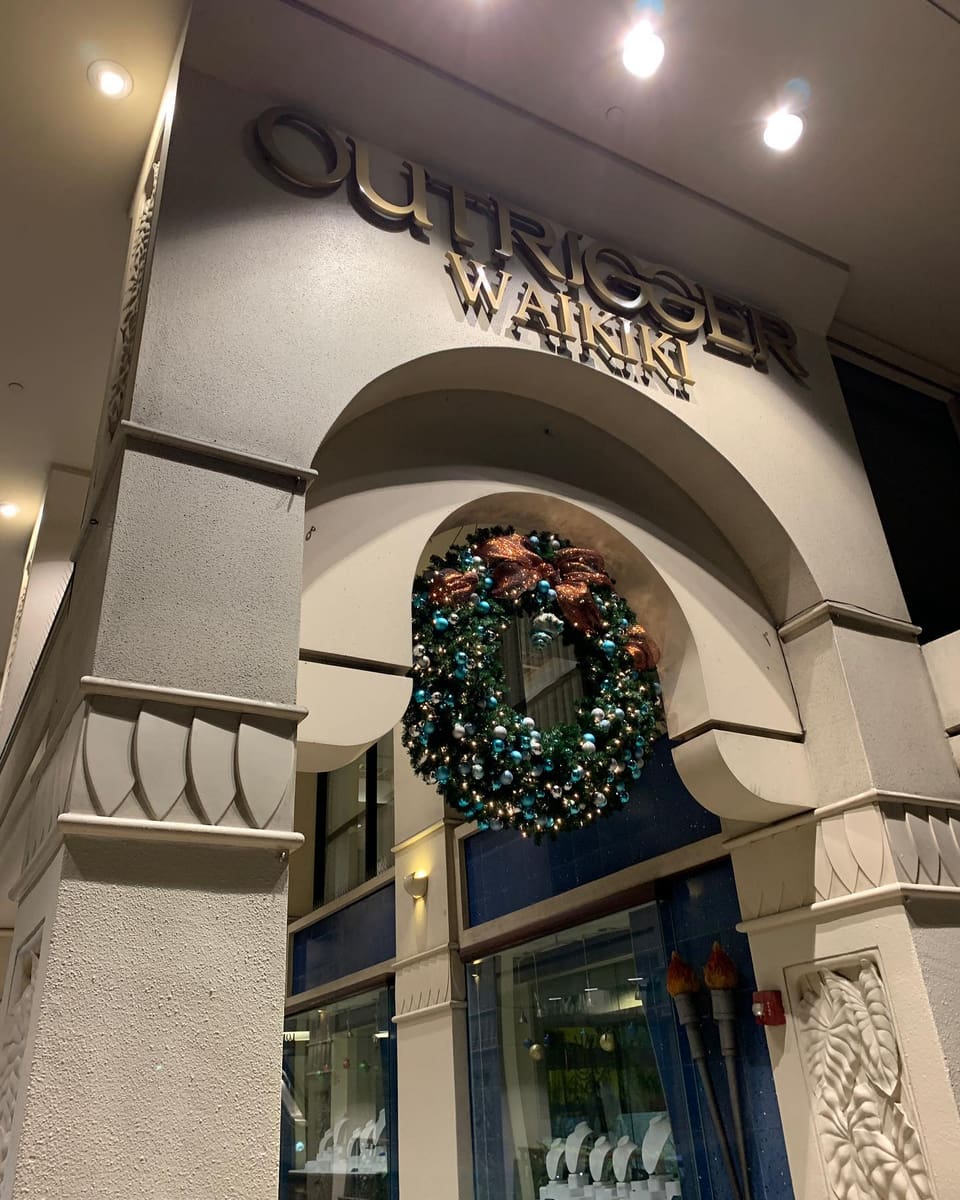
| Christmas Event | Dates | Cost | Location |
|---|---|---|---|
| Honolulu City Lights | Dec 7-31 | Free | 530 S. King St (Honolulu Hale) |
| Ballet Hawaii’s The Nutcracker | Mid-December | $35-95 | Neal Blaisdell Center |
| Festival of Lights Boat Parade | Mid-December | Free to watch | Hawaii Kai Marina |
| Waikiki Trolley Holiday Lights Tour | Dec 5-26 | $25 adults, $15 children | Departs from Ward Village |
Unique celebrations. During my time in Honolulu, I discovered that Christmas takes on a distinctly island flavor with events like the Christmas in Polynesia celebration at the Polynesian Cultural Center. Instead of sleigh bells, I heard ukuleles playing holiday classics while hula dancers performed at beachside hotels in Waikiki. The Winter Wonderland at Aloha Stadium amazed me with its 2.5 million LED lights choreographed to music, creating a magical drive-through experience just outside of Waikiki. Even Santa trades his heavy red suit for aloha wear as he arrives by outrigger canoe on Waikiki Beach.
Local traditions. One of my favorite discoveries was the Chinatown Winter Walk, where historic buildings are decorated with lights and vendors sell handcrafted gifts perfect for holiday shopping. The Mele Kalikimaka Marketplace offered locally made products that make unique souvenirs while supporting island artisans. I joined locals at the Pearl Harbor Memorial Parade that honors veterans while celebrating the holiday season, watching illuminated floats travel down Kalakaua Avenue with Diamond Head and Honolulu creating a stunning backdrop. The blend of solemn remembrance and festive celebration created a powerful emotional experience unlike Christmas celebrations I’ve experienced elsewhere.
Summer Festivals and Events
Cultural celebrations. Experiencing the King Kamehameha Floral Parade in June was a highlight of my summer visit to Honolulu. Colorful floats adorned with thousands of tropical flowers processed from downtown Honolulu to Kapiolani Park, accompanied by traditional pau riders – women on horseback wearing flowing dresses in vibrant colors. The parade honors Hawaii’s first king who united the islands, with participants showcasing the best of Hawaiian culture through music, dance, and elaborate floral displays. I stood near Fort DeRussy Beach Park for the best views, amazed by the intricate lei decorations and traditional costumes.
| Summer Event | When | Cost | Location |
|---|---|---|---|
| King Kamehameha Floral Parade | June 14 | Free | Downtown to Kapiolani Park |
| Lei Day Celebration | May 1 | Free | Kapiolani Park |
| Aloha Festivals | August-September | Most events free | Various locations around Oahu |
| Prince Lot Hula Festival | July 19-20 | Free | Moanalua Gardens |
Aloha spirit. The Aloha Festivals spanning late summer into fall offered me a deeper understanding of Hawaiian culture through nearly 300 events across Honolulu and Oahu. I watched in awe as master hula dancers performed at the Prince Lot Hula Festival, their movements telling stories of ancient legends and island history. The festival honors Prince Lot Kapuāiwa who helped preserve hula when it was once banned, featuring performances in the beautiful Moanalua Gardens just a short drive from Waikiki. Local families shared traditional crafts, games, and food, welcoming visitors to participate in cultural activities rarely seen outside of Hawaii.
Water adventures. Summer brings perfect conditions for water activities around Honolulu, with calm seas ideal for learning to surf on the gentle waves of Waikiki Beach. I tried parasailing off the coast of Oahu, soaring 500 feet above the turquoise waters with breathtaking views of Diamond Head and Honolulu stretching before me. The warm ocean temperatures made snorkeling especially pleasant, with greater underwater visibility than winter months. Evening brought opportunities to experience authentic luaus on Oahu, where I feasted on kalua pig cooked in underground ovens while watching fire knife dancers perform against the backdrop of a spectacular sunset over the beaches of Oahu.
Spring Blooms in Royal Parks
Floral explosion. Springtime transforms Honolulu’s parks and gardens into vibrant showcases of tropical flowers that left me reaching for my camera at every turn. Kapiolani Park, nestled between Waikiki Beach Resort and Diamond Head, erupts with color as plumeria, hibiscus, and bougainvillea reach peak bloom. I spent a peaceful morning wandering through the park’s banyan groves, where the massive trees create natural canopies perfect for picnics. The fragrance of blooming ginger and plumeria filled the air, creating a sensory experience that perfectly captures the essence of spring in Honolulu.

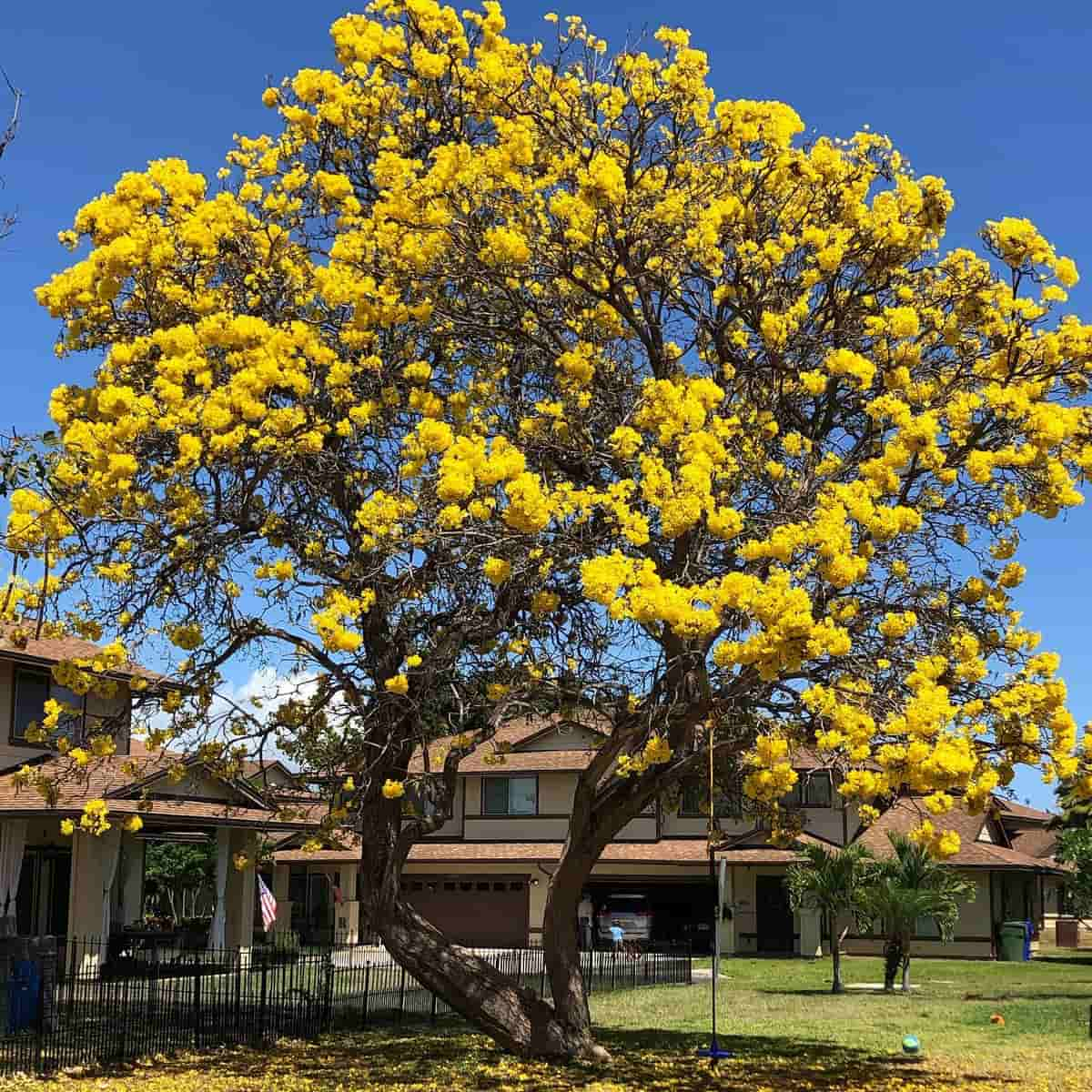
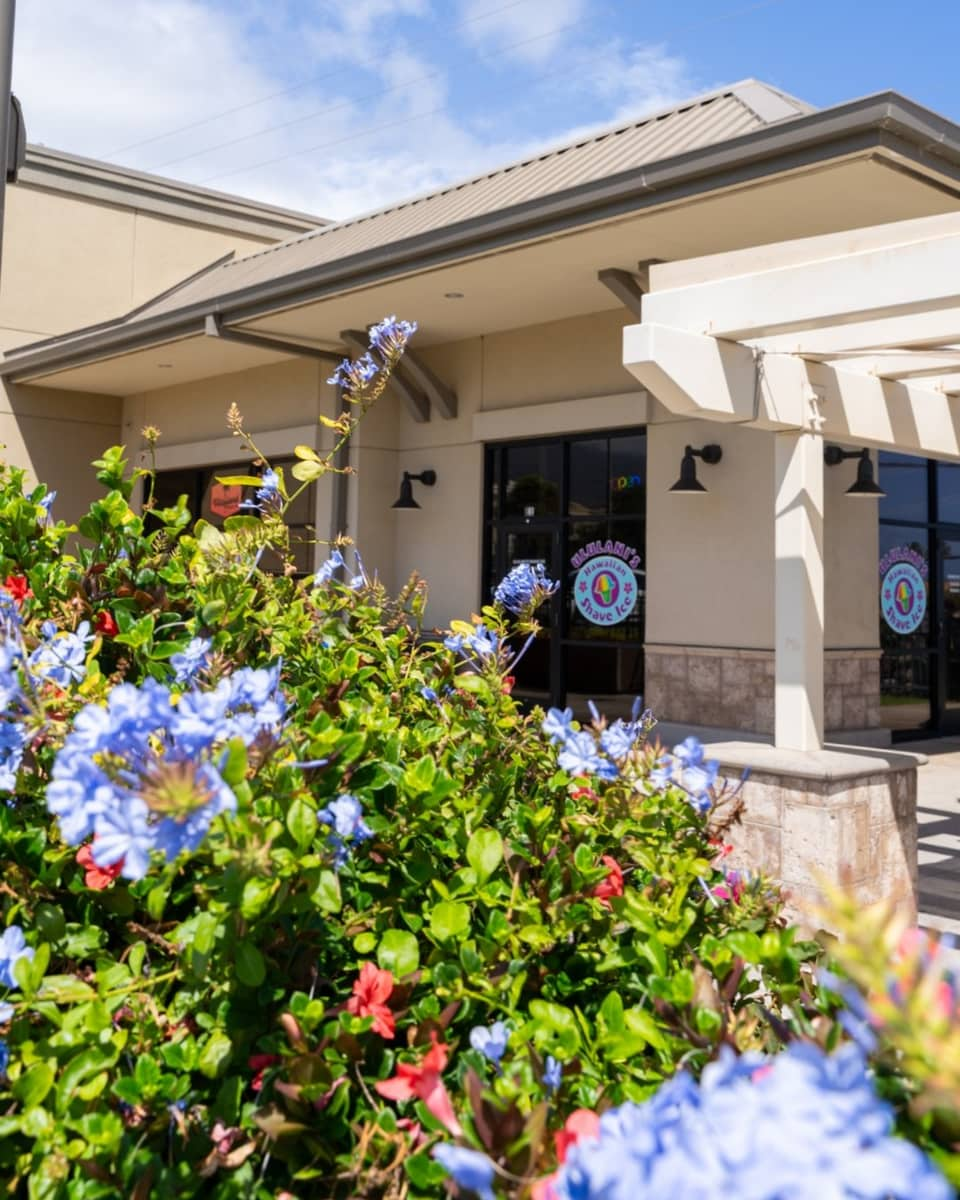
| Spring Garden | Best Viewing Time | Entry Fee | Notable Features |
|---|---|---|---|
| Foster Botanical Garden | March-May | $5 adults | Rare and endangered tropical plants |
| Liliuokalani Botanical Garden | April-June | Free | Native Hawaiian plants, stream |
| Lyon Arboretum | Year-round, best in spring | Free (donations welcome) | 7,000+ tropical plants, rainforest setting |
| Kapiolani Park | Year-round, peak in spring | Free | Historic banyan trees, open lawns |
Cultural bloom. Spring in Honolulu brings not only natural beauty but cultural celebrations like the Cherry Blossom Festival that honors Japanese influences on island culture. I watched traditional taiko drumming performances and ikebana flower arranging demonstrations at the festival grounds near downtown. The Honolulu Festival in March offered a three-day celebration of Pacific Rim cultures with art exhibitions, dance performances, and a grand parade through Waikiki. These events showcase the multicultural fabric of Honolulu and Oahu, with participants from Japan, Korea, Australia, the Philippines, and Taiwan sharing their traditions.
Garden explorations. Venturing outside of Waikiki, I discovered Foster Botanical Garden, one of the oldest botanical gardens in Hawaii with trees planted over 150 years ago. The garden’s exceptional collection of tropical plants includes rare cycads and an impressive orchid display that peaks during spring months. At Lyon Arboretum in Manoa Valley, The combination of flowing streams, native plants, and introduced species creates a living museum that demonstrates the island’s remarkable biodiversity and offers a cool retreat from the warming spring temperatures.
Autumn Foliage Walks
Scenic trails. While Honolulu doesn’t experience the dramatic leaf color changes of mainland forests, autumn brings perfect hiking weather to explore the island’s stunning trails. I discovered the Makapu’u Lighthouse Trail offers one of the most accessible and rewarding hikes on the eastern edge of Oahu. The paved 2-mile round-trip path climbs gradually to spectacular views of the windward coast, offshore islets, and on clear days, neighboring islands. October’s cooler temperatures and reduced humidity made the hike comfortable, while seasonal whale watching added an exciting element as I spotted humpbacks beginning their winter migration to Hawaiian waters.
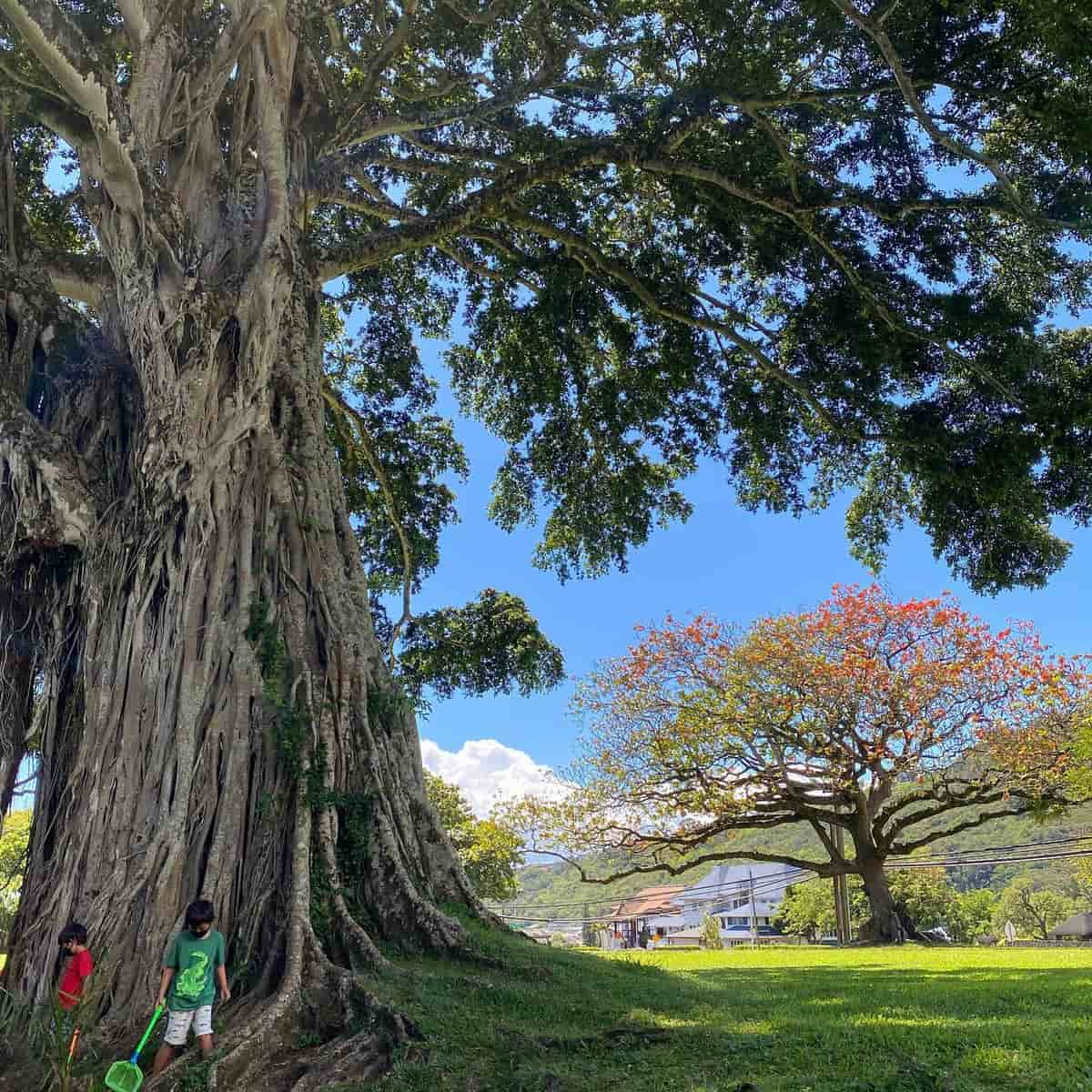
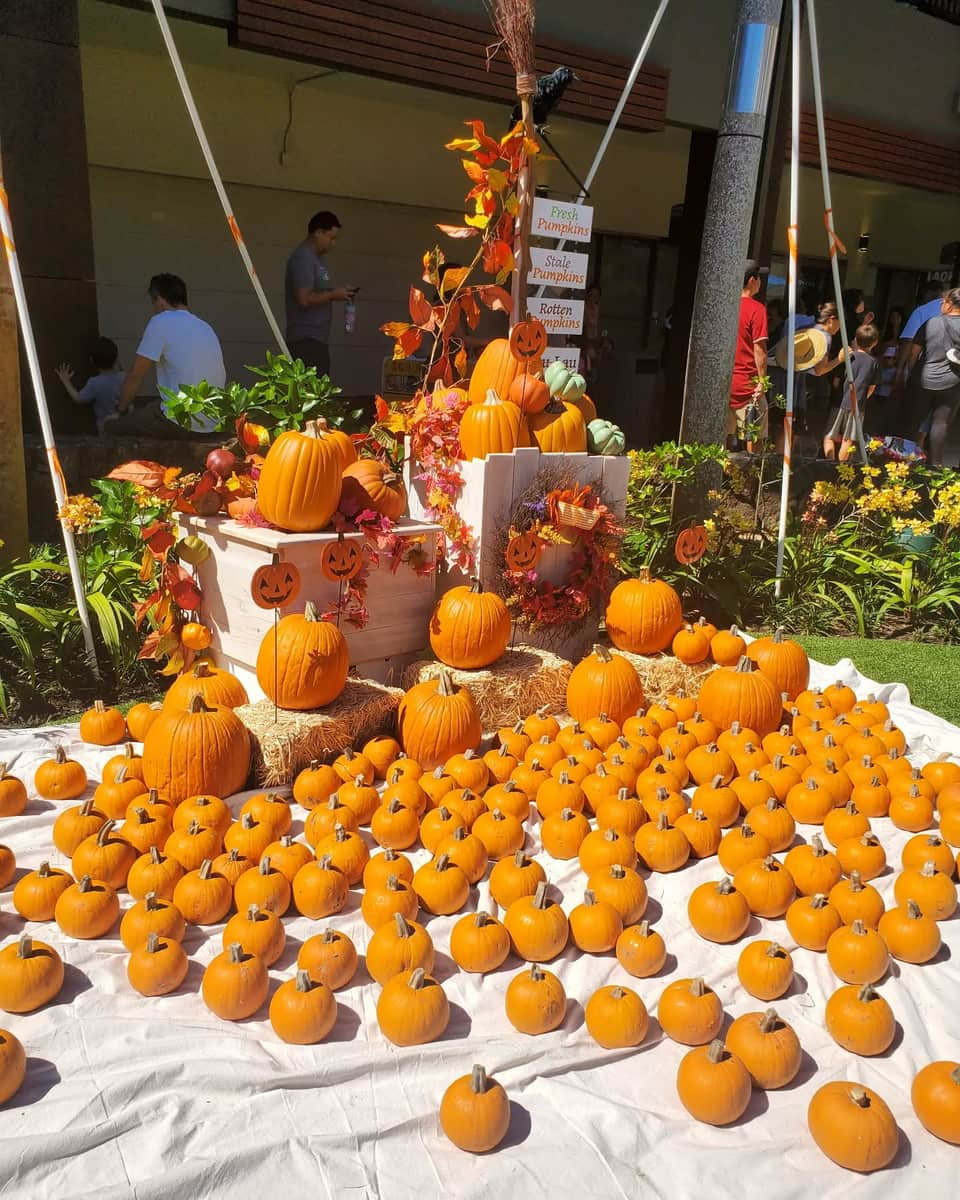
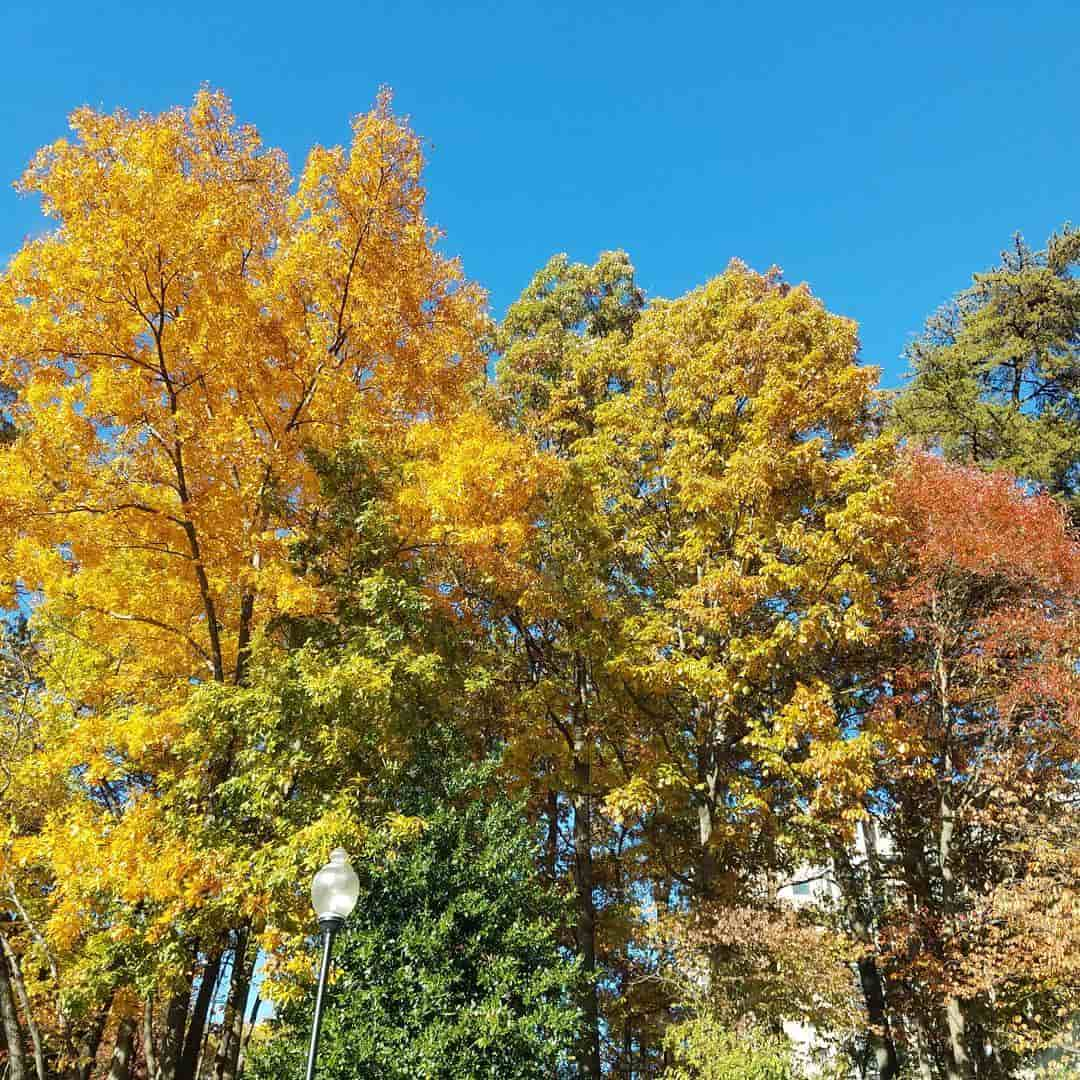
| Autumn Hikes | Difficulty | Duration | Features |
|---|---|---|---|
| Makapu’u Lighthouse Trail | Easy | 1-2 hours | Whale watching, lighthouse views |
| Manoa Falls Trail | Easy-Moderate | 1.5-2 hours | Rainforest, 150-foot waterfall |
| Diamond Head Summit | Moderate | 1.5-2 hours | Panoramic city views, historic bunkers |
| Koko Head Crater Trail | Challenging | 1-2 hours | 1,048 railway ties to summit, stunning views |
Rainforest wonders. The Manoa Falls Trail transforms during autumn months, with slightly lower rainfall creating ideal conditions for exploring this lush valley north of downtown Honolulu. I walked beneath a canopy of massive trees draped with vines and ferns, following a well-maintained path that winds through one of the most accessible rainforests on Oahu. The trail culminates at a 150-foot waterfall that cascades dramatically down a sheer rock face. The mist created a refreshing microclimate that nourished the surrounding vegetation, including enormous philodendrons and wild ginger plants with vibrant red flowers that stand out against the green backdrop.
Day Trips from Honolulu
1. North Shore Oahu
Scenic drive. Leaving the high-rise hotels of Waikiki behind, I set out on a perfect day trip to discover the best of Honolulu and beyond. The North Shore of Oahu offers a completely different experience from the bustling capital, with a laid-back surf culture that feels worlds away. I chose to drive Highway 2 through the center of the island, passing lush mountains and the famous Dole Plantation before reaching Haleiwa town approximately 40 minutes from downtown. The contrast between city life and this relaxed coastal area made me feel like I’d traveled to another island entirely.
| North Shore Transportation | Cost | Duration | Notes |
|---|---|---|---|
| Rental Car | $60-100/day | 40-60 minutes drive | Most flexible option |
| The Bus (Route 52) | $5.50 day pass | 1.5-2 hours | Budget-friendly |
| Guided North Shore Tour | $89-150 per person | 8-10 hours | Includes multiple stops |
| Shaka Guide Self-Guided Tour | $29.99 (app) | 6-8 hours | Audio narration for 20 stops |
Surf culture. Arriving in Haleiwa, the unofficial capital of the North Shore, I immediately felt the relaxed surf town vibe with its colorful shops and historic plantation-era buildings. Winter brings massive waves to beaches like Banzai Pipeline and Waimea Bay, where I watched professional surfers tackle 20-foot swells from a safe distance on shore. During summer months, these same beaches transform into calm swimming spots perfect for families. After exploring the beaches, I treated myself to a rainbow-colored shave ice at Matsumoto’s, a North Shore institution where locals and tourists alike line up for this refreshing Hawaiian treat.
Local flavors. One of the best things about a trip to the North Shore is exploring the famous food truck scene in Kahuku. I sampled garlic shrimp from Giovanni’s, a legendary white truck covered in thousands of visitor signatures, and fresh poke bowls from a nearby seafood stand. The picnic tables under palm trees created a perfect casual dining atmosphere with ocean views. Before heading back to Honolulu, I stopped at the Sunrise Shack for a colorful smoothie bowl topped with local fruits and honey. My travel guide had suggested taking the windward coast route back to see different scenery, which offered stunning ocean views the entire drive.
⭐ Best Activities
- Zipline Adventure on Oahu's North Shore – Soar through the treetops on an exhilarating zipline adventure on Oahu’s scenic North Shore, featuring multiple ziplines with stunning views of tropical landscapes and the Pacific Ocean.
2. Waimanalo Beach
Hidden gem. Driving along the windward coast of the island, I discovered what many locals consider the most beautiful beach on Oahu. Waimanalo Beach stretches for nearly five uninterrupted miles, with powdery white sand that squeaked beneath my feet and waters in shades of turquoise I didn’t think existed outside of photo filters. Unlike the crowded shores of Waikiki lined with high-rise hotels, this beach offers a peaceful escape with ironwood trees providing natural shade. The gentle slope into the ocean and moderate waves make it perfect for swimming and bodyboarding.
| Waimanalo Beach | Information | Facilities | Activities |
|---|---|---|---|
| Location | East Shore, 16 miles from Honolulu | Restrooms, showers | Swimming, bodyboarding |
| Hours | 7:00-19:45 daily | Picnic areas | Beach walks, photography |
| Parking | Free (limited) | Lifeguards until 17:30 | Camping (with permit) |
| Food Options | None on-site | Bring your own | Nearby food trucks |
Local experience. What struck me most about Waimanalo was how it felt like stepping into the Hawaii that locals experience – families gathered under pop-up tents for weekend barbecues, children building elaborate sand castles, and couples walking hand-in-hand along the shoreline. The beach gained some fame as a filming location for “Magnum P.I.” and “Baywatch Hawaii,” but has managed to maintain its authentic character. I joined a beach yoga class one morning, practicing sun salutations with the sound of gentle waves providing a natural soundtrack.
Natural beauty. The backdrop of the Ko’olau Mountains rising dramatically behind Waimanalo Beach creates one of the most photogenic landscapes in my Hawaii travel experience. The beach’s position on the windward side means trade winds keep temperatures comfortable even on hot days. I spent hours simply walking along the shore, collecting tiny shells and watching the shifting patterns of light on the water. Before leaving, I stopped at a nearby food truck for fresh coconut water served straight from the shell – the perfect refreshment after a day of sun and sand at what might be the most beautiful beach I’ve visited during my time in Hawaii.
⭐ Best Activities
- Oahu Drone Photography Tours – Capture spectacular aerial footage of Oahu’s most beautiful locations with professional drone equipment and expert guidance, creating unforgettable memories and stunning photos from unique vantage points.
3. Kualoa Ranch
Movie magic. Driving 45 minutes from Waikiki, I arrived at Kualoa Ranch, a 4,000-acre working cattle ranch that doubles as Hollywood’s favorite filming location on Oahu. The moment I stepped onto the property, I recognized the dramatic valley from scenes in Jurassic Park, Jumanji, and Lost. The ranch offers various tour options that take visitors through these iconic filming locations in open-air vehicles. I chose the Hollywood Movie Sites Tour, bouncing along in a vintage bus as our guide pointed out exactly where famous scenes were filmed against the backdrop of the stunning Kualoa Mountains.
| Tour Options | Price (USD) | Duration | Includes |
|---|---|---|---|
| Hollywood Movie Sites Tour | $59.95 | 90 minutes | Famous film locations |
| Jungle Expedition Tour | $59.95 | 90 minutes | Off-road adventure |
| Combo Package (3 tours) | $160.00 | 8 hours | Lunch included |
| Premier Movie Sites Tour | $139.95 | 2.5 hours | Small group, photo stops |
Cultural significance. Beyond its Hollywood connections, Kualoa Ranch represents one of Oahu’s most historically significant locations. Our guide shared stories about the property’s ancient fishponds that once fed Hawaiian royalty and the sacred Kualoa Valley, considered one of the most important places in Hawaiian culture. I learned how the ranch’s current owners have worked to preserve both the natural environment and cultural heritage of this special place. The contrast between ancient history and modern film production created a fascinating narrative that deepened my appreciation for this stunning landscape.
Outdoor adventures. After exploring movie sites, I joined the Jungle Expedition Tour that took us deep into the property’s rainforest areas on a bumpy 4×4 ride. We crossed streams and climbed to viewpoints offering sweeping panoramas of Kaneohe Bay. The ranch offers numerous activities beyond film tours – horseback riding, ATV adventures, zip lining, and even ancient fishpond exploration. I finished my visit with the Hawaii Grown Ranch Tour, learning about sustainable agriculture practices while sampling fresh tropical fruits grown on the property. The combination of stunning scenery, cultural history, and adventure activities makes Kualoa Ranch one of the most memorable day trips from Honolulu.
⭐ Best Activities
- Oahu Grand Circle Island Tour – Discover the complete beauty of Oahu on this comprehensive island tour, visiting famous beaches, scenic lookouts, cultural sites, and natural wonders while learning about Hawaiian history and culture from expert guides.
FAQ about Things to Do in Honolulu
What are the must-see attractions in Honolulu?
The must-see attractions include Pearl Harbor National Memorial, Diamond Head State Monument, and Waikiki Beach. I also recommend visiting Iolani Palace (the only royal residence on US soil), the Polynesian Cultural Center, and Hanauma Bay for snorkeling. During your trip to Honolulu, make time for the Bishop Museum to learn about Hawaiian culture and history.
How many days should I include in my Hawaii itinerary for Honolulu?
I suggest spending at least 3-5 days in Honolulu to experience the main attractions without rushing. This gives you enough time to discover the best things in the city while also allowing for a day trip to the North Shore or other parts of Oahu. If you want to explore more Oahu attractions beyond the city, consider extending your stay to 7 days.
What fun things can I do with kids in Honolulu?
Families will love the Honolulu Zoo, Waikiki Aquarium, and Magic Island playground at Ala Moana Beach Park. The Children’s Discovery Center offers interactive exhibits perfect for rainy days. Older kids might enjoy the Koko Head hike for its challenging “stairmaster” trail and rewarding views, though it’s best for teens and adults in good physical condition.
What are the best free things to do in Honolulu?
You can enjoy Waikiki Beach, Kapiolani Park, and Ala Moana Beach Park without spending a penny. Walking tours of Chinatown Honolulu and visiting the King Kamehameha Statue are also free. Many hotels in Waikiki offer free cultural activities like hula lessons and lei-making workshops if you find yourself in Honolulu on a budget.
Where should I stay in Honolulu?
Waikiki is lined with high-rise hotels and offers convenient access to beaches, shopping, and dining. For a quieter experience, consider accommodations in the Diamond Head area or near Ala Moana. If you prefer a home near Diamond Head with more space, vacation rentals in Kahala or Hawaii Kai provide a more residential feel while still being close to attractions.
What should I include in my Hawaii packing list for Honolulu?
Pack lightweight, breathable clothing, swimwear, and a light jacket for evenings. Don’t forget reef-safe sunscreen, a reusable water bottle, and comfortable walking shoes for hiking. A waterproof phone case, quick-dry towel, and small backpack are also essentials. If planning to visit Pearl Harbor or Iolani Palace, bring modest attire that covers shoulders and knees.
What’s the best way to get around Oahu from Honolulu?
Renting a car gives you the most flexibility to explore Oahu attractions at your own pace. The public bus system (TheBus) is affordable but time-consuming. For day trips, consider guided tours that include transportation. If staying primarily in Waikiki, you can walk to many attractions or use the Waikiki Trolley for convenient sightseeing.
When is the best time to visit Honolulu?
The best time to visit is during the shoulder seasons (April-May and September-October) when crowds are smaller and prices lower. Summer offers the warmest weather but is busier, while winter brings occasional rain but excellent whale watching opportunities. If you’re planning to hike Koko Head or Diamond Head, start early in the morning to avoid the midday heat.
What are some unique Honolulu neighborhood experiences?
Beyond Waikiki, explore Kakaako for its vibrant street art and trendy cafes, or visit Chinatown for authentic food markets and art galleries. The Kaimuki neighborhood offers a local dining scene with charming boutiques. Manoa Valley provides a glimpse into residential Honolulu with its historic homes and lush rainforest hiking trails just minutes from downtown.
What day trips can I take from Honolulu?
The North Shore of Oahu is perfect for experiencing laid-back surf culture and watching professional surfers tackle massive waves in winter. Other great day trips include the Makapuu Lighthouse Trail for coastal views, Waimanalo Beach for pristine white sand, and Kualoa Ranch for movie location tours and outdoor adventures. All of these can be reached within an hour’s drive from Honolulu.
